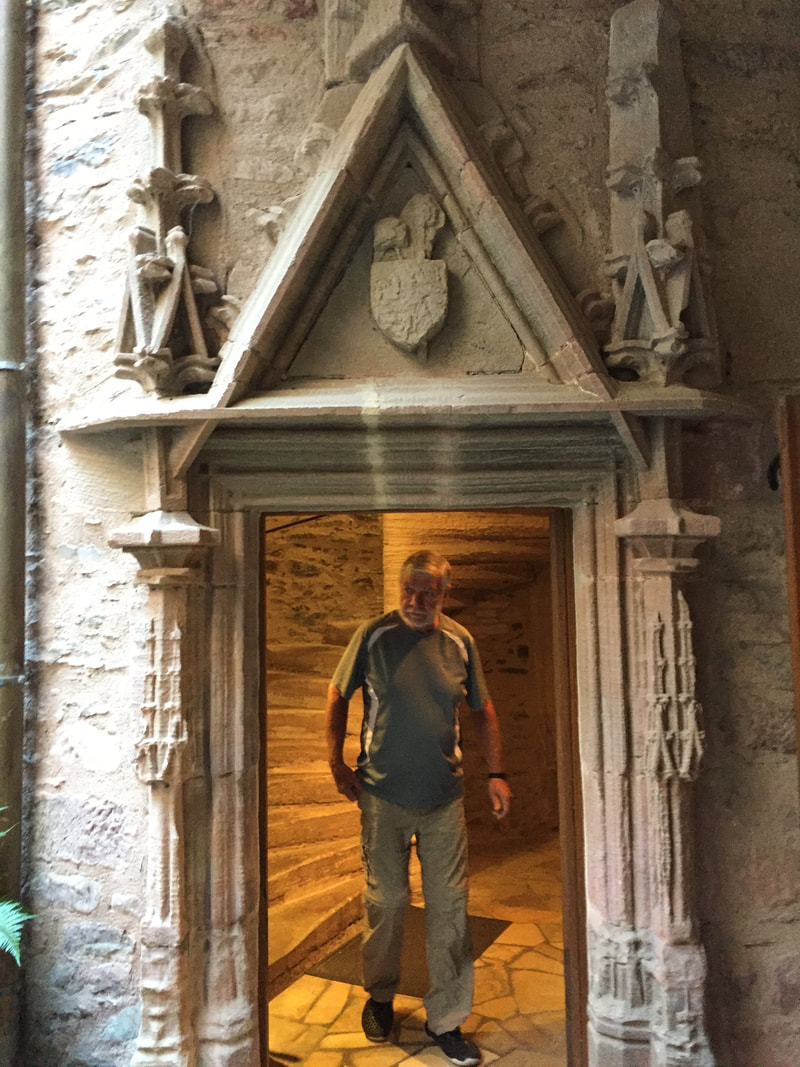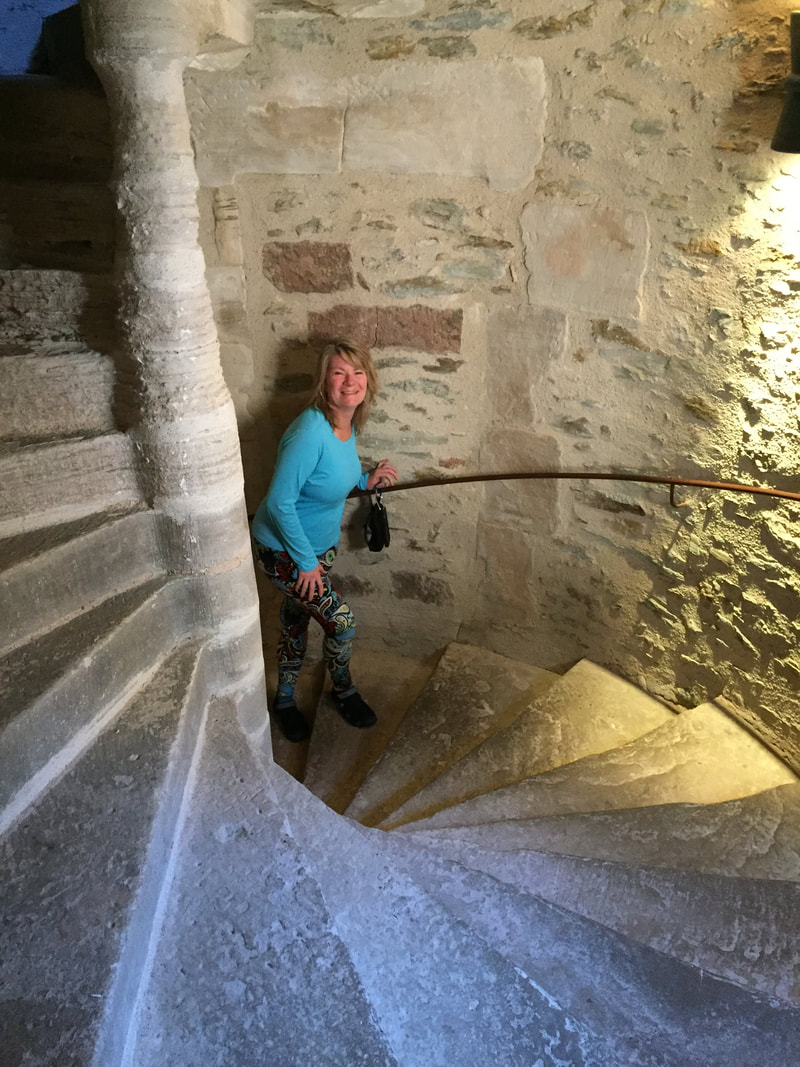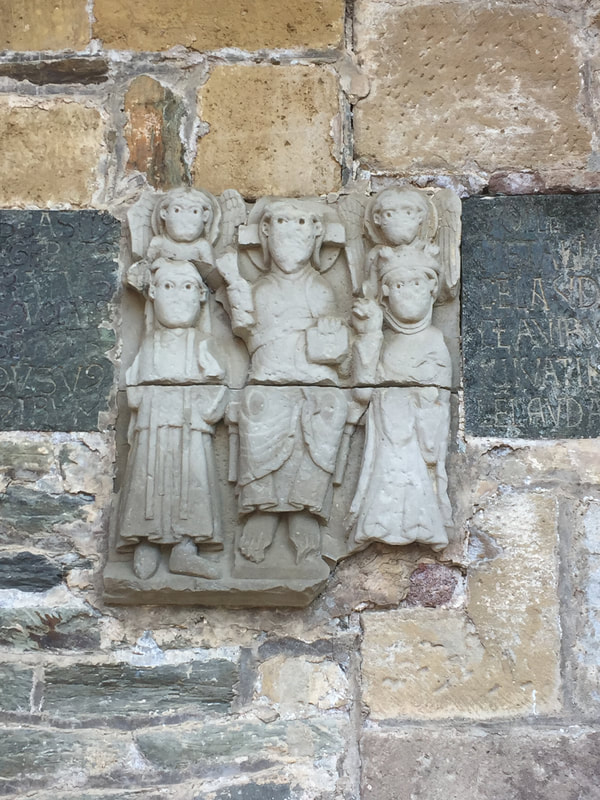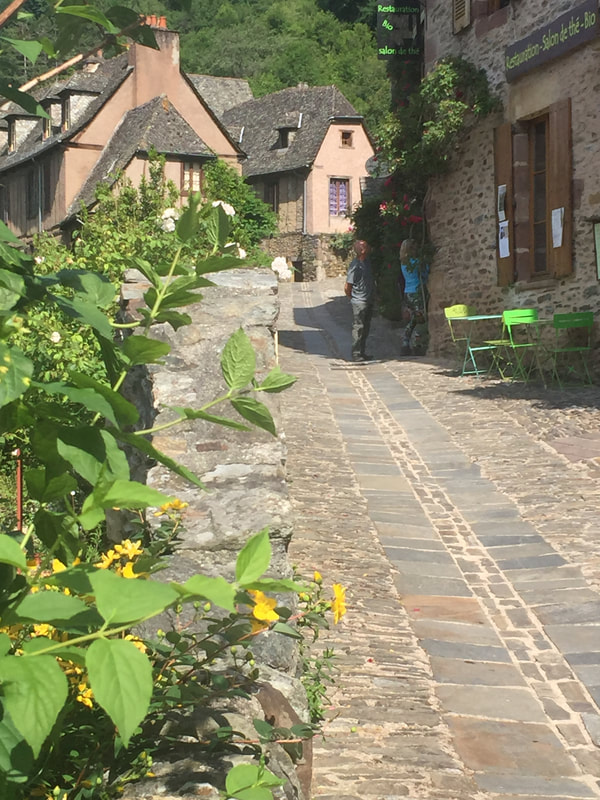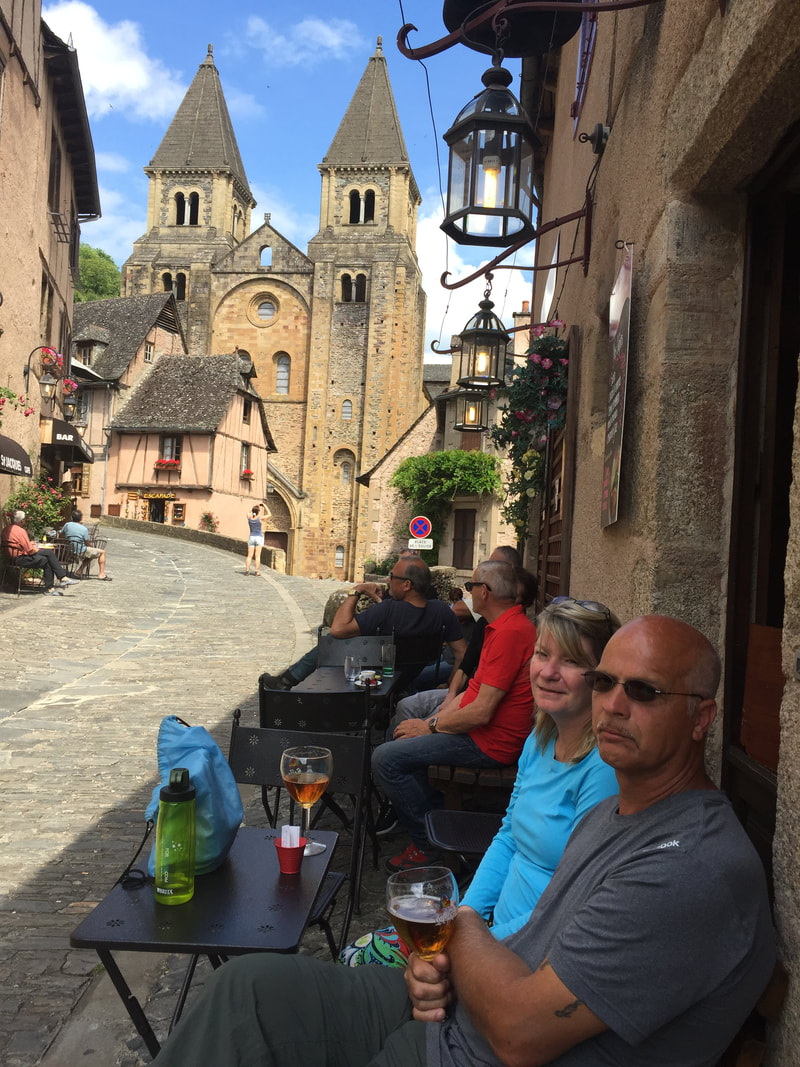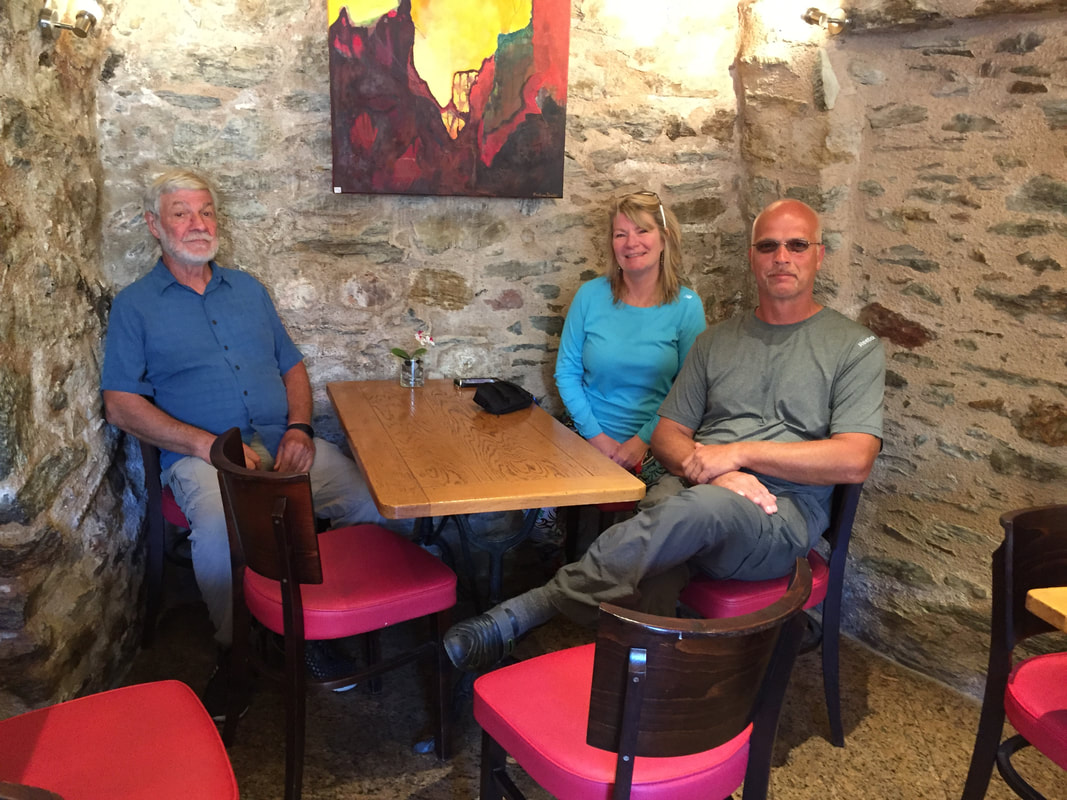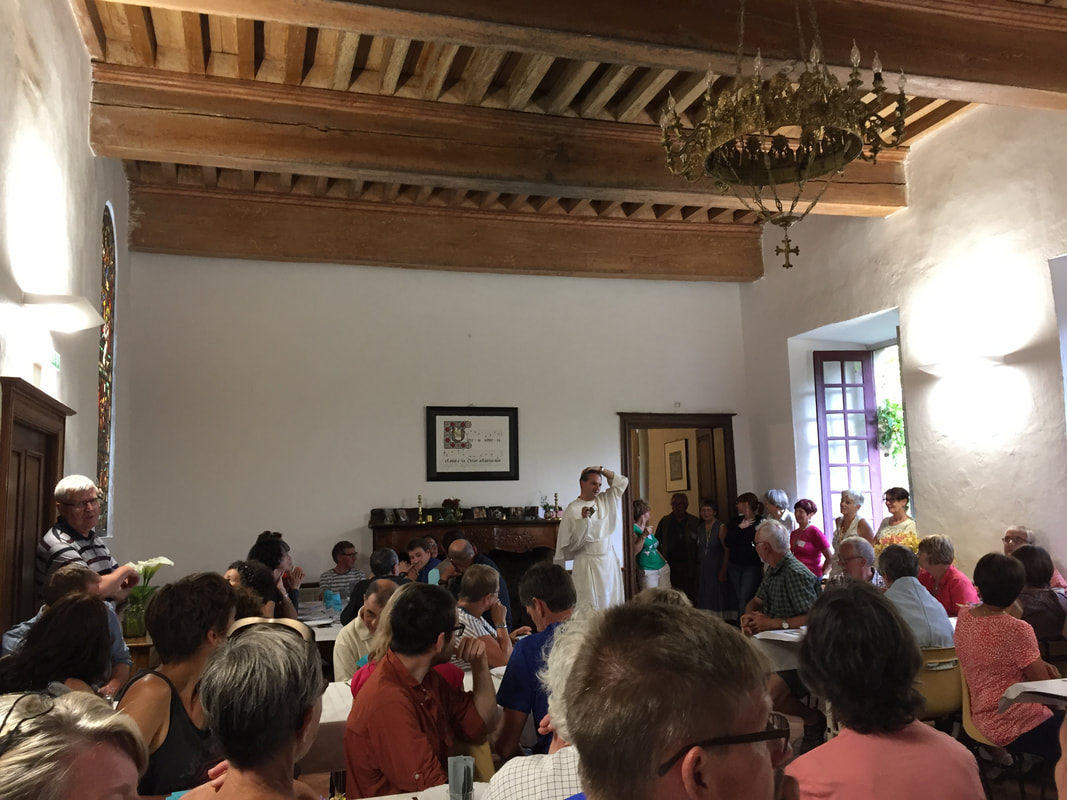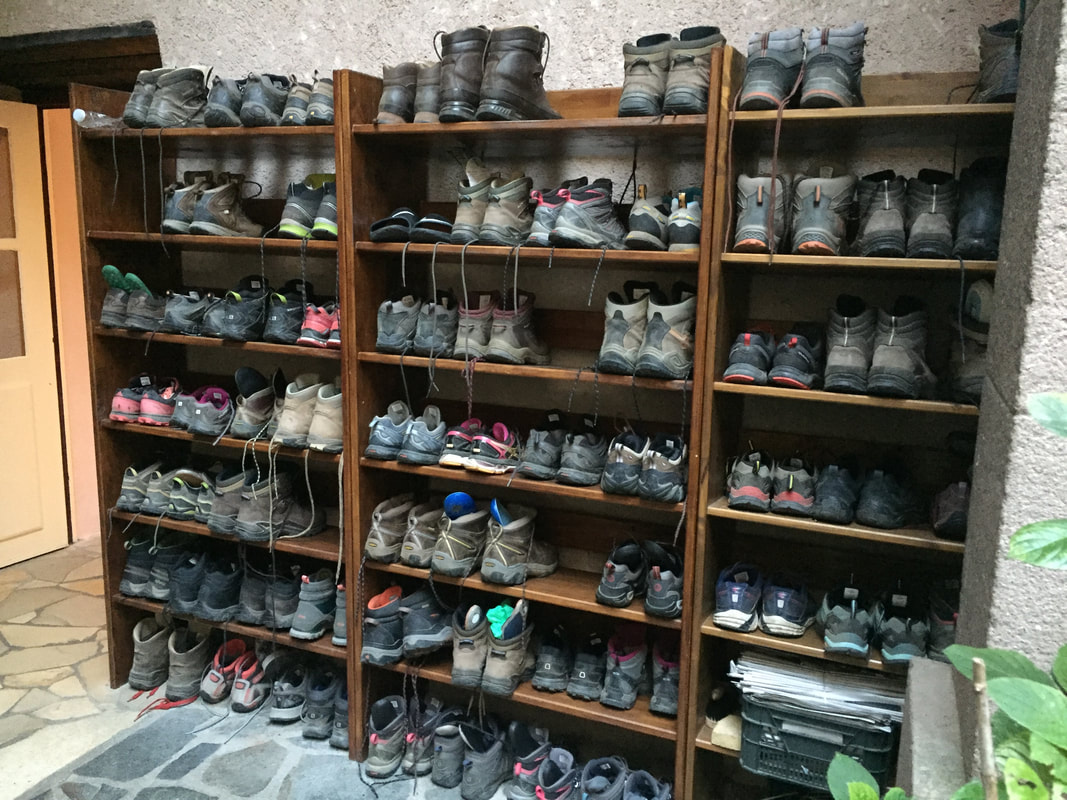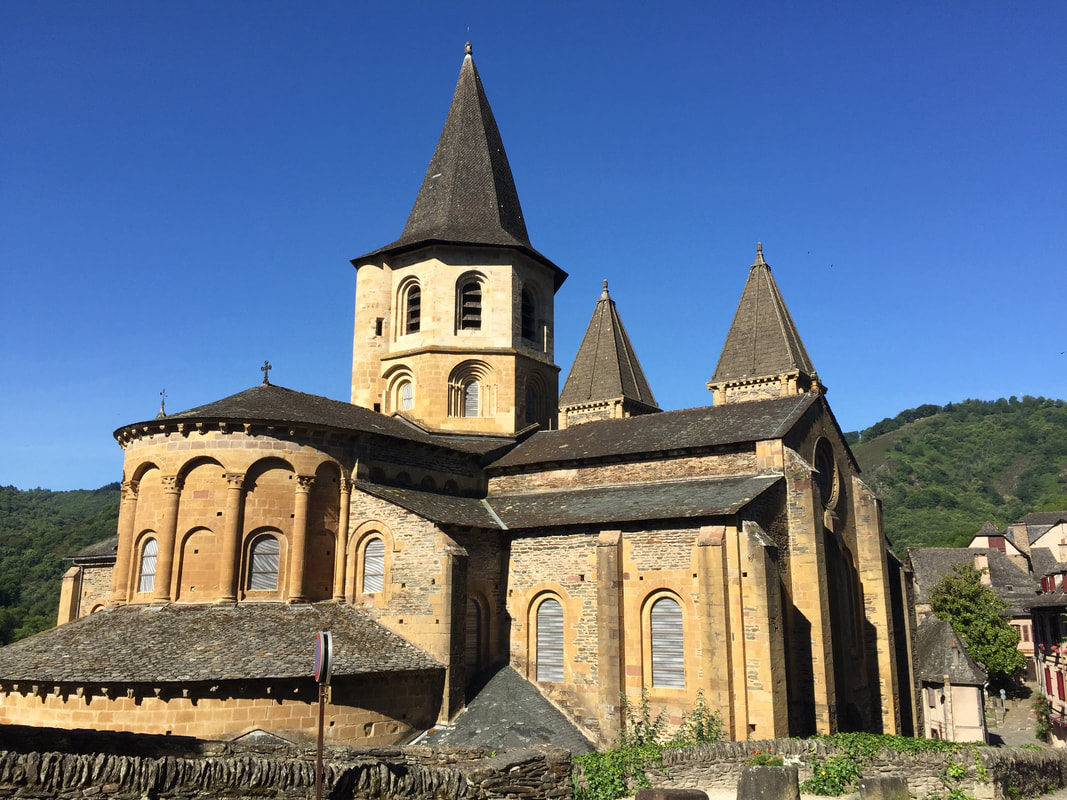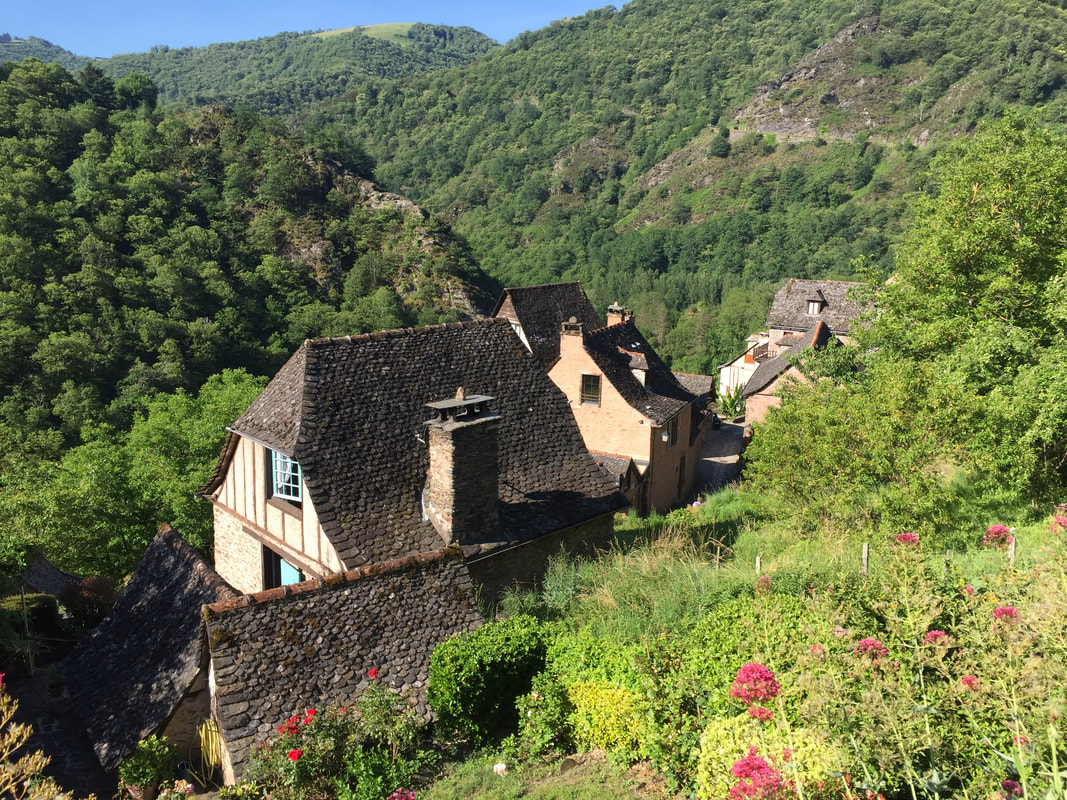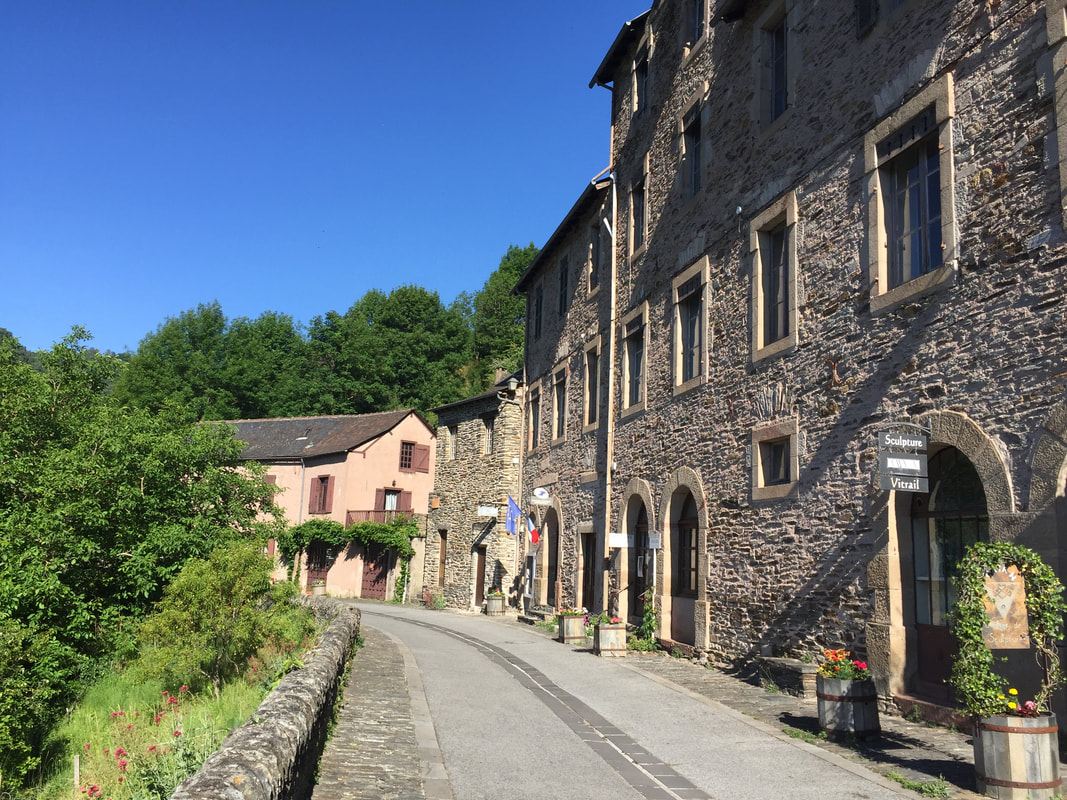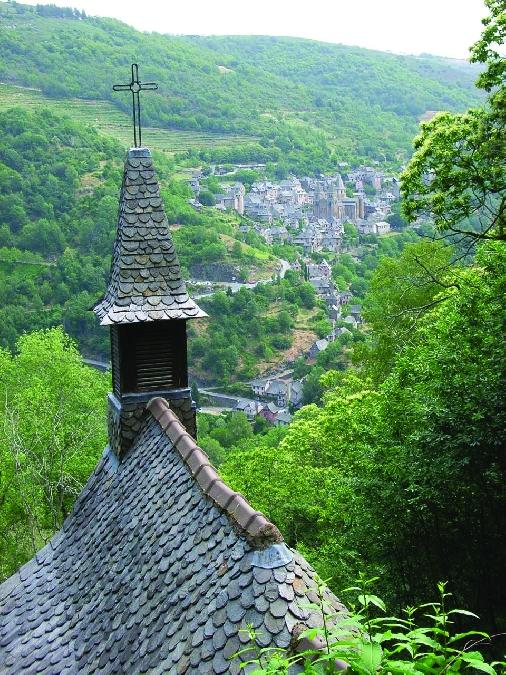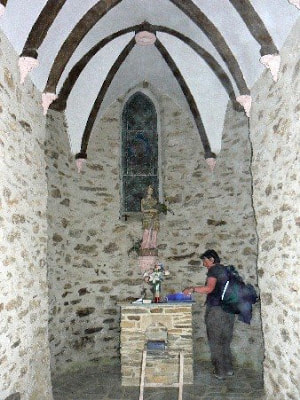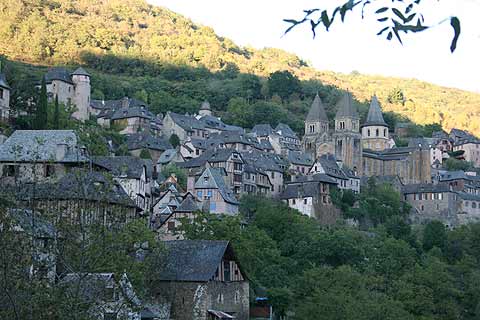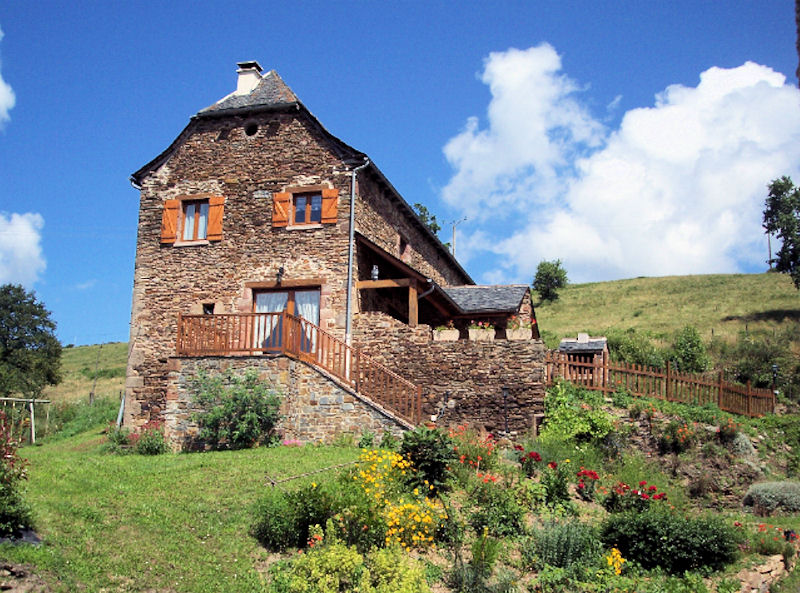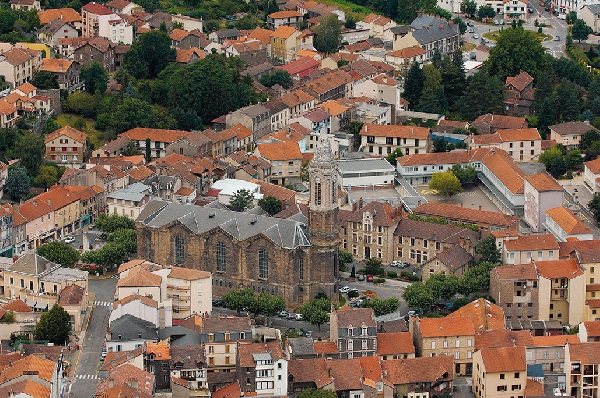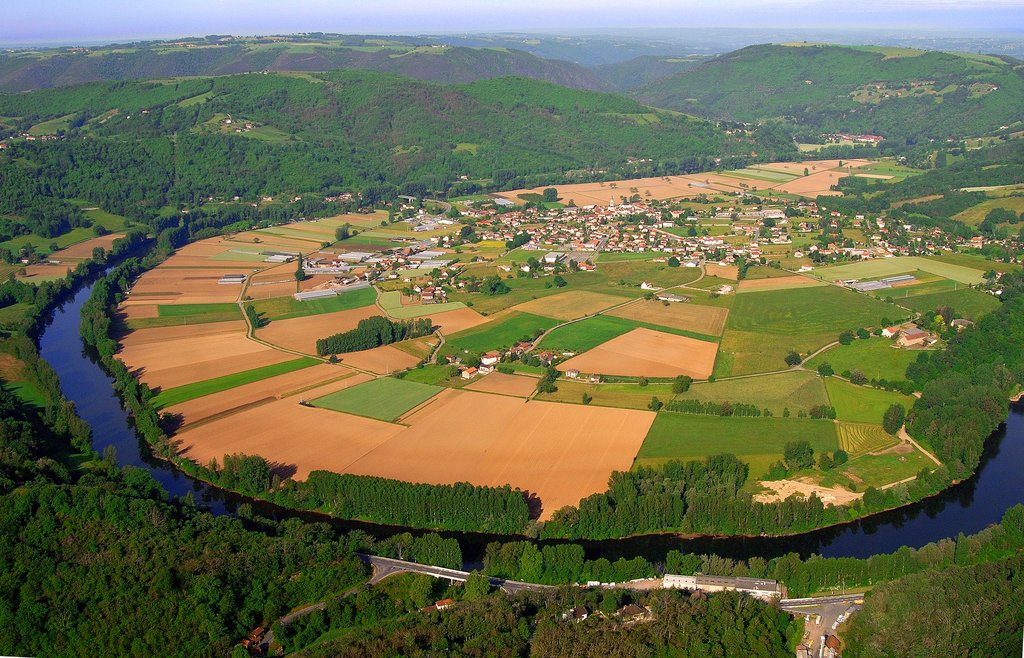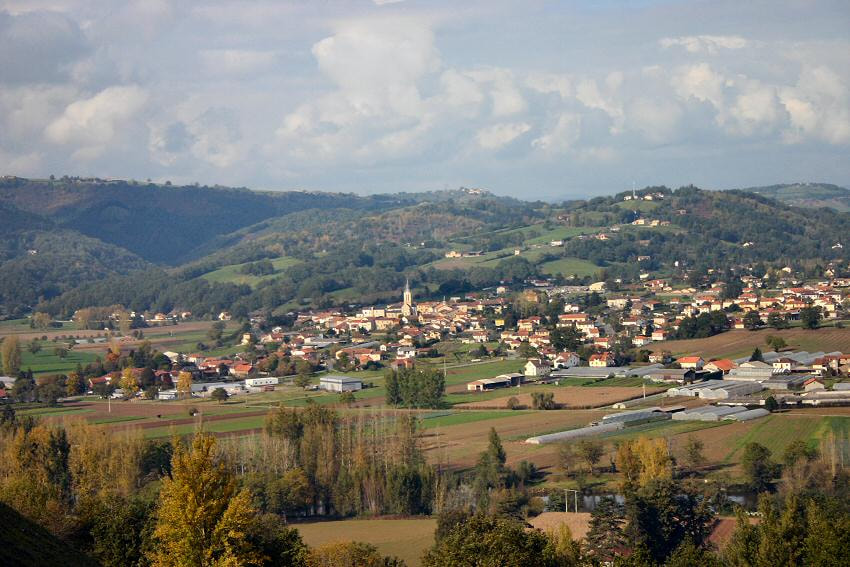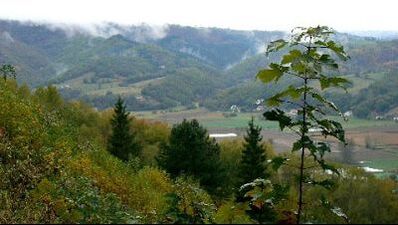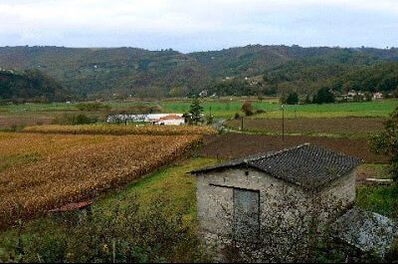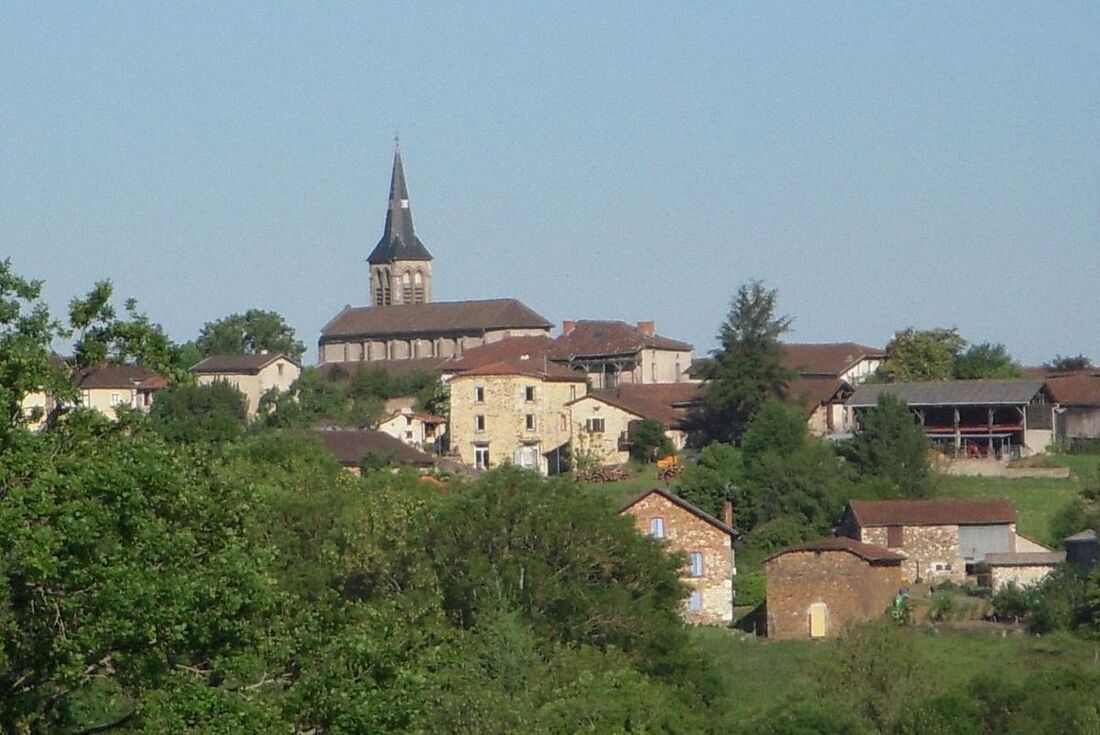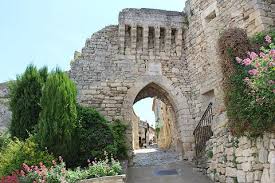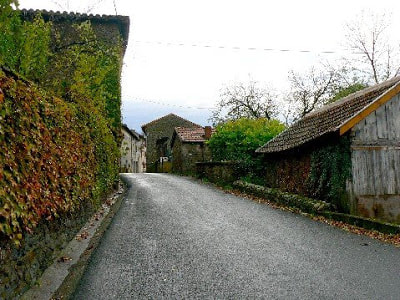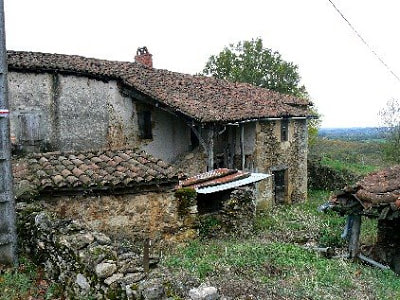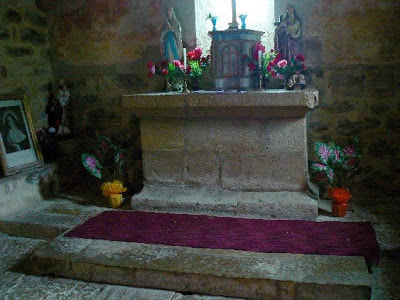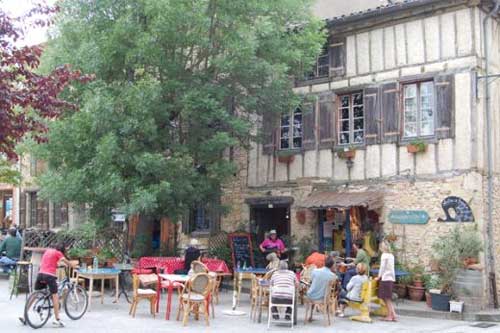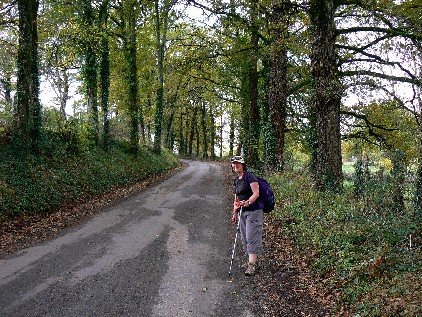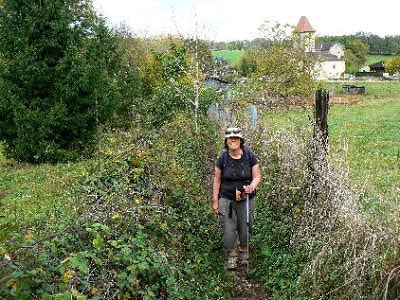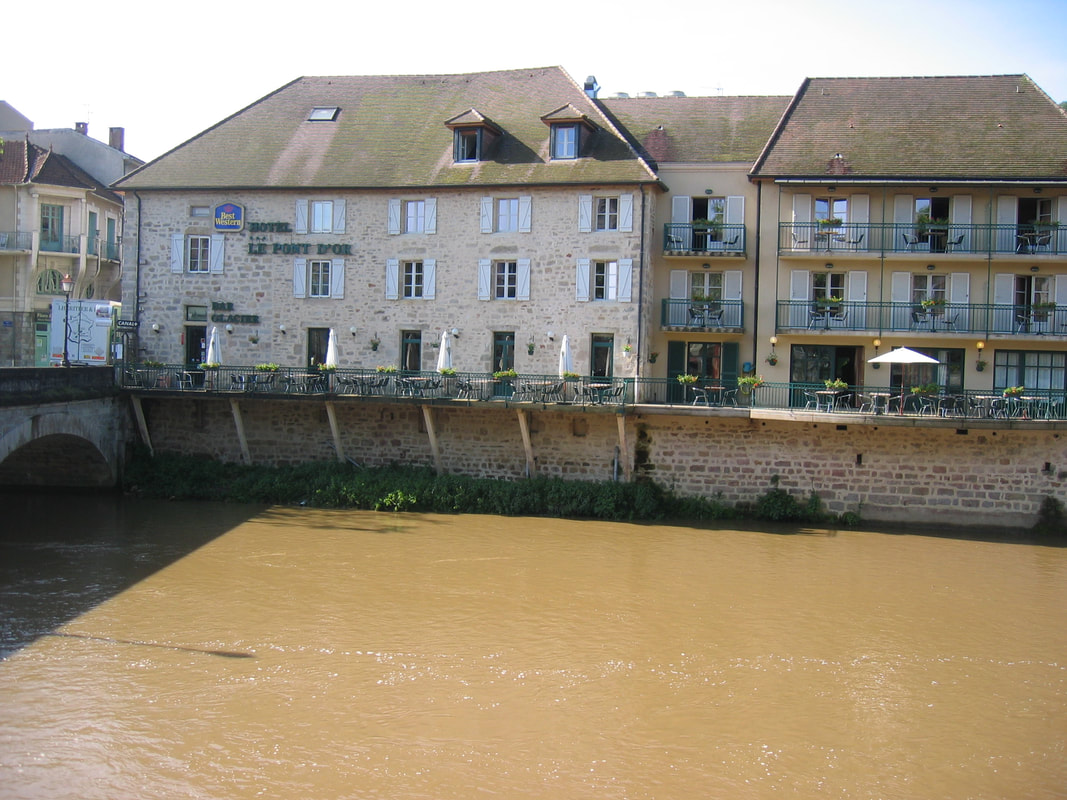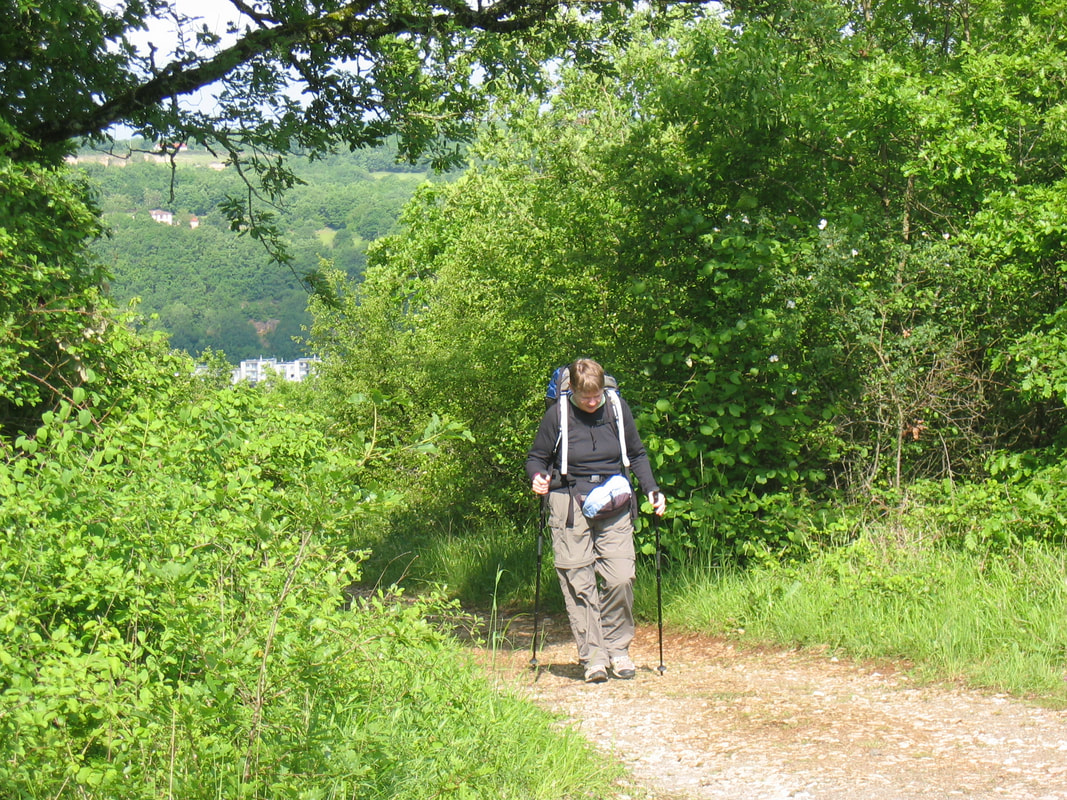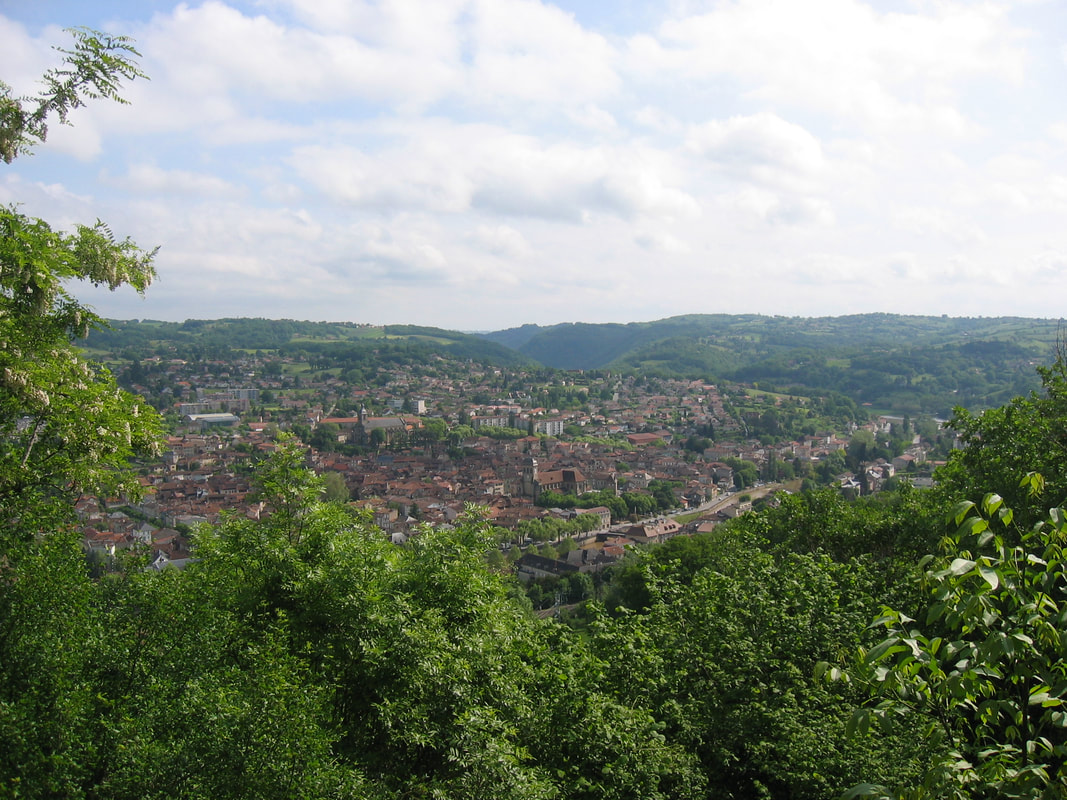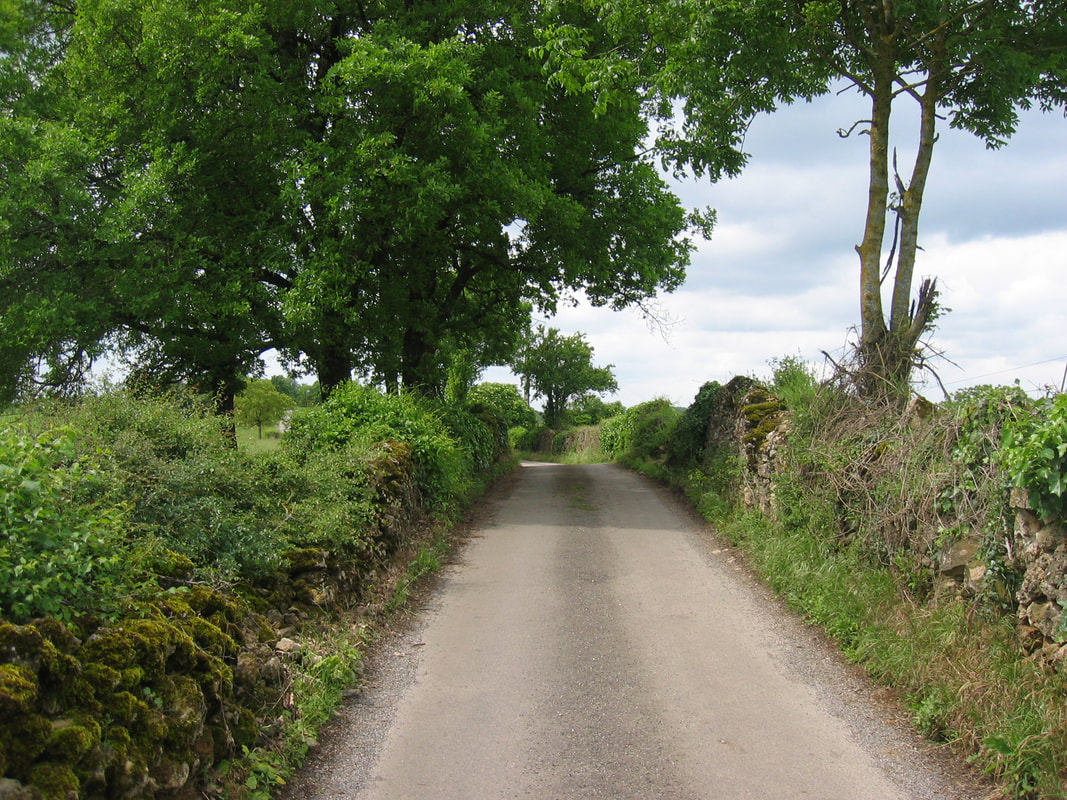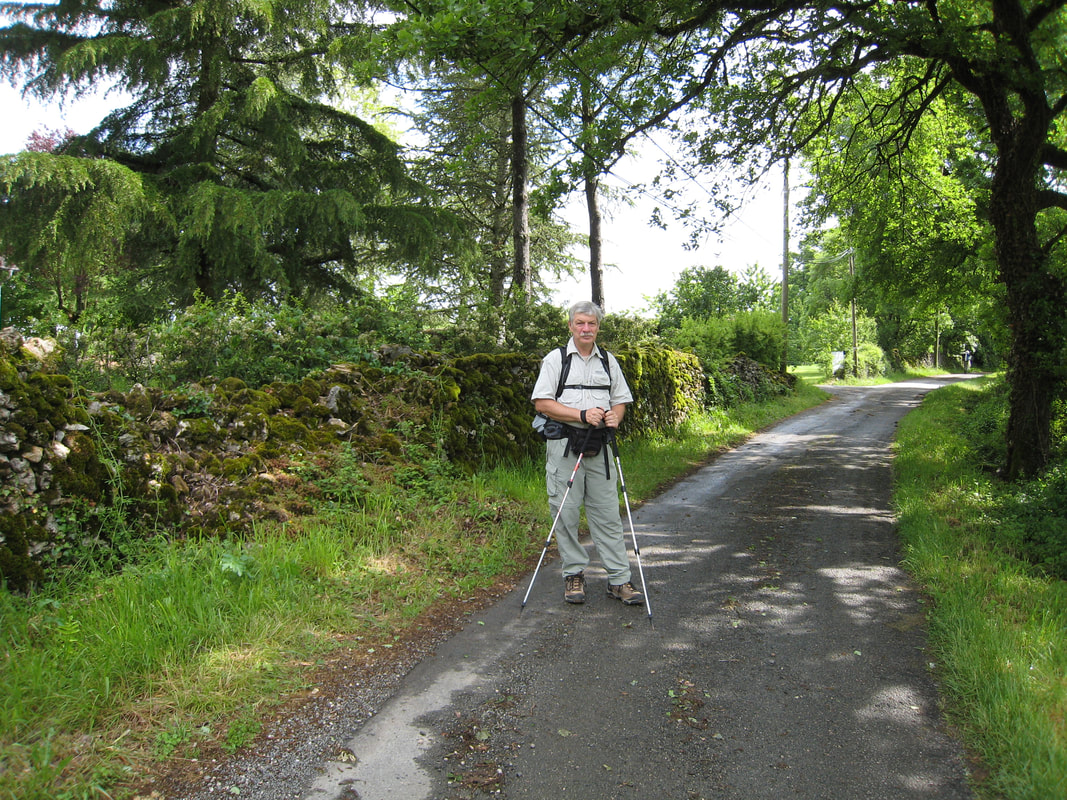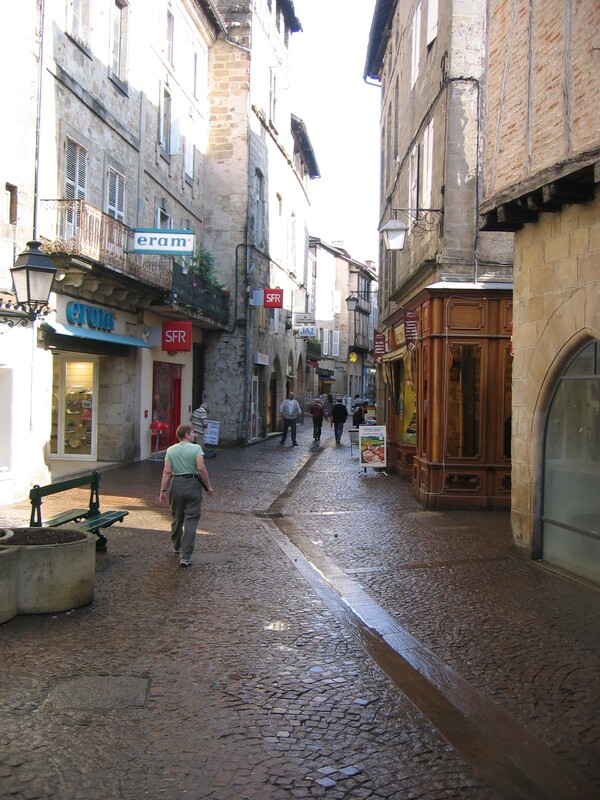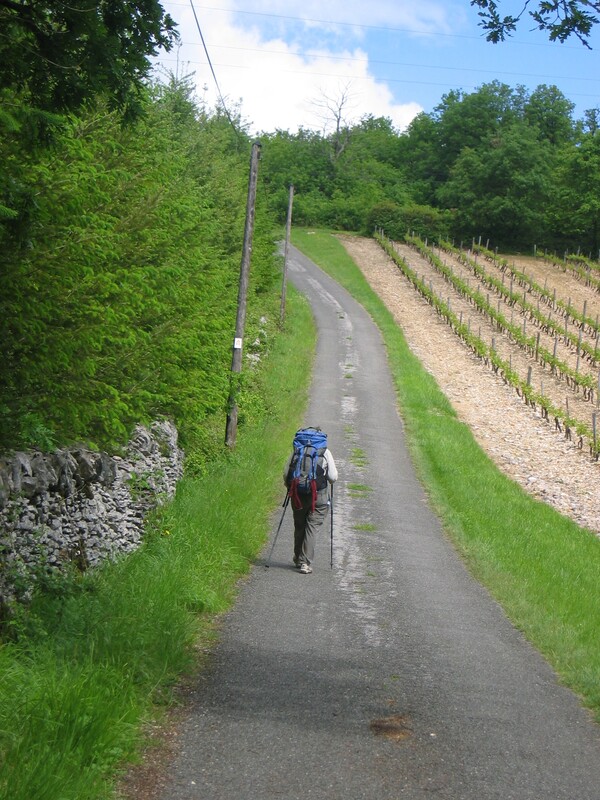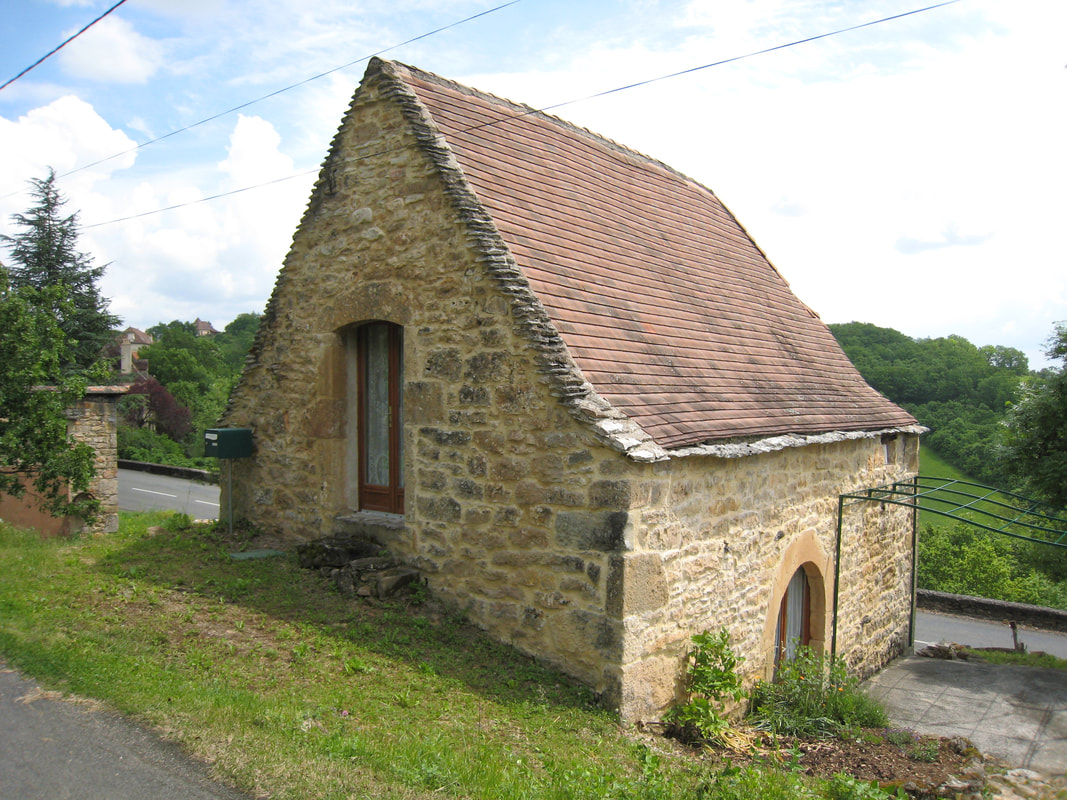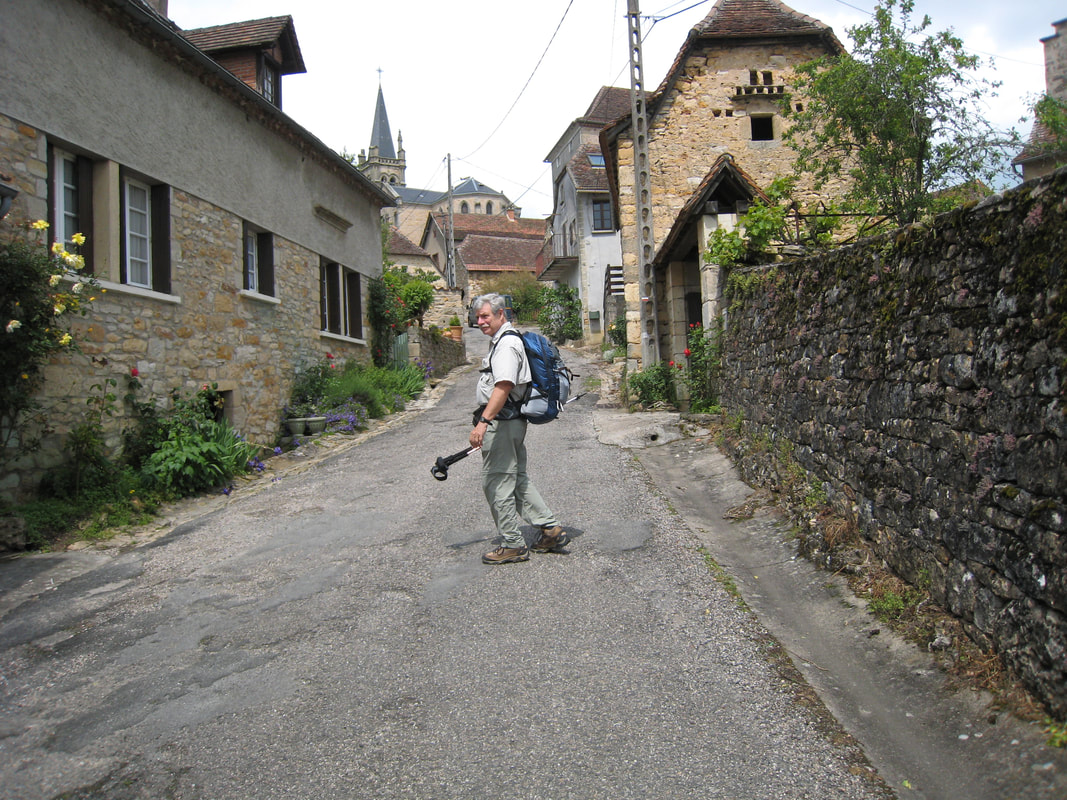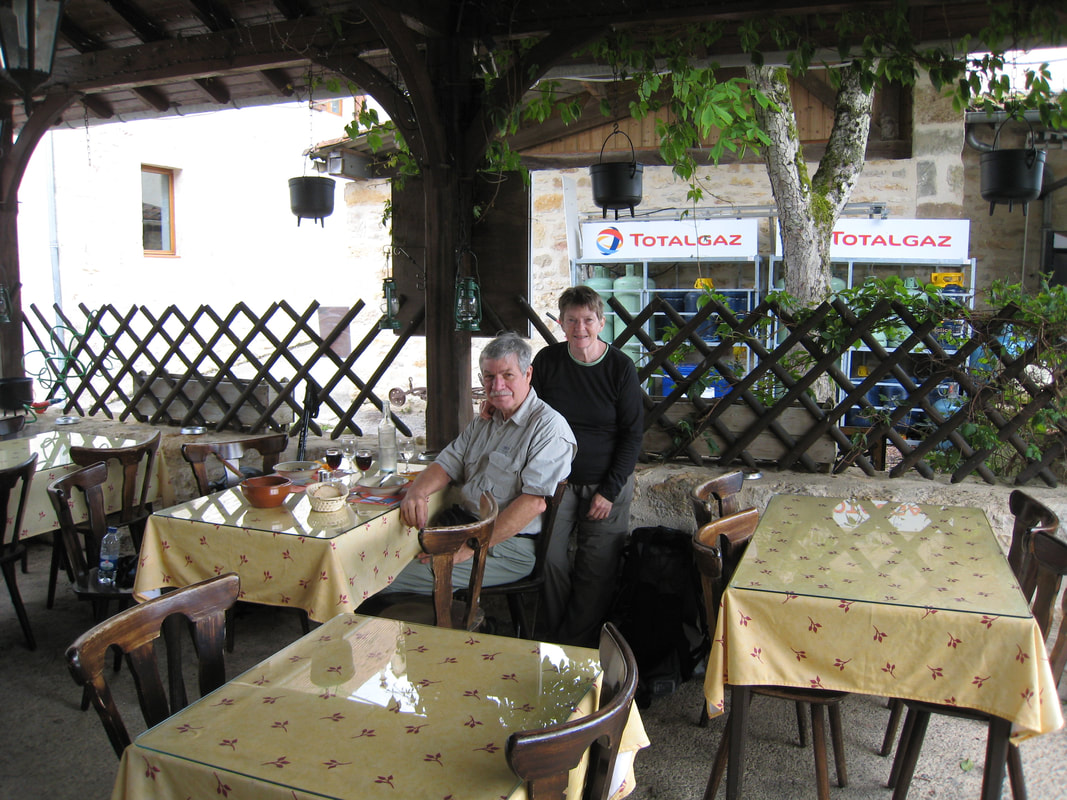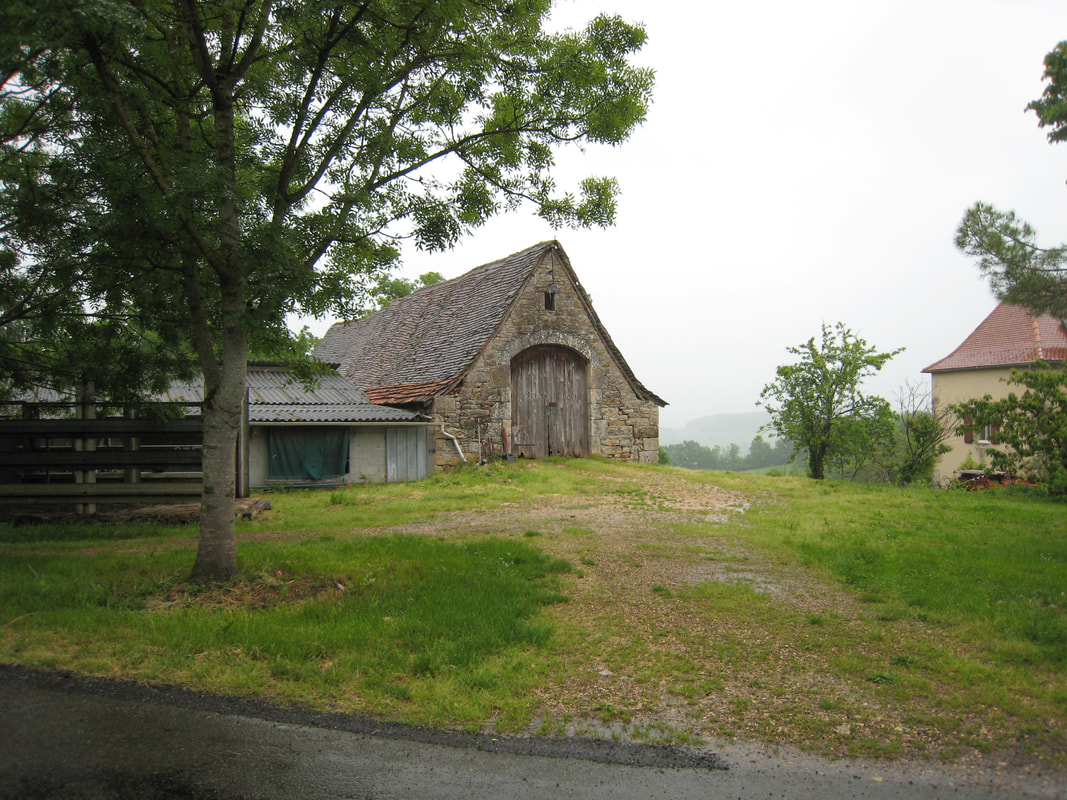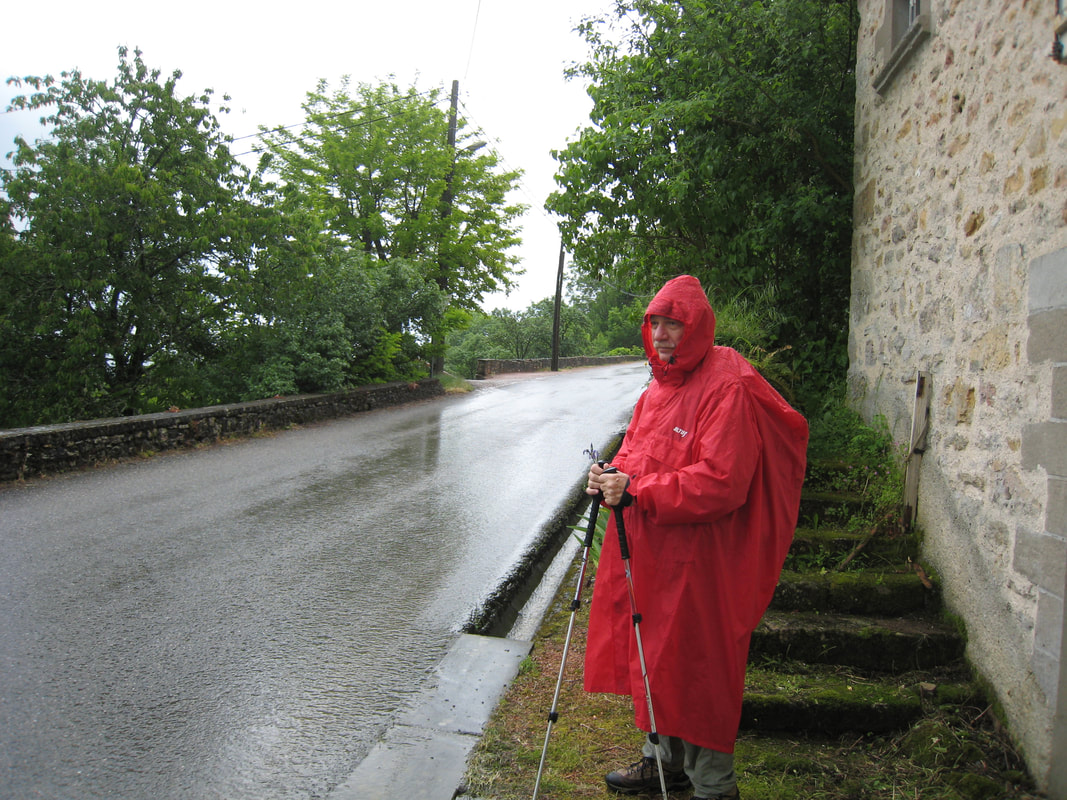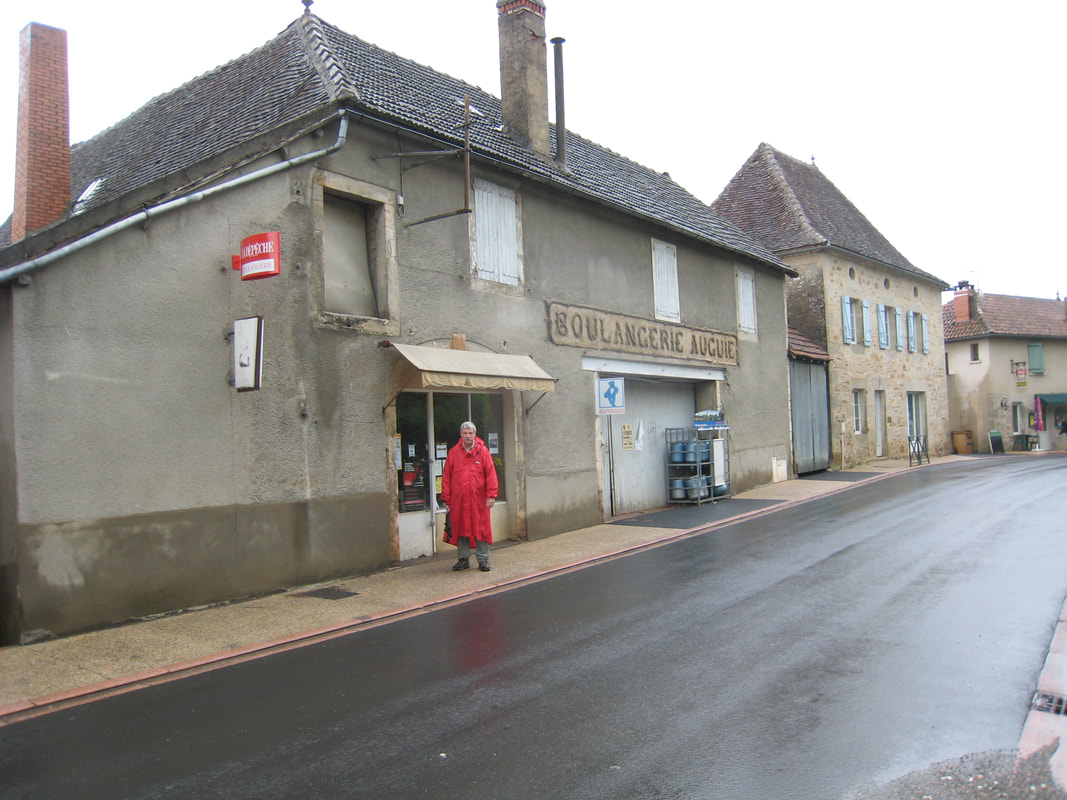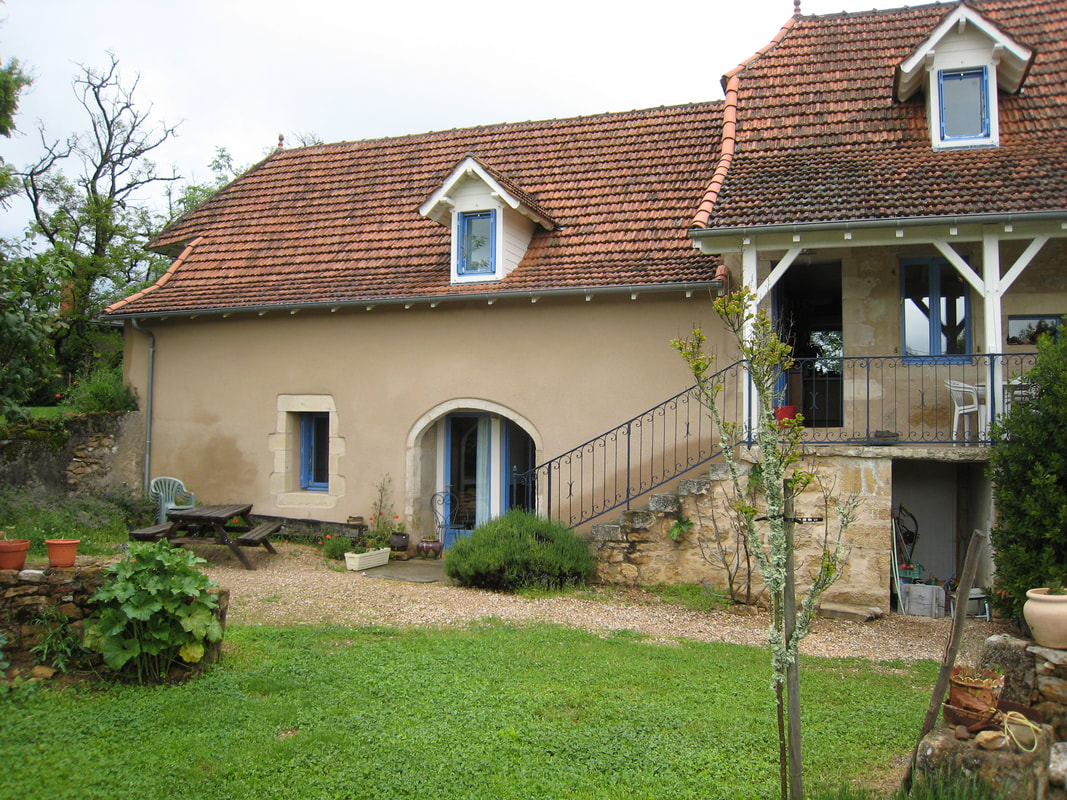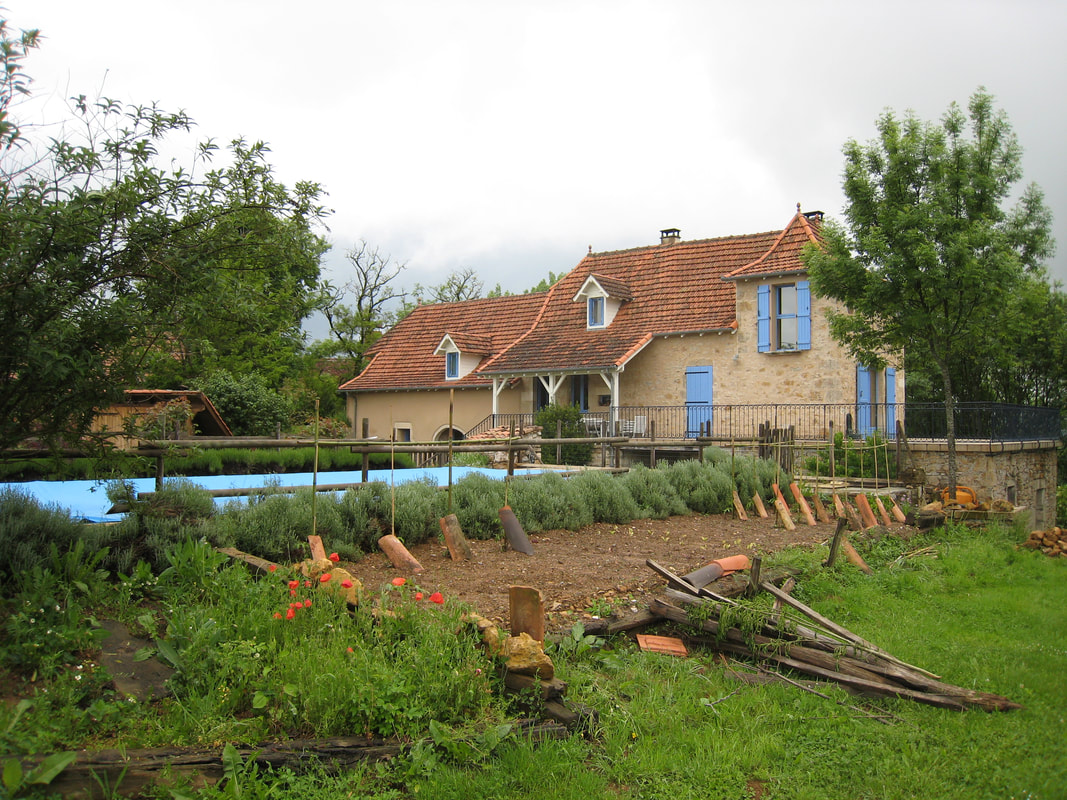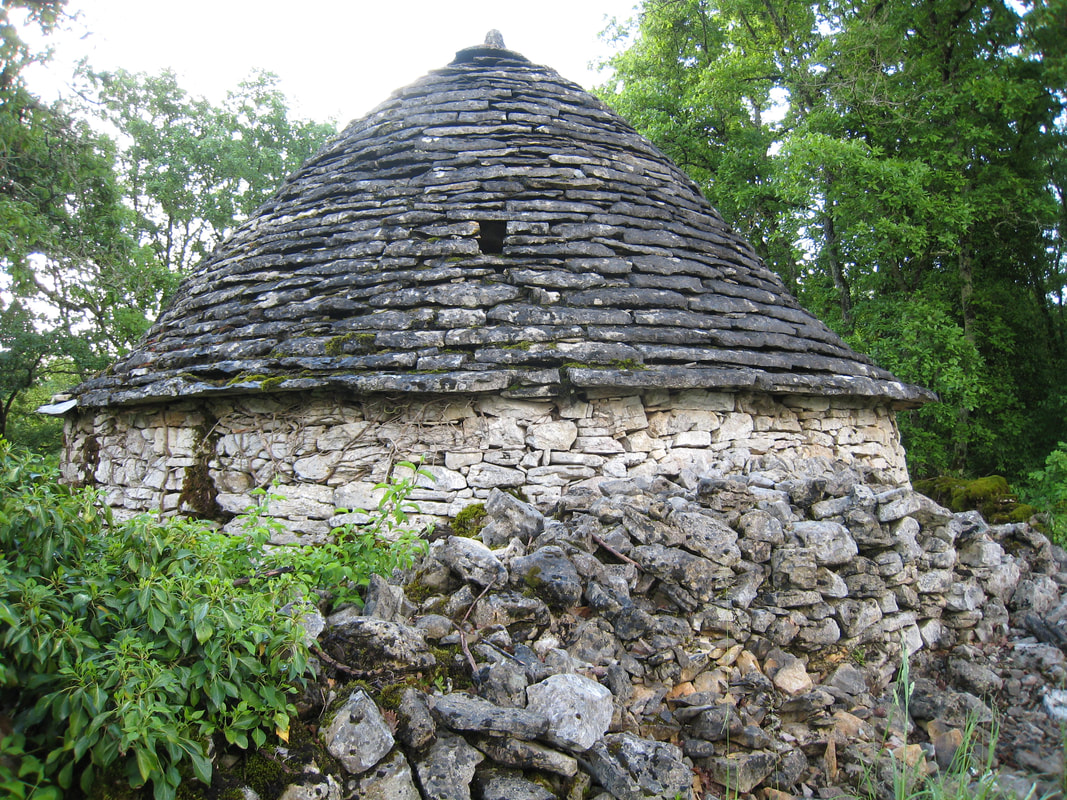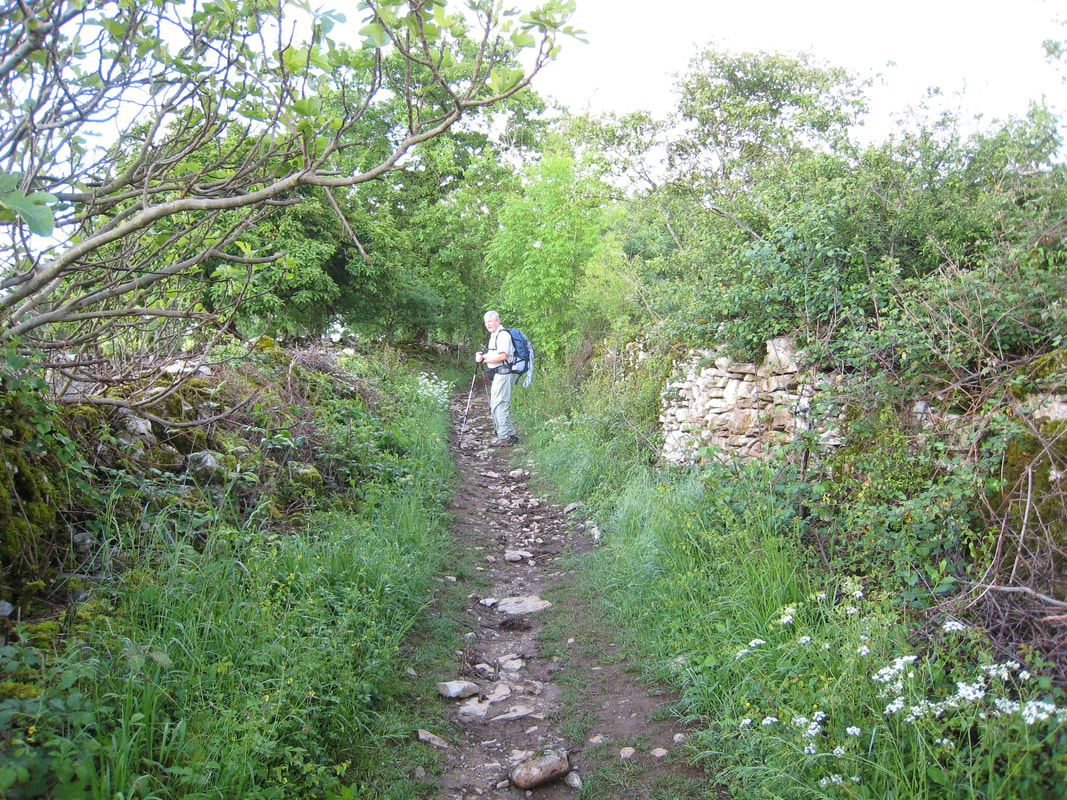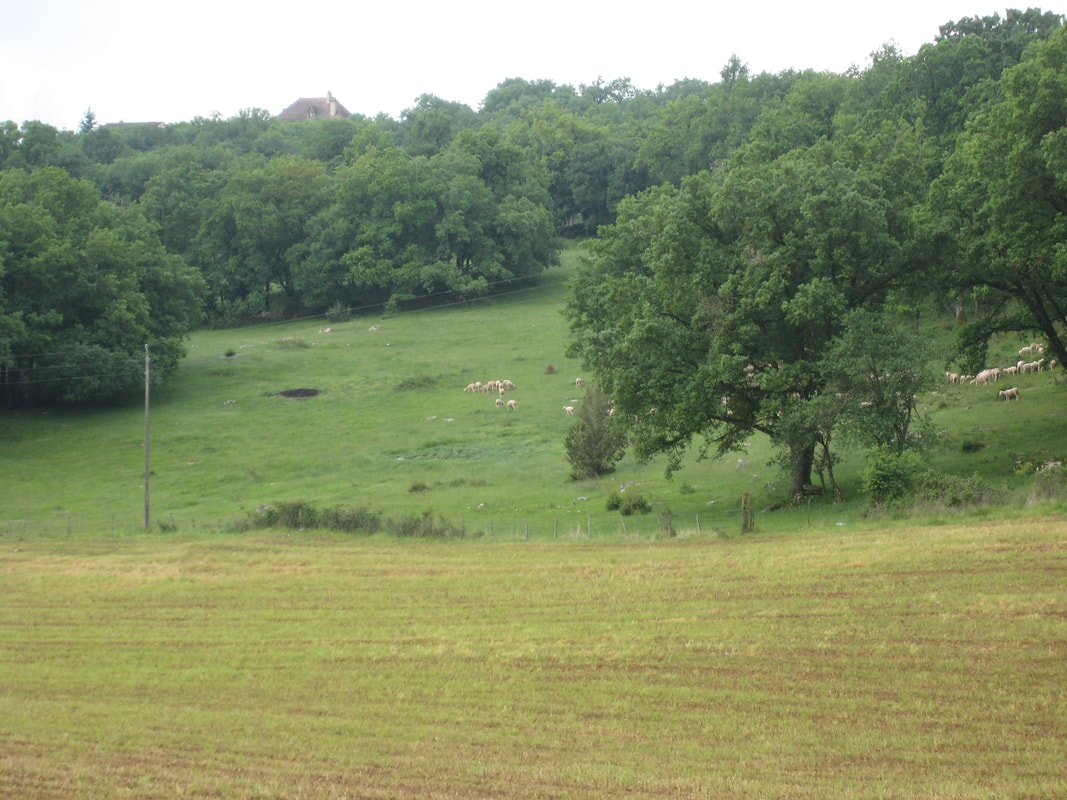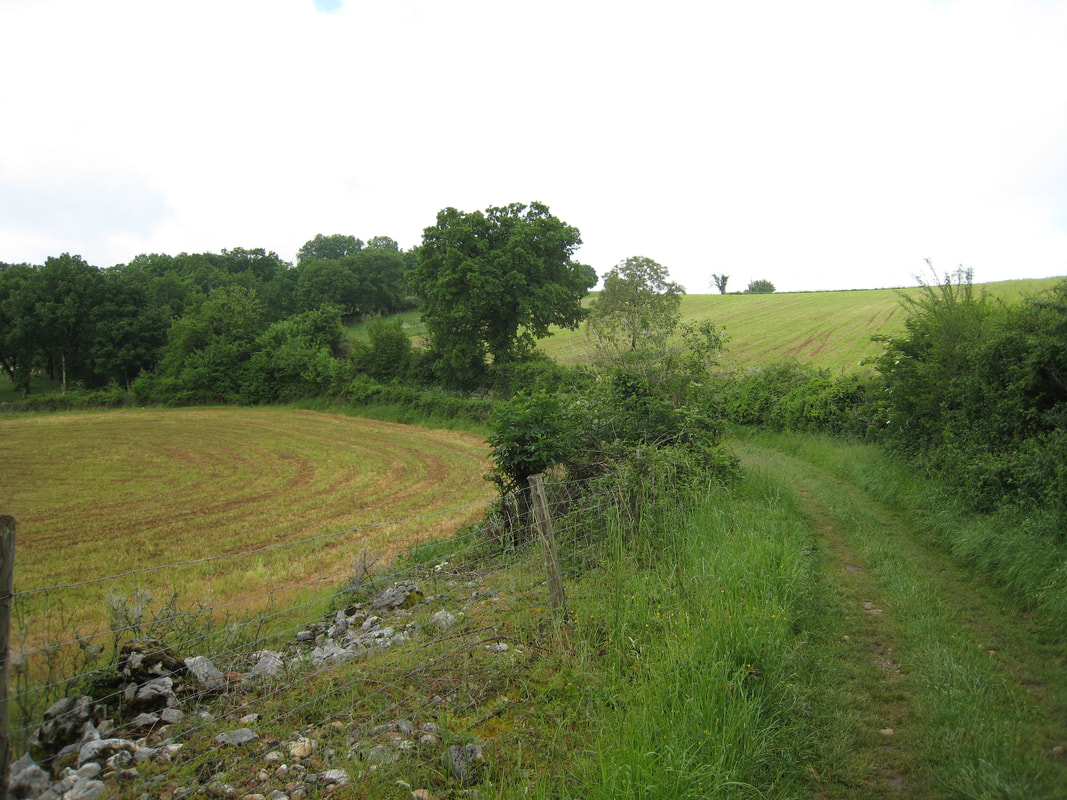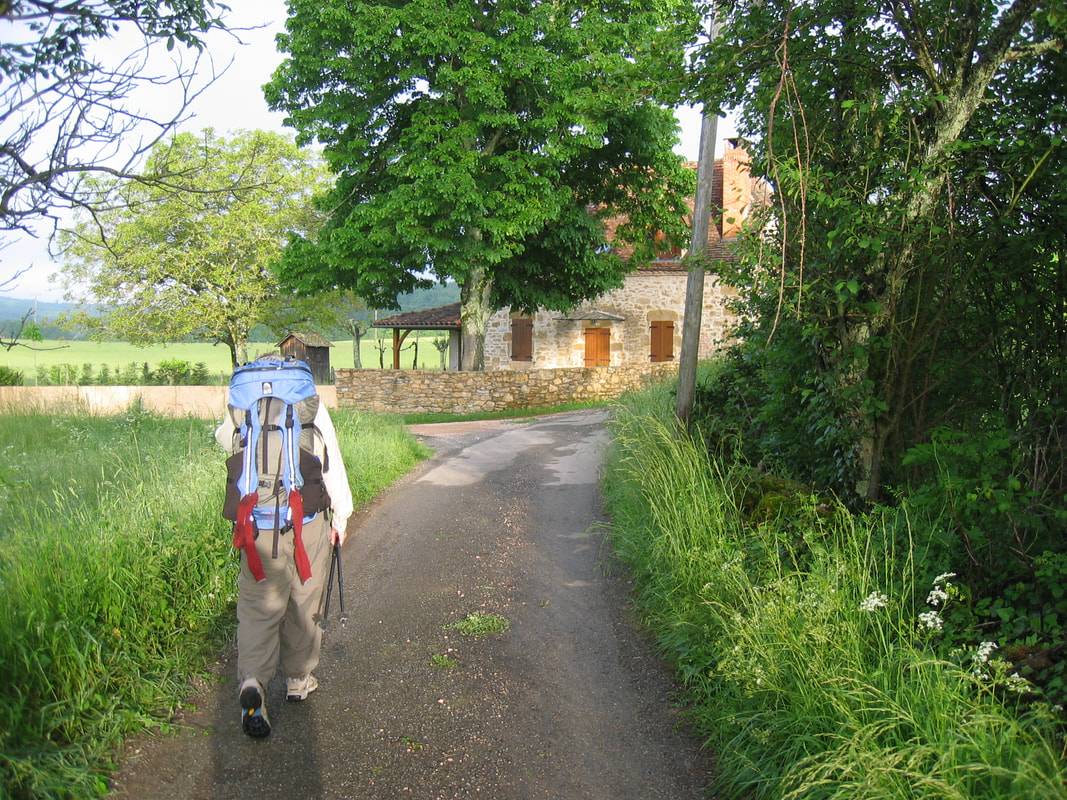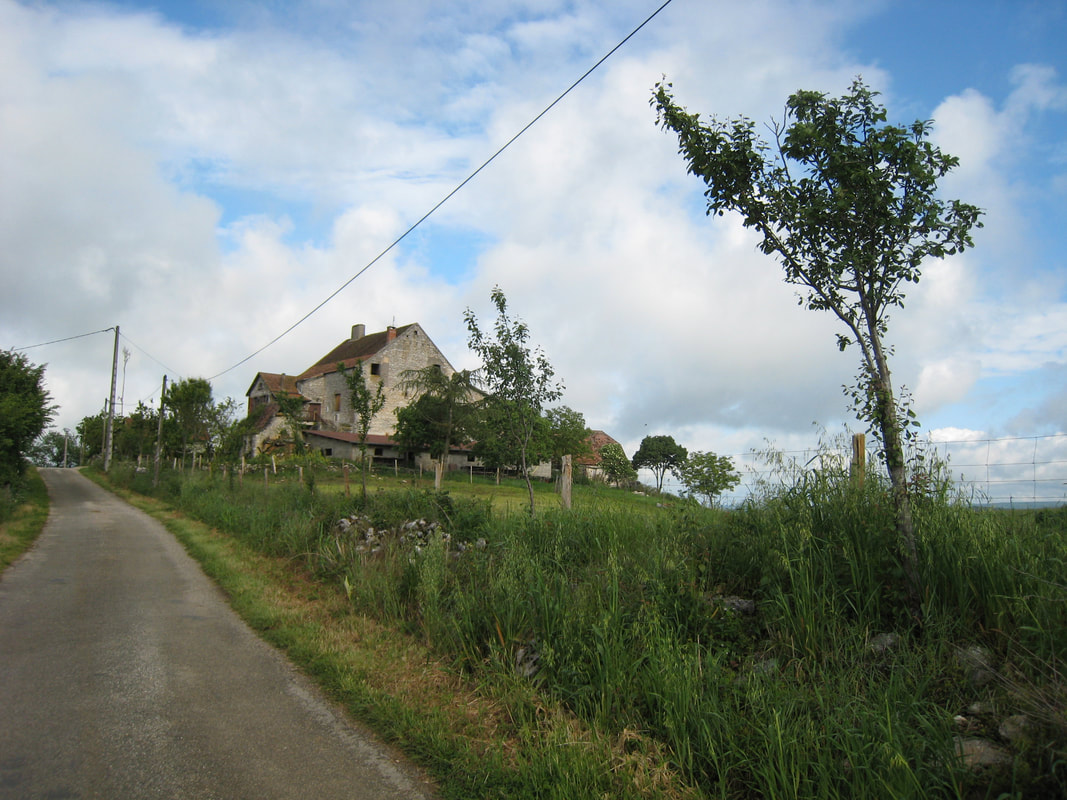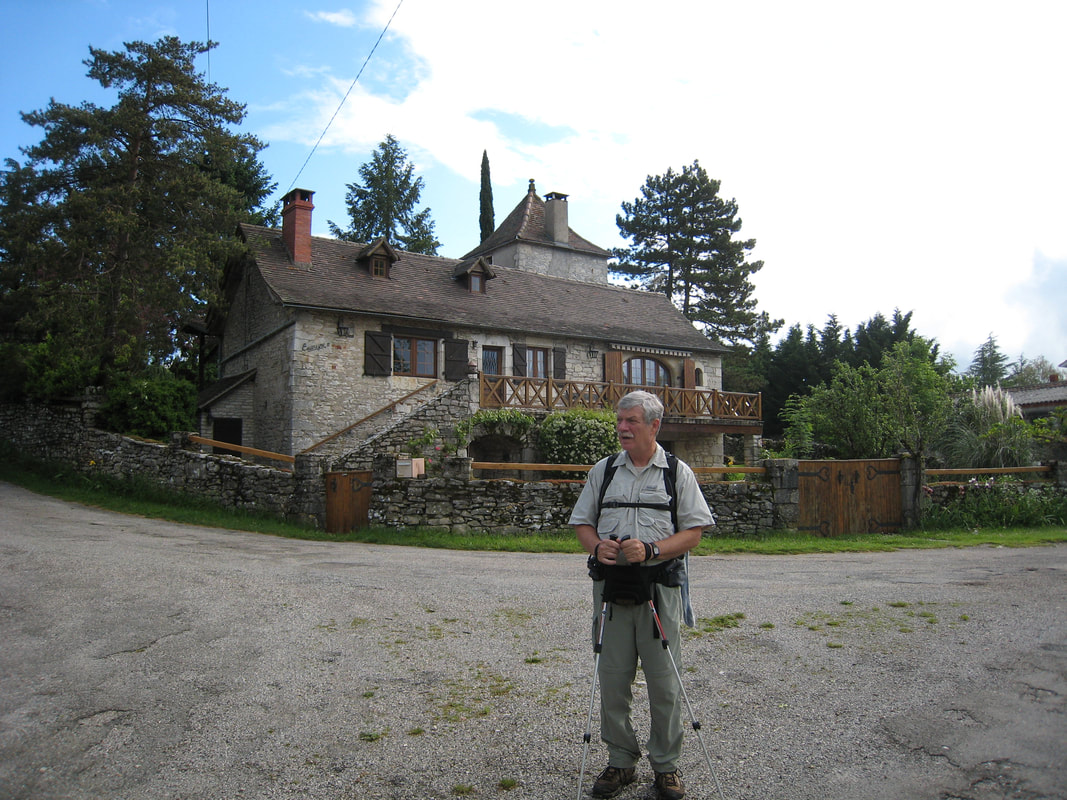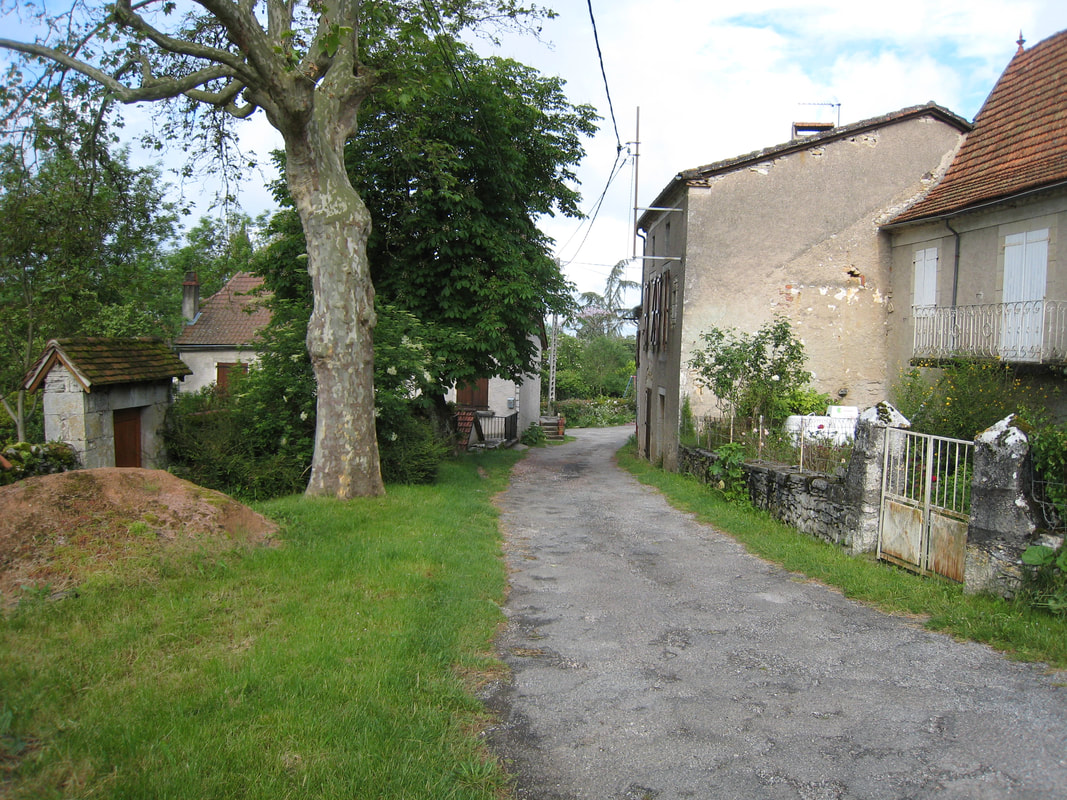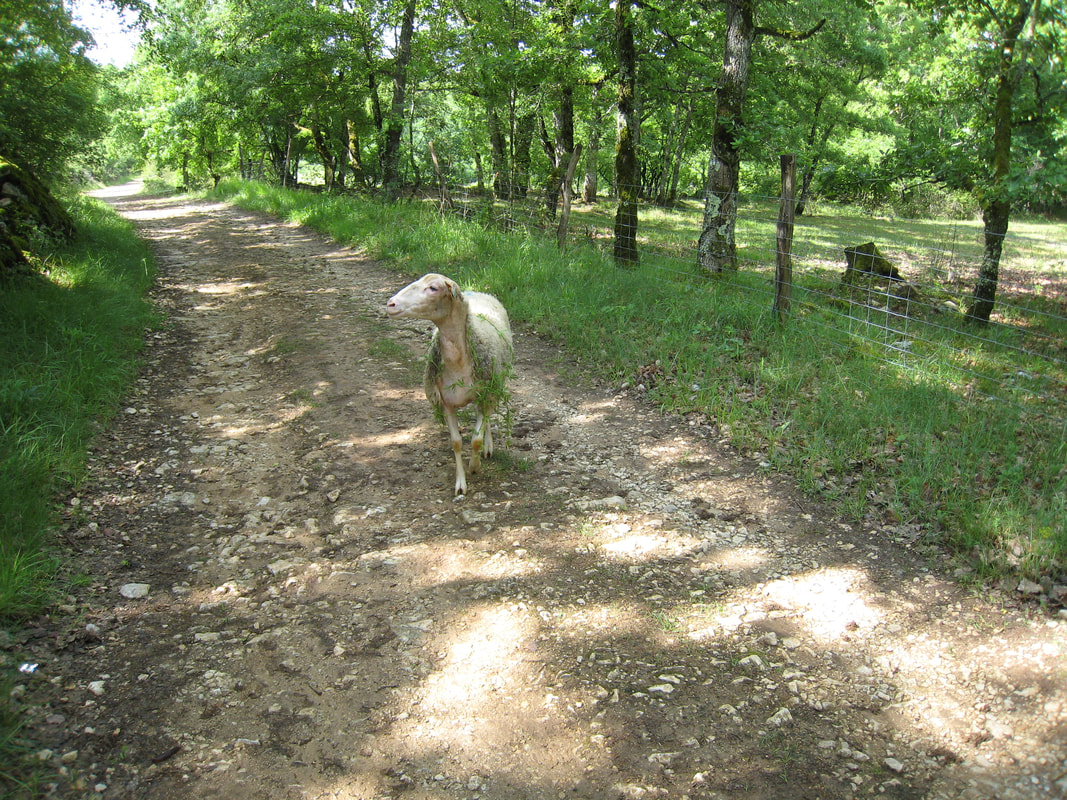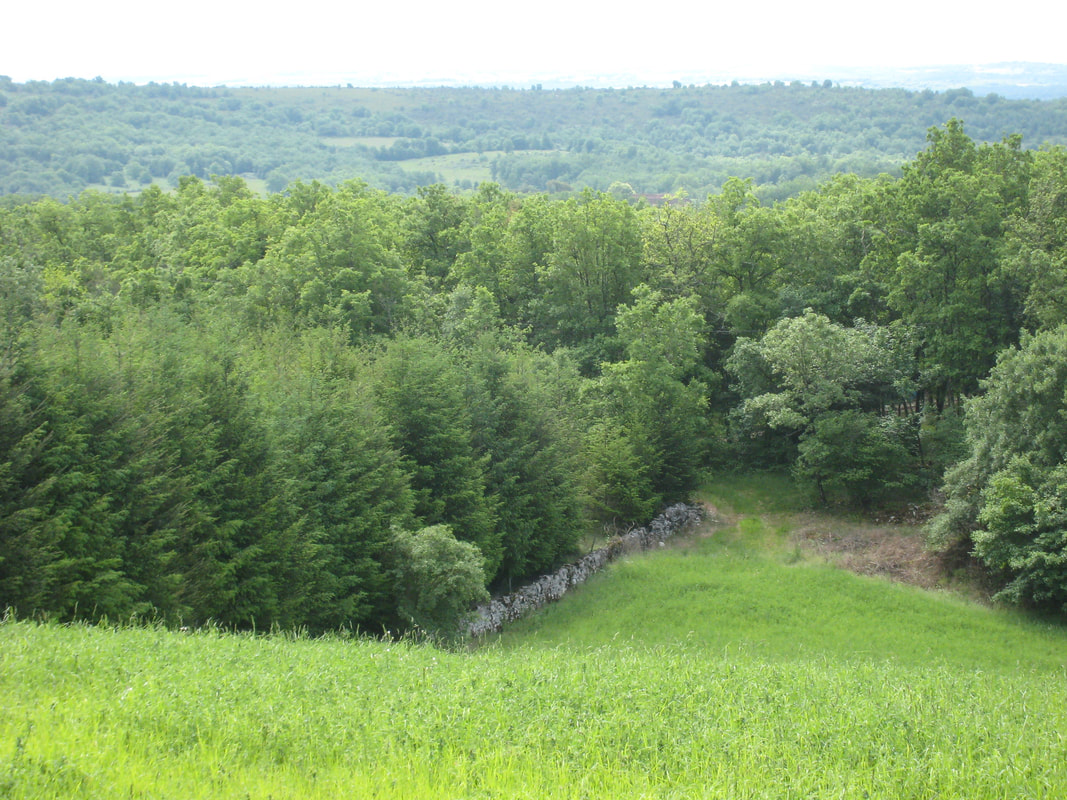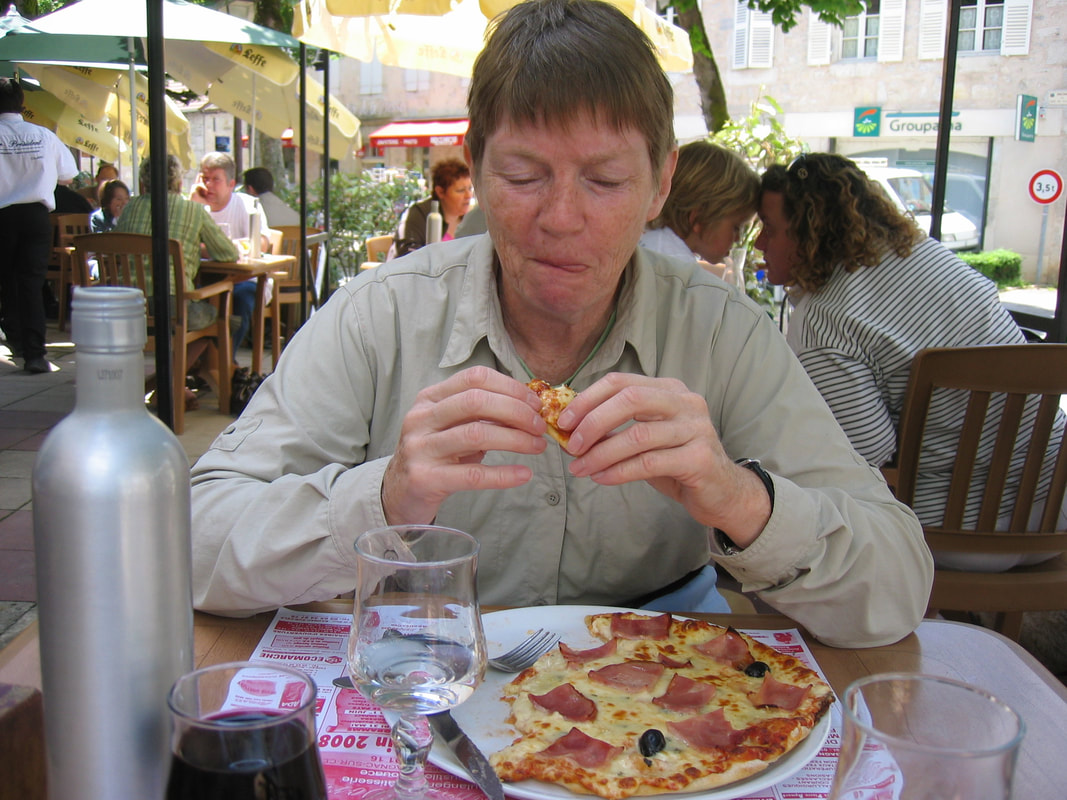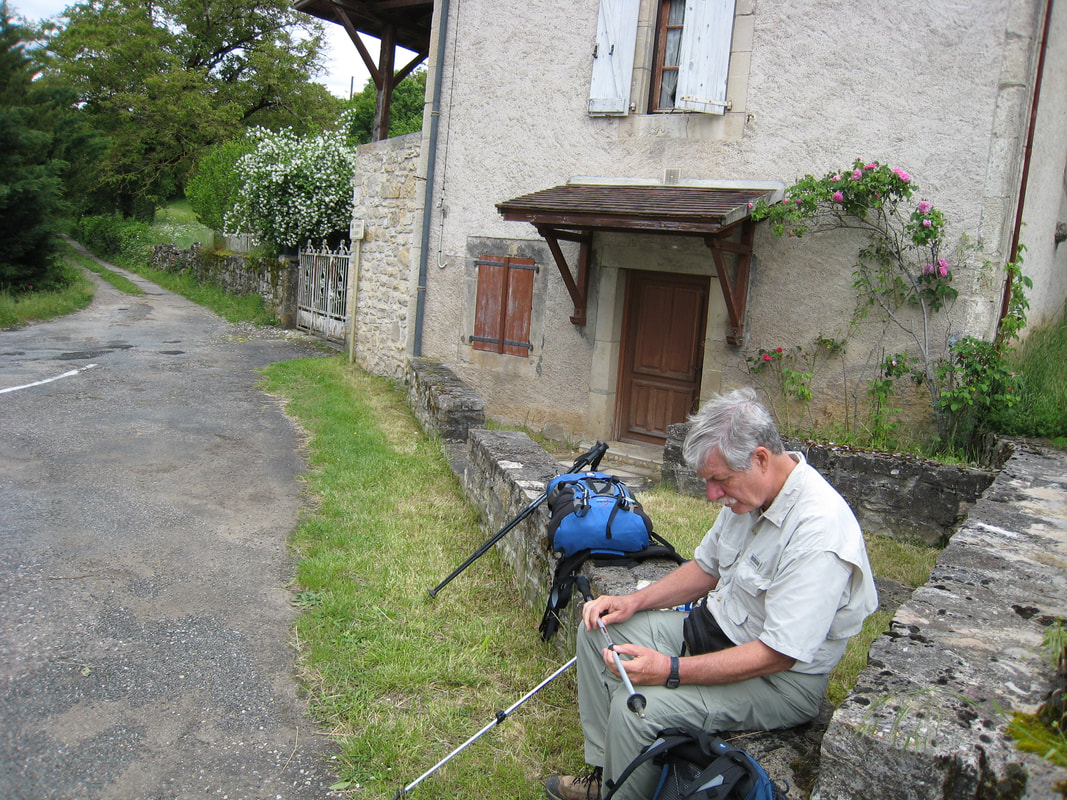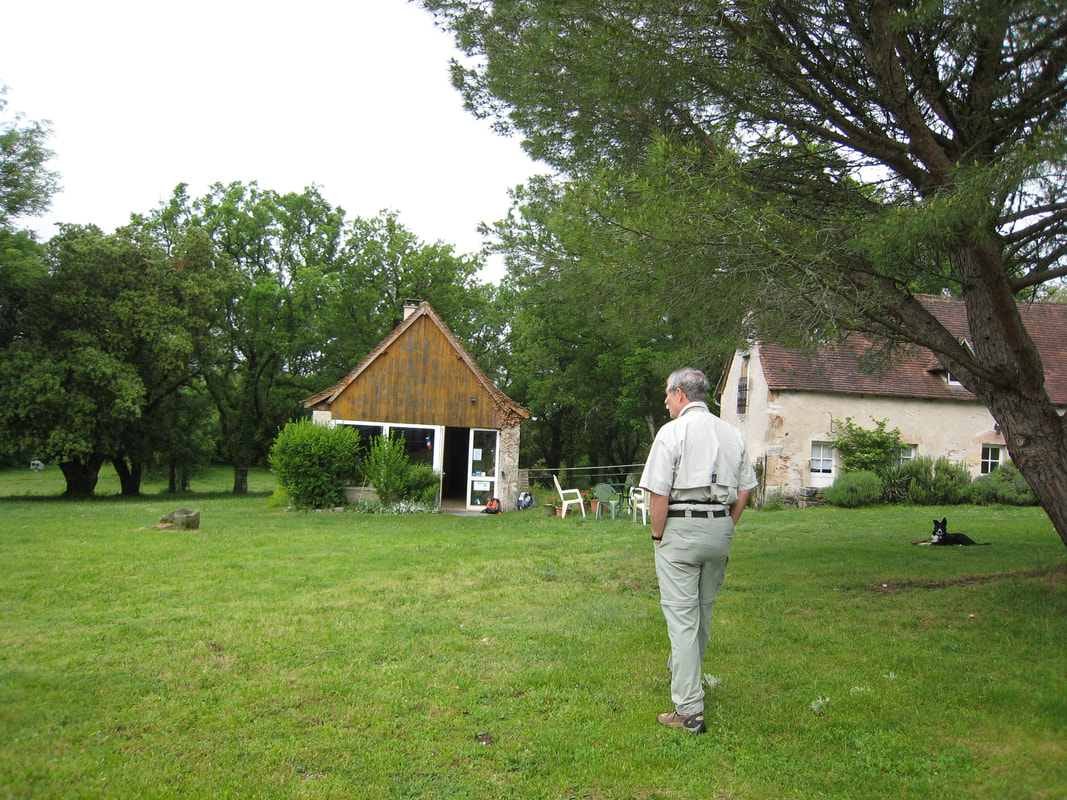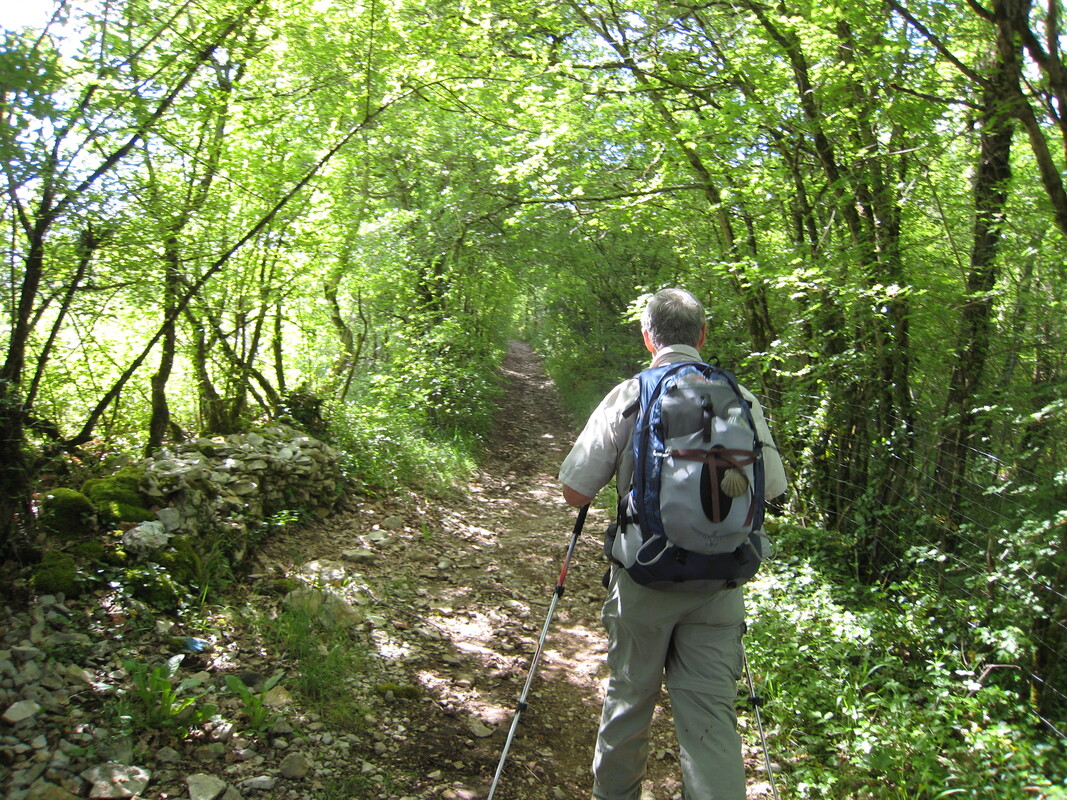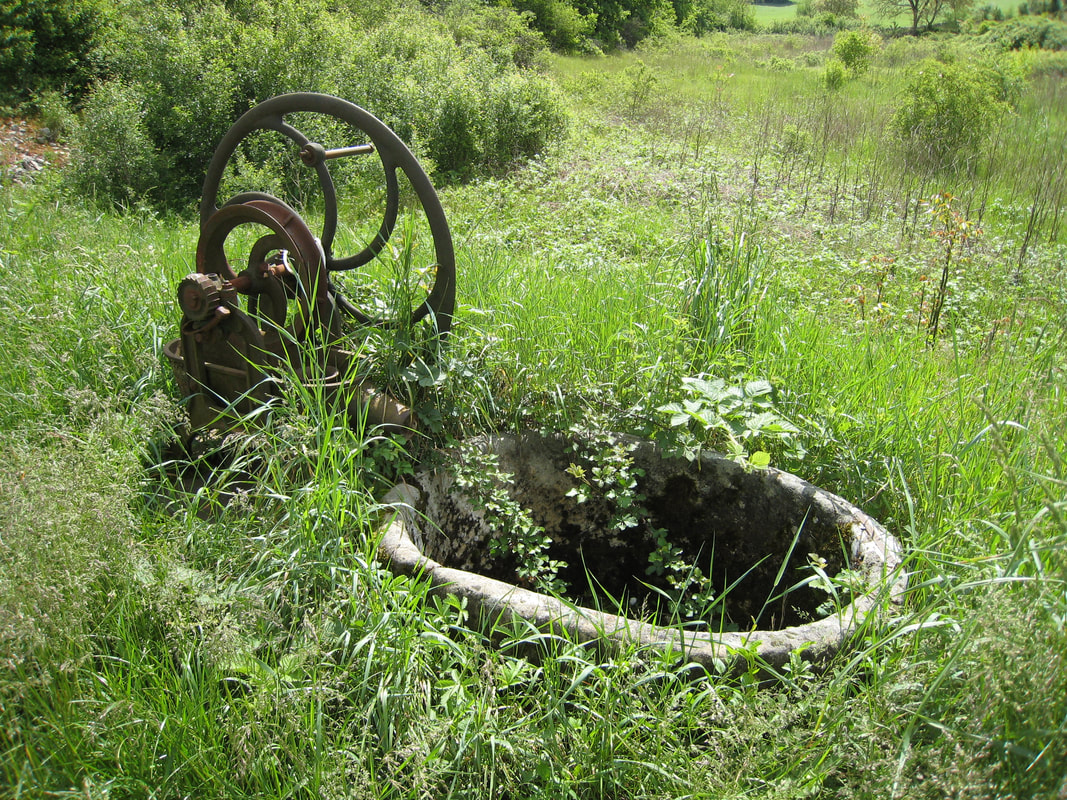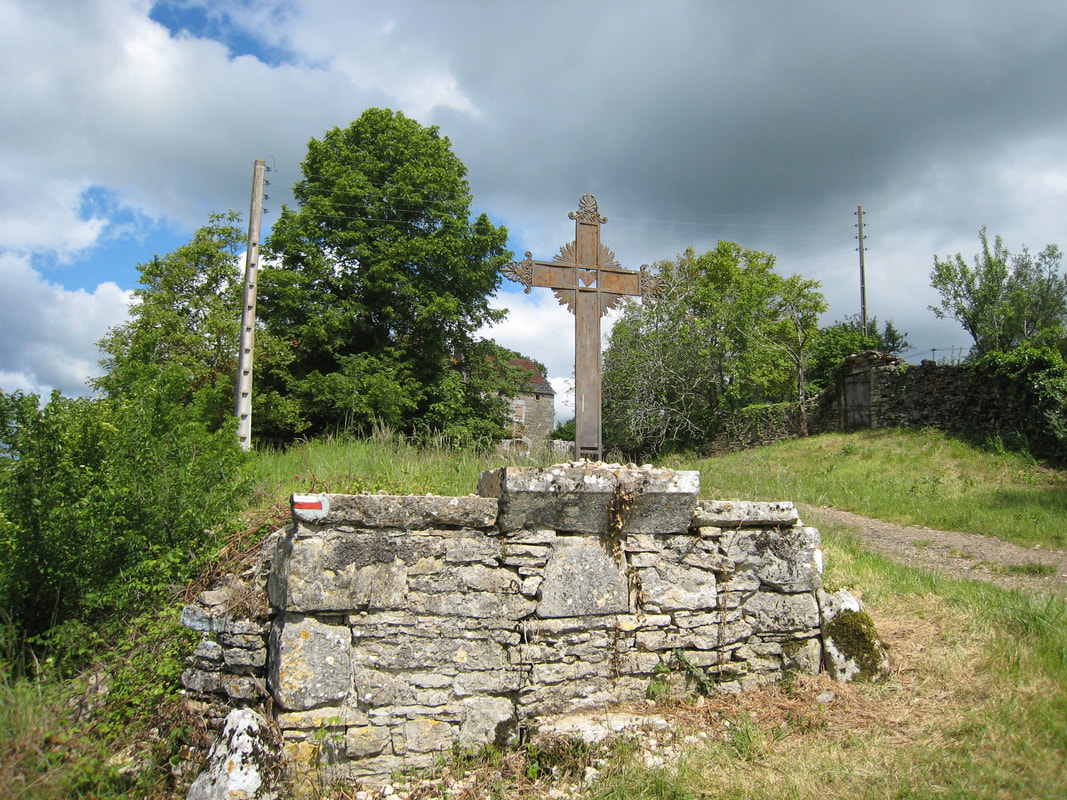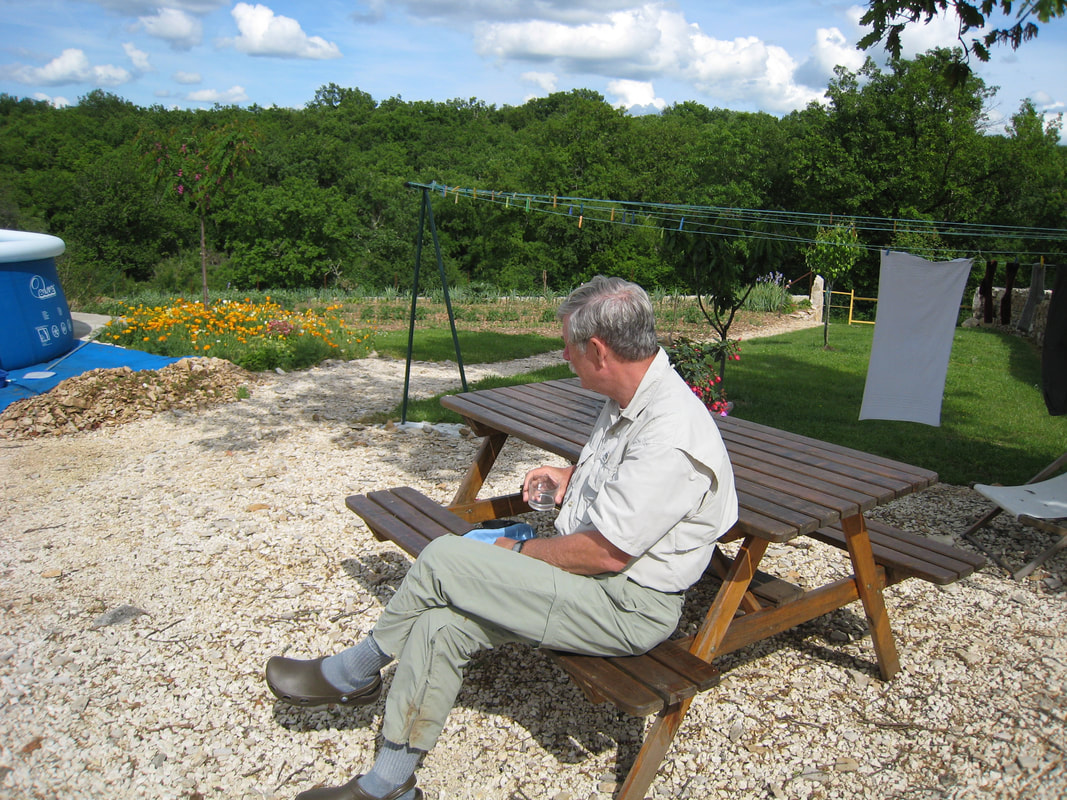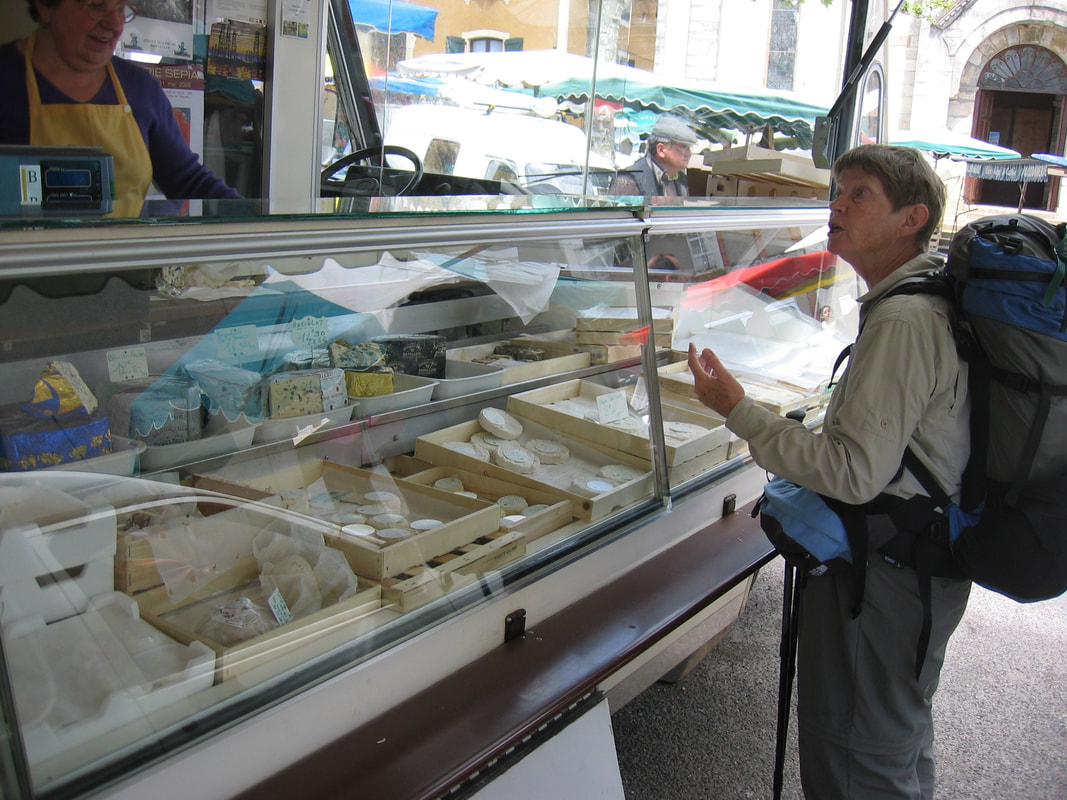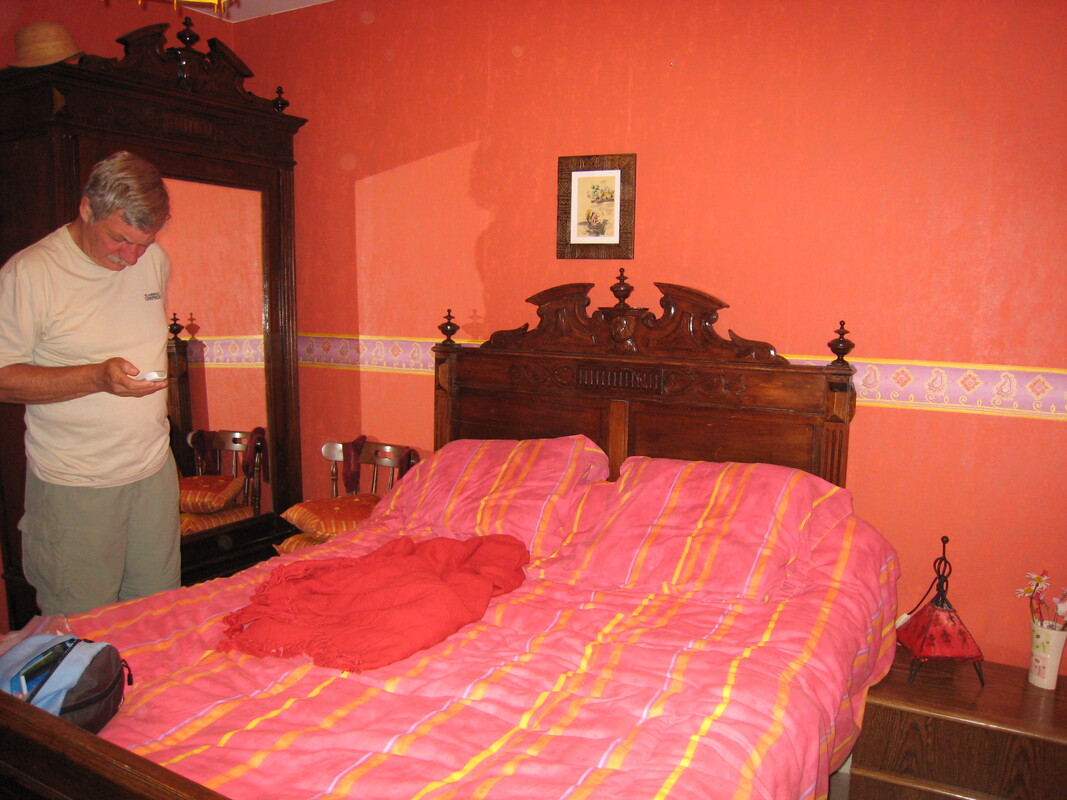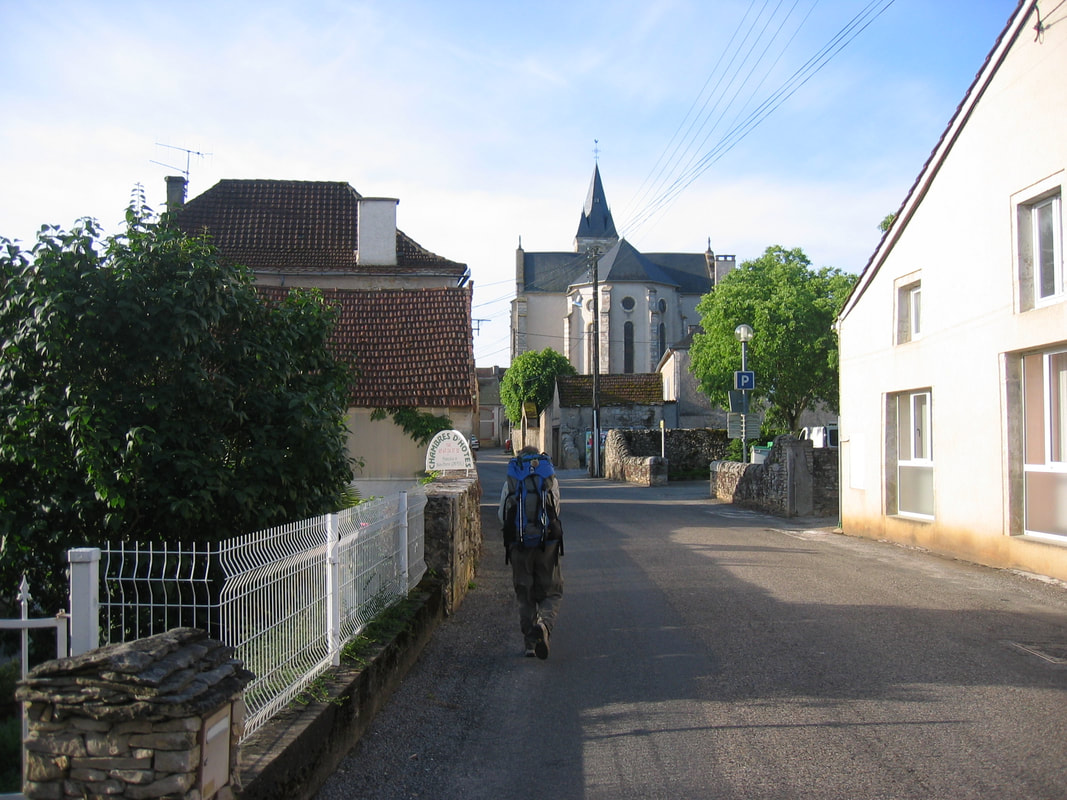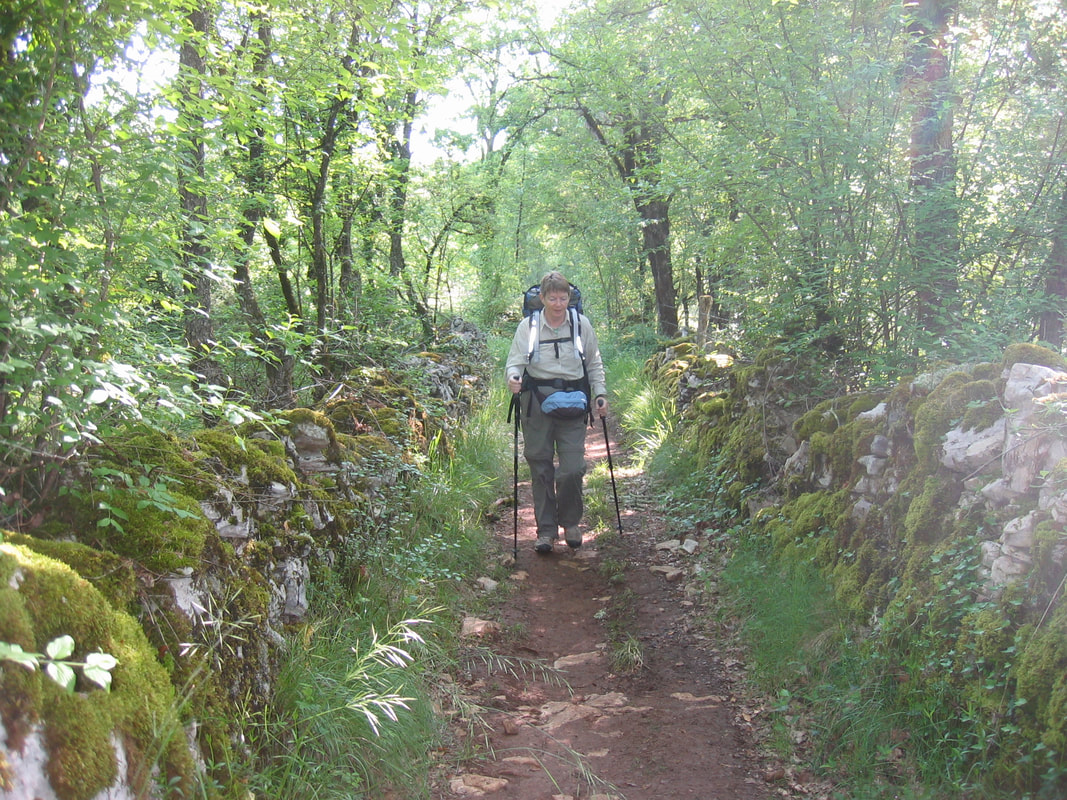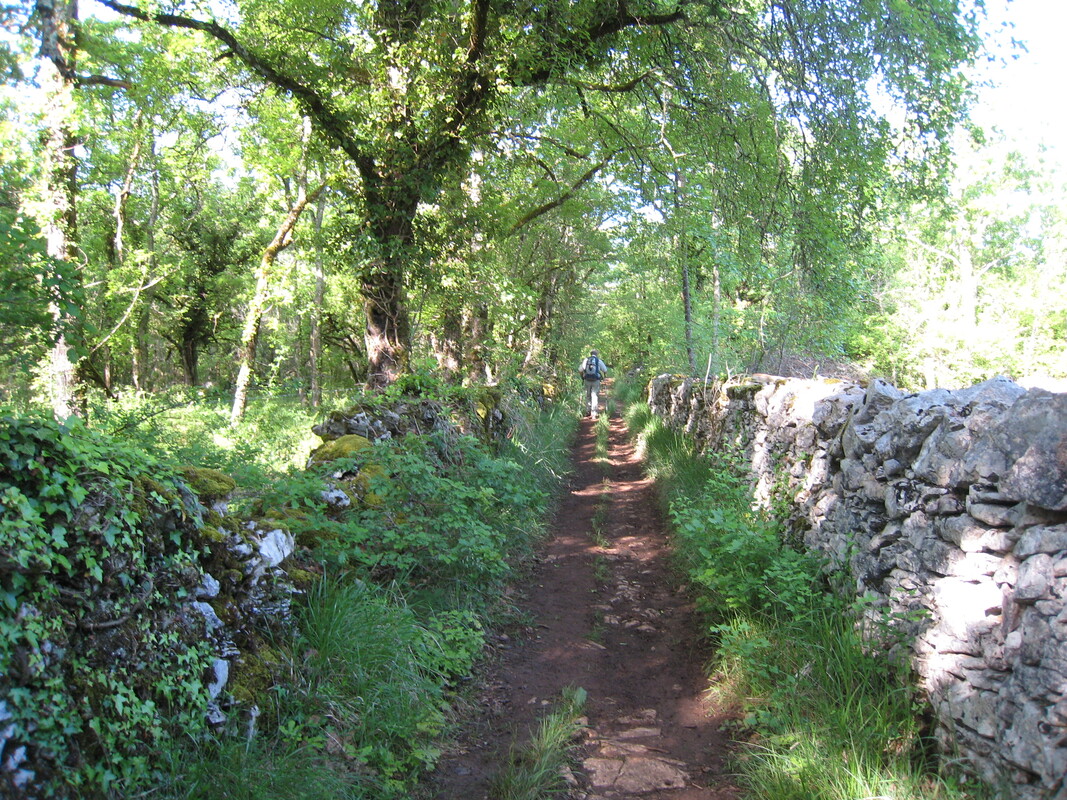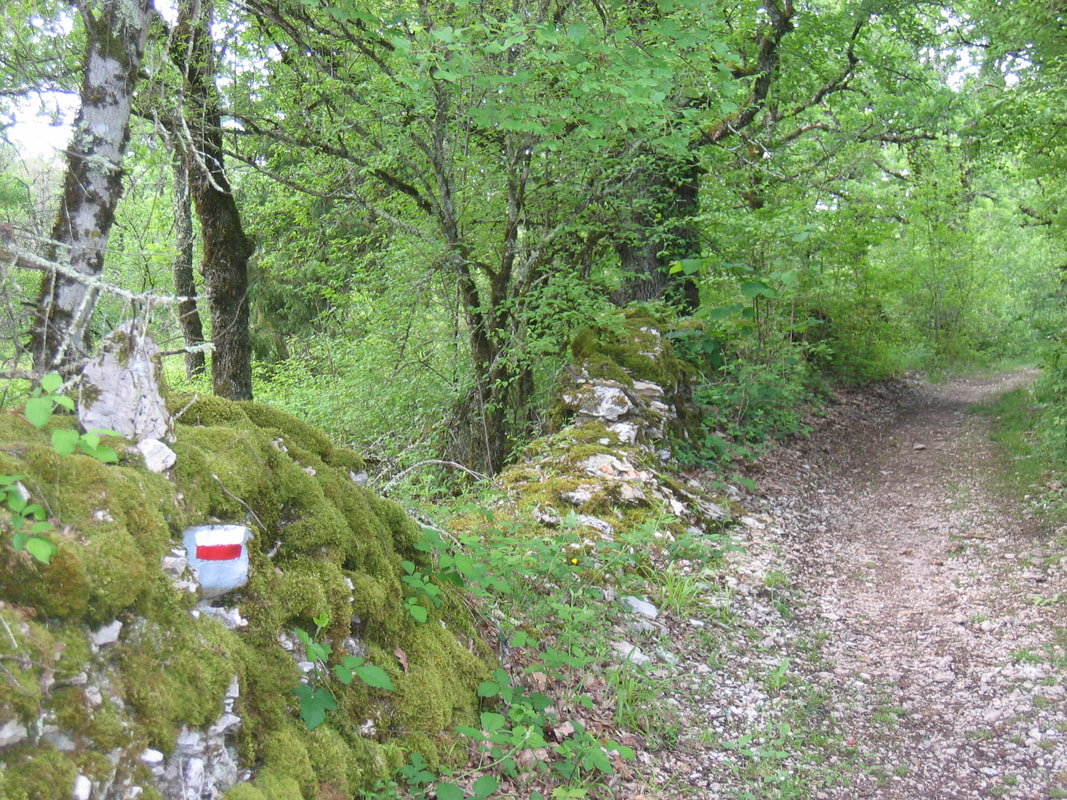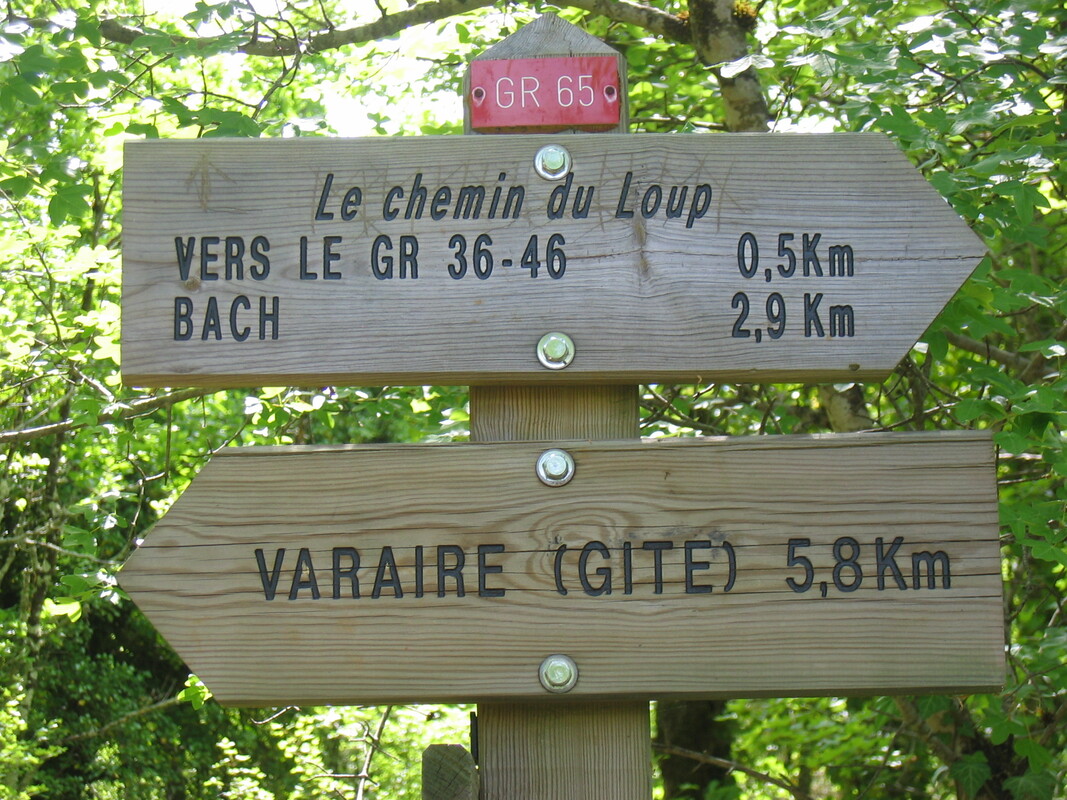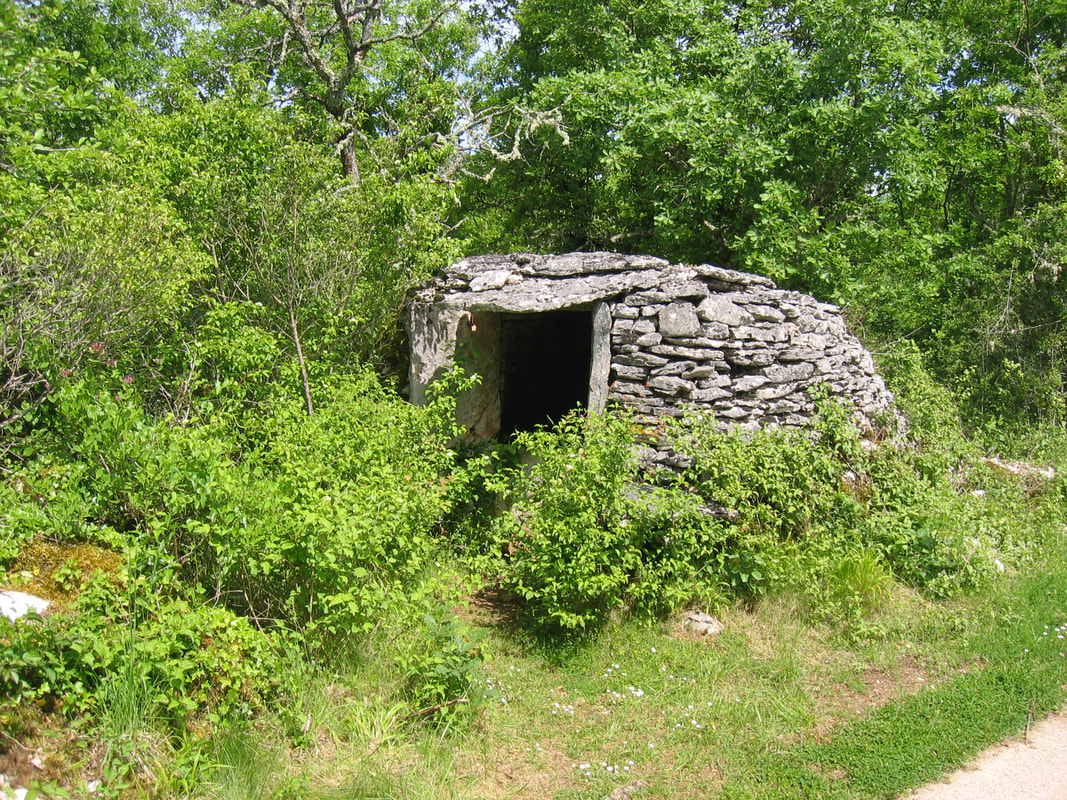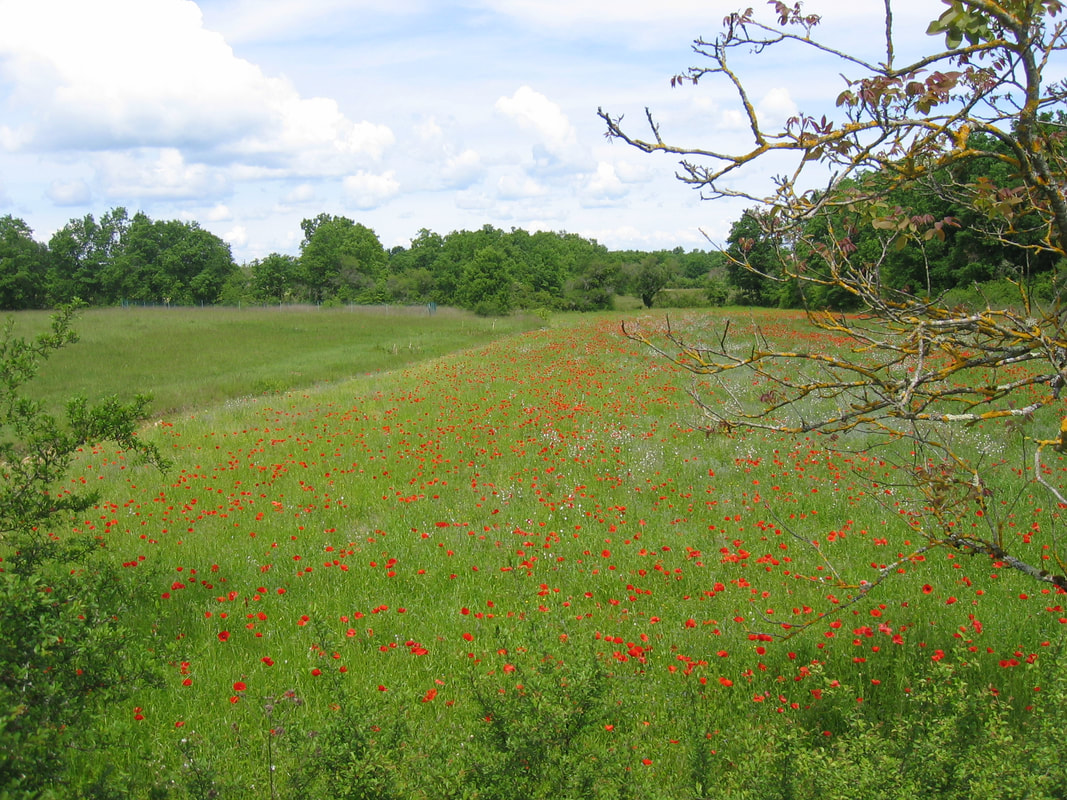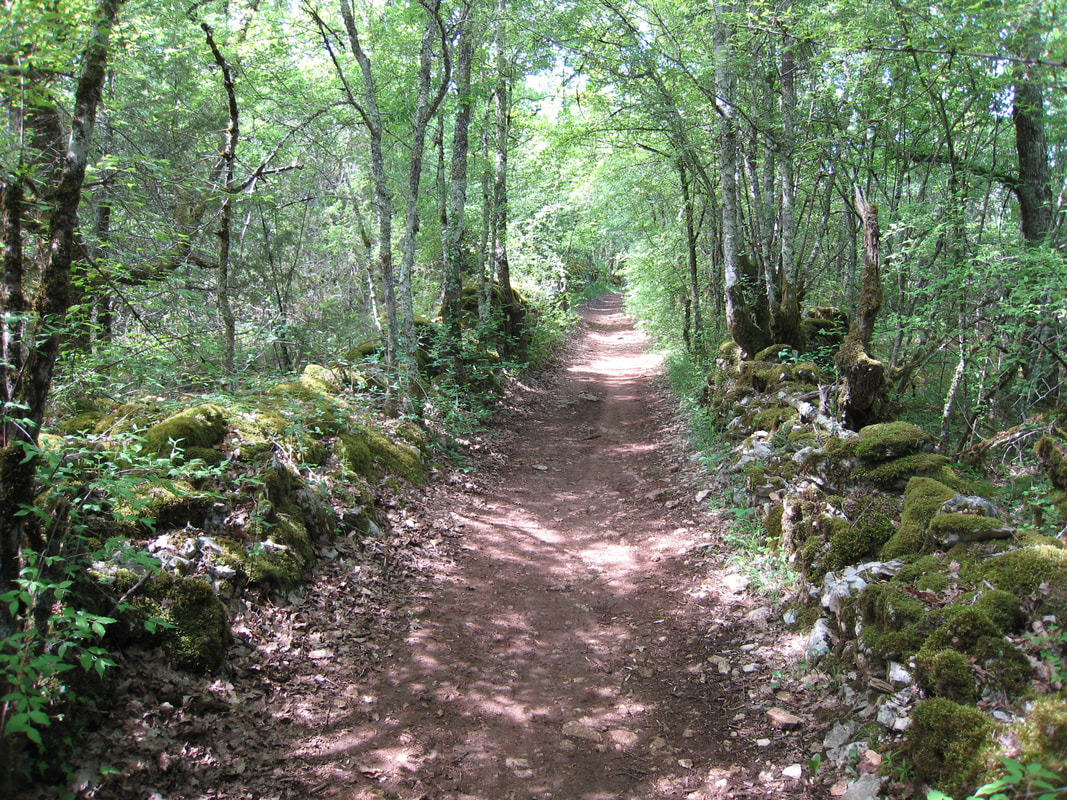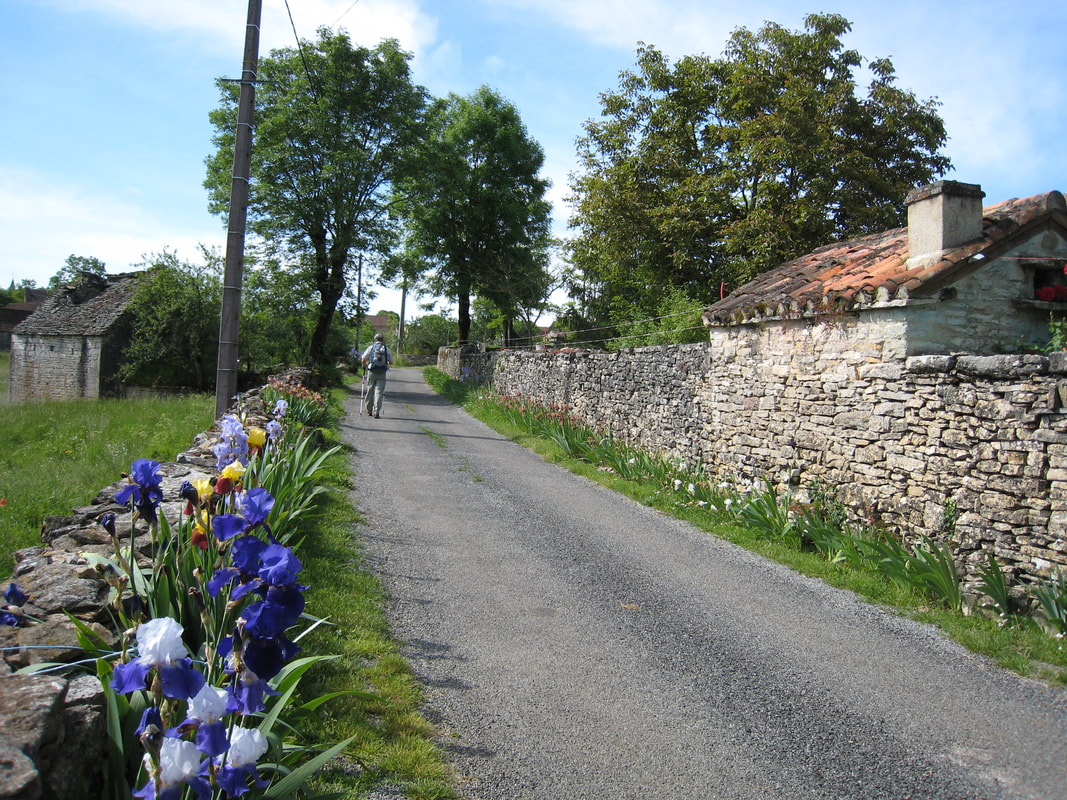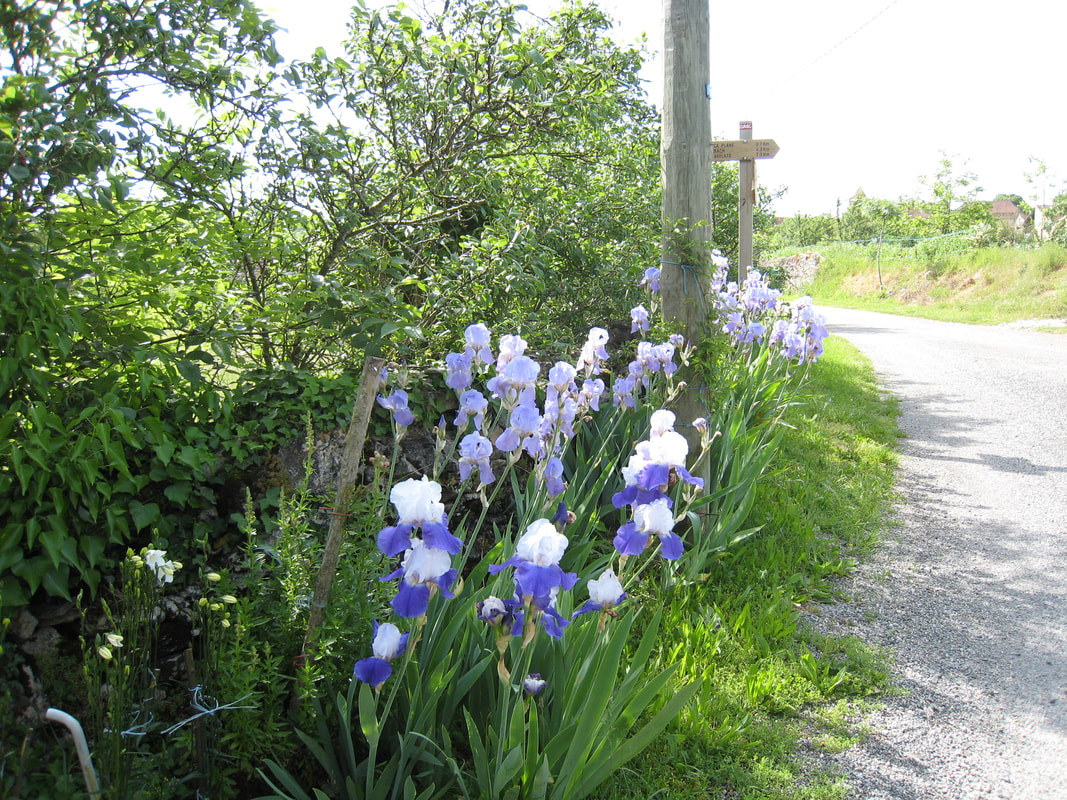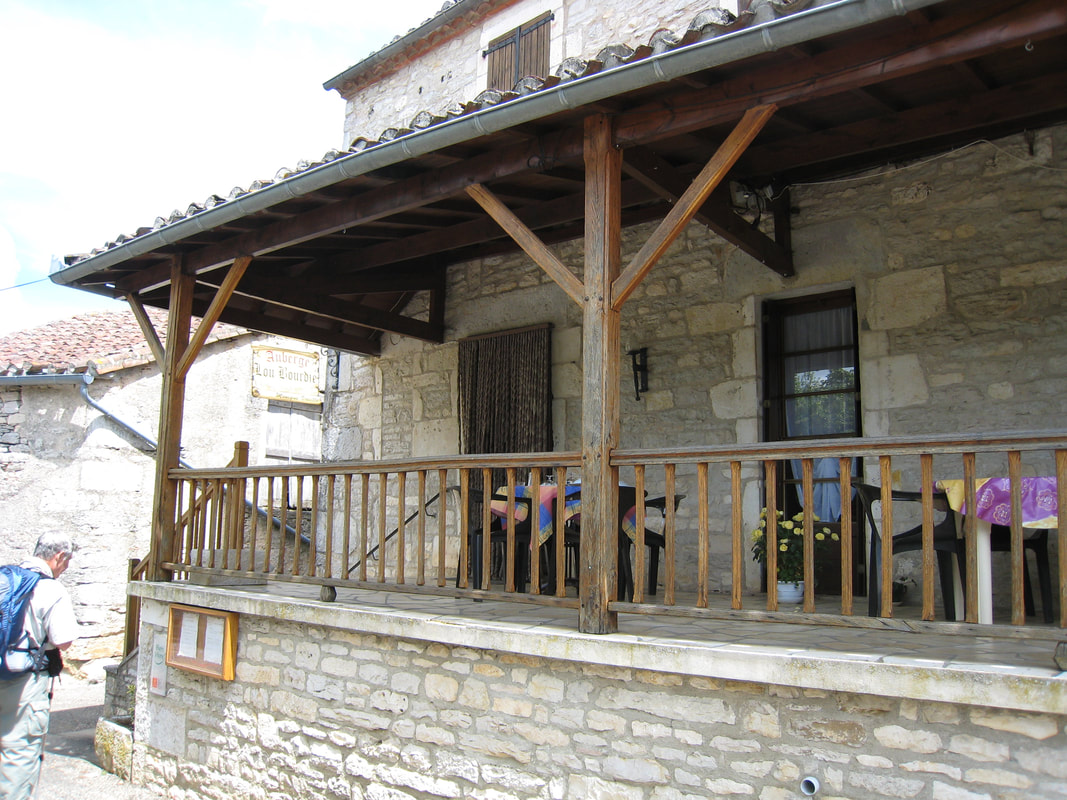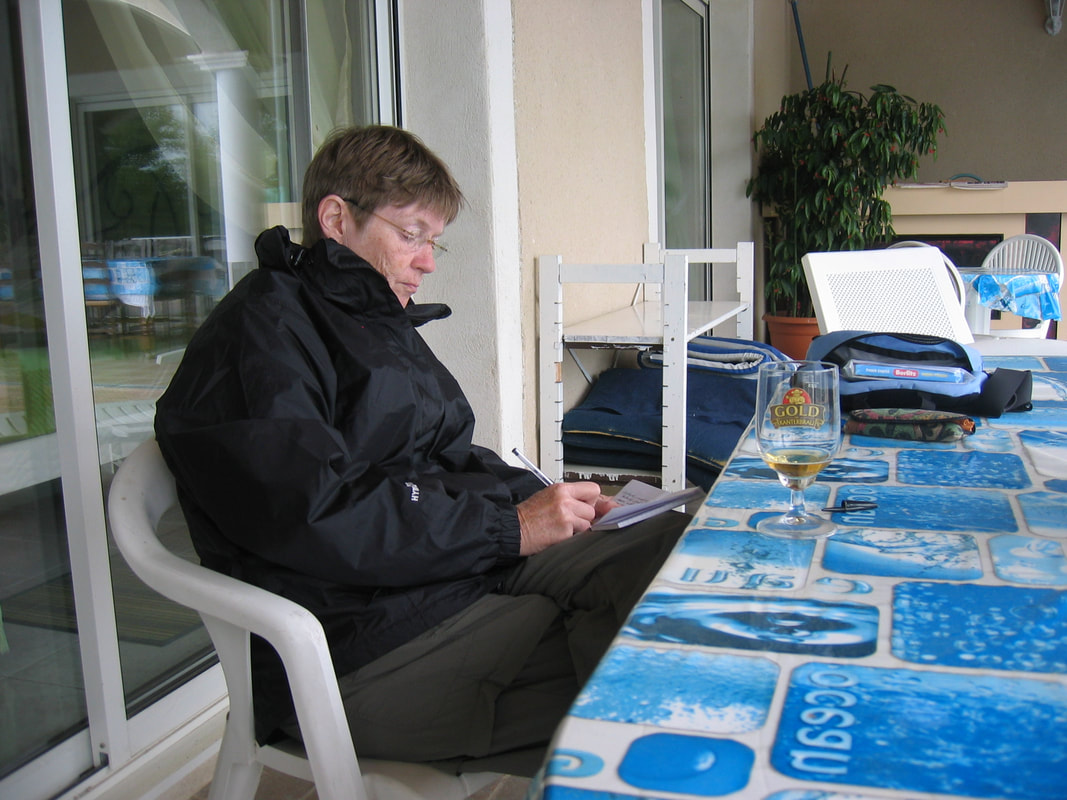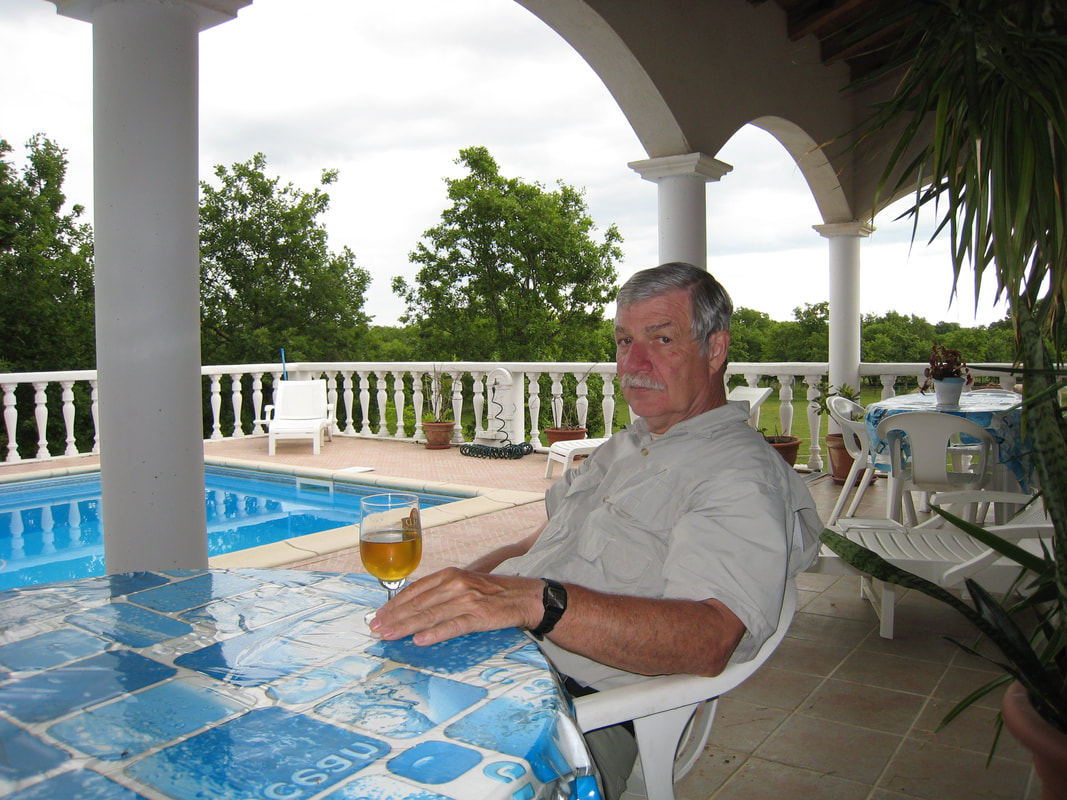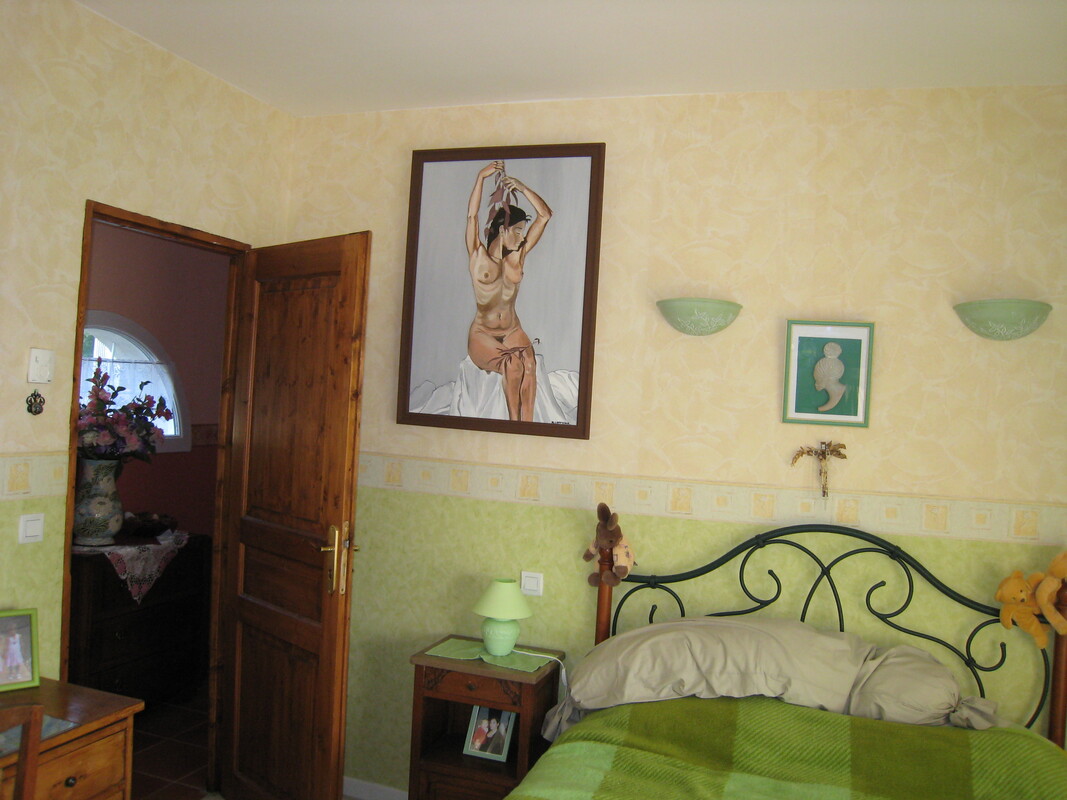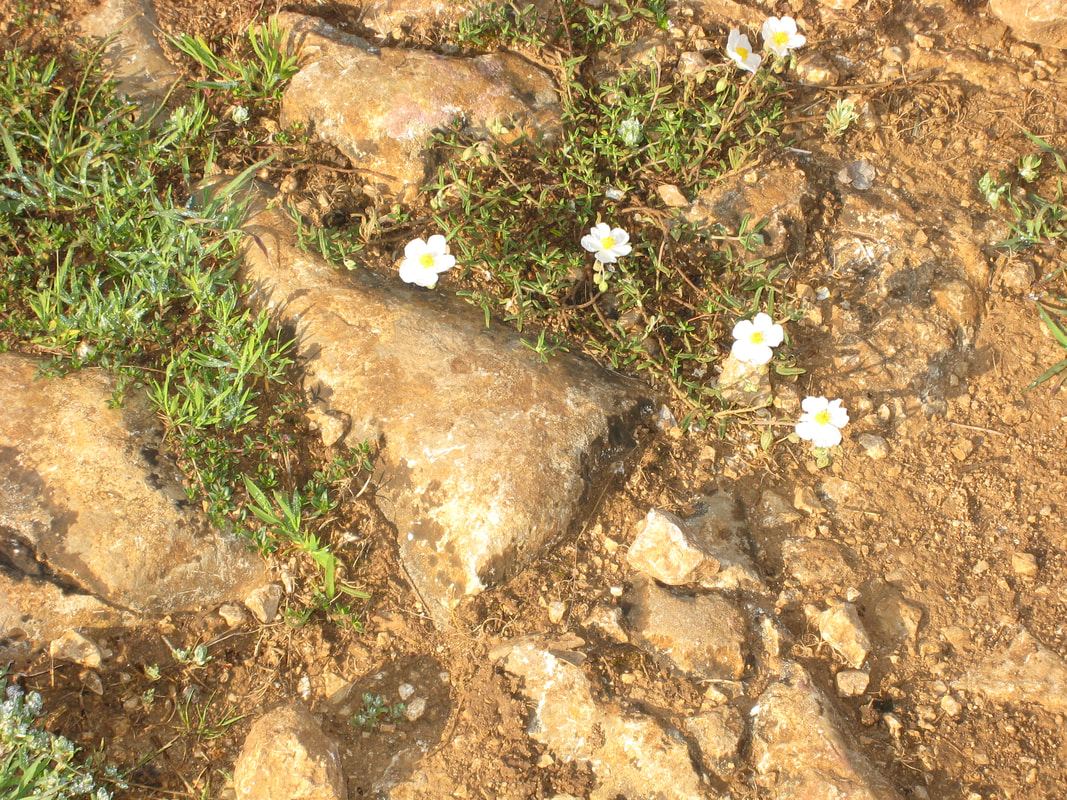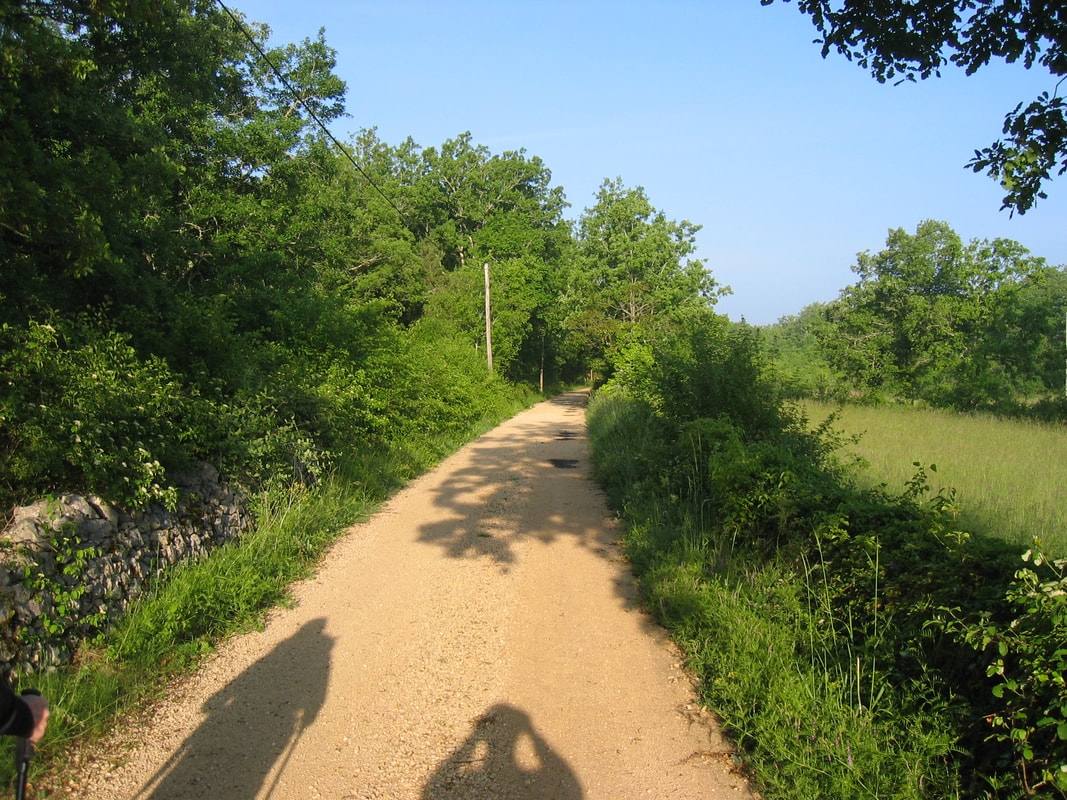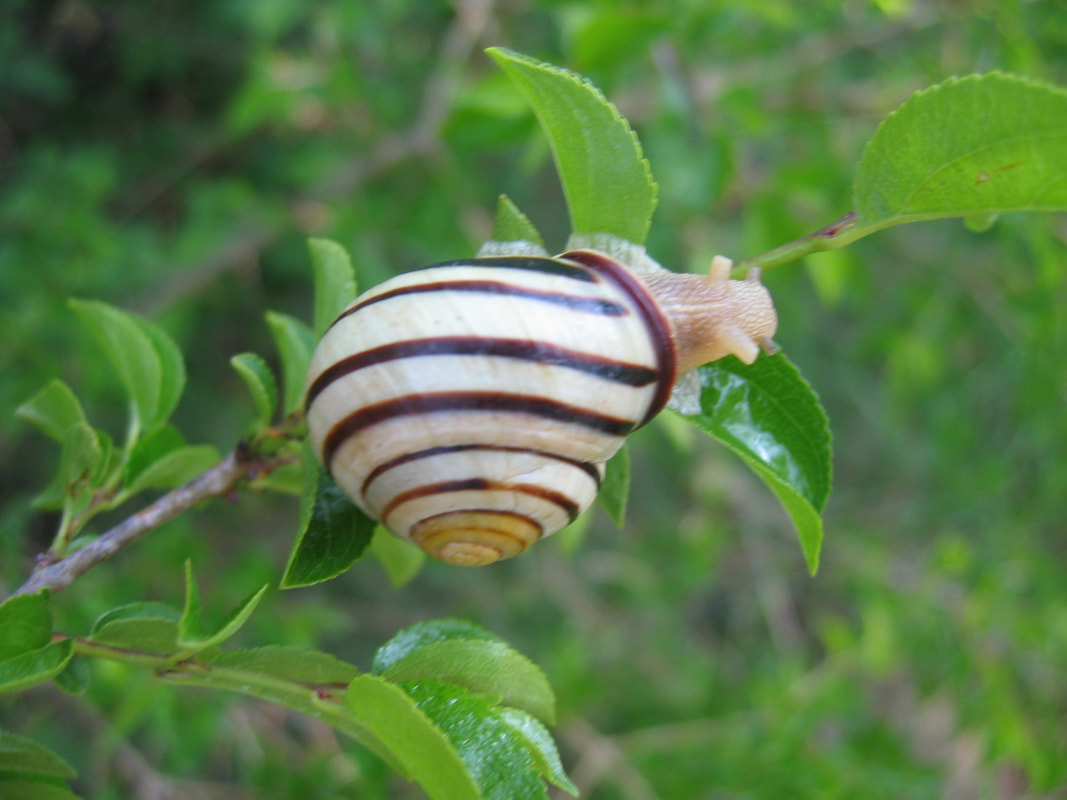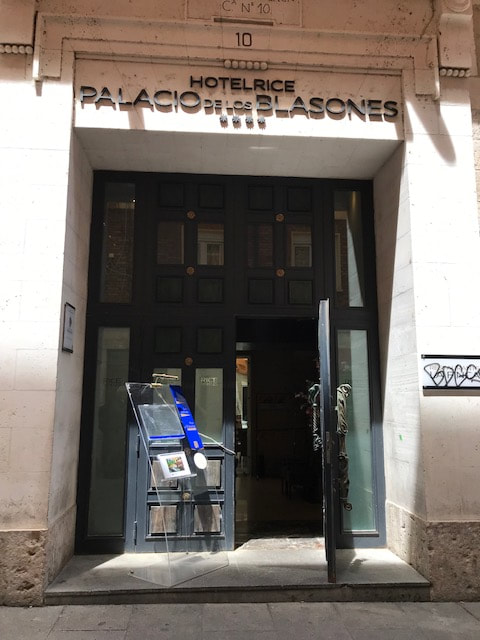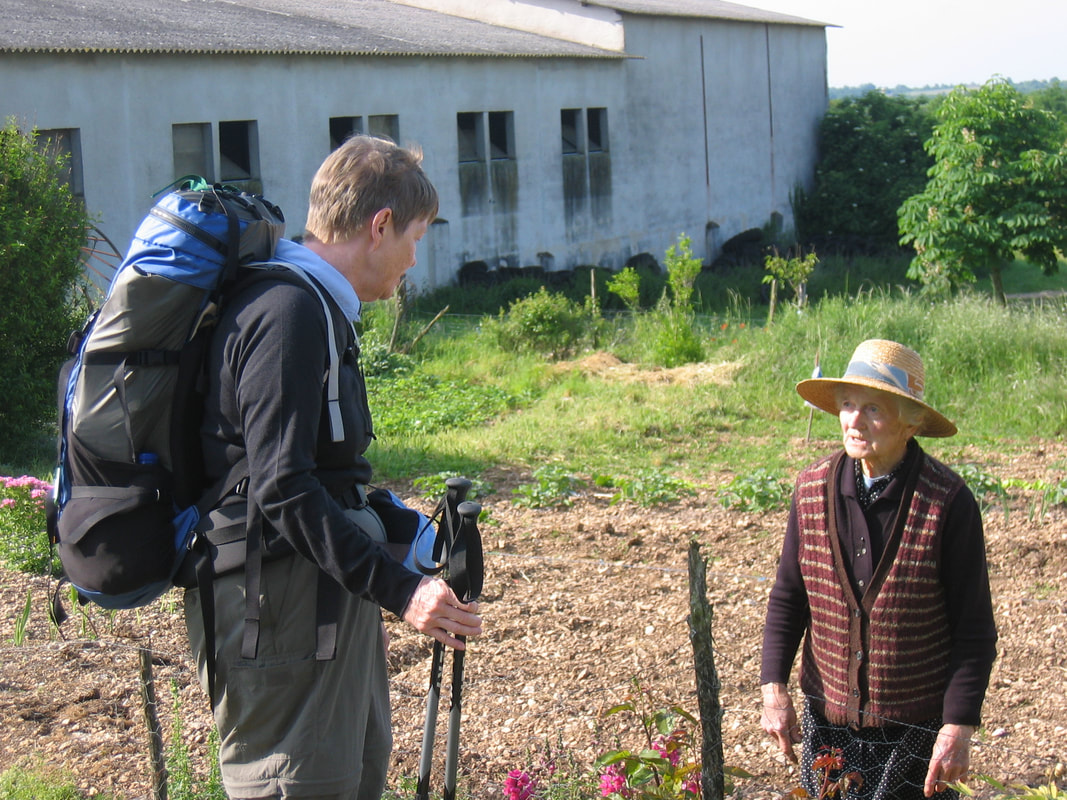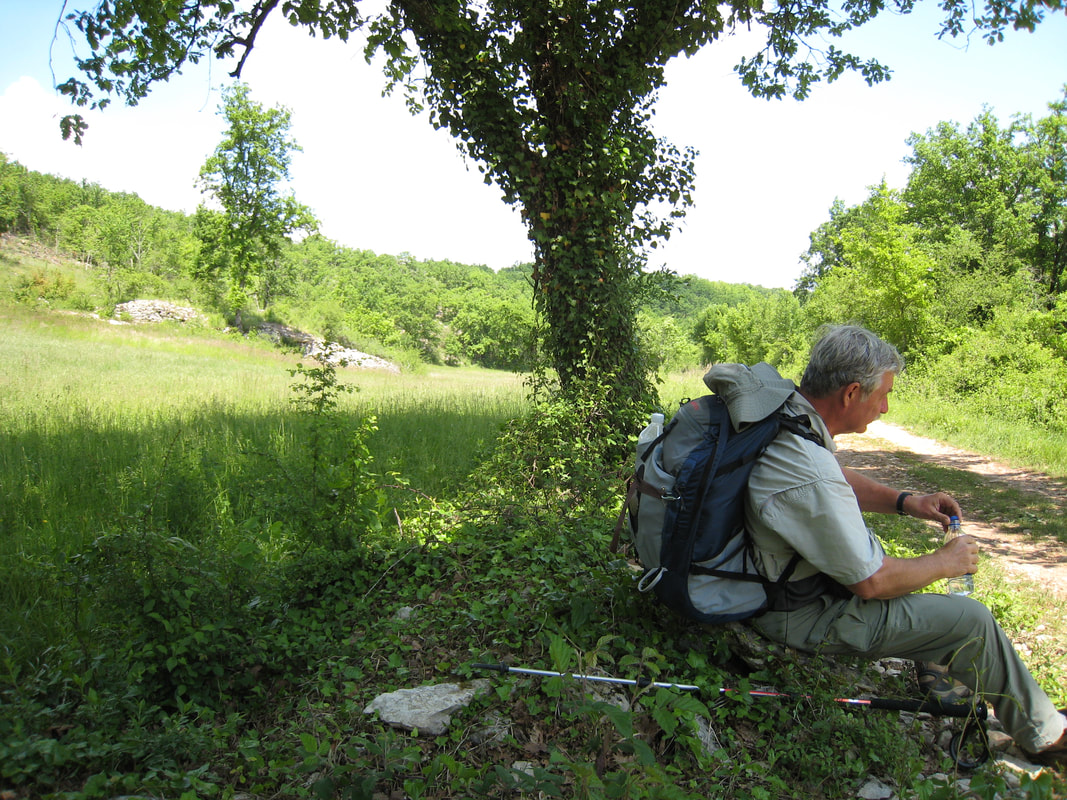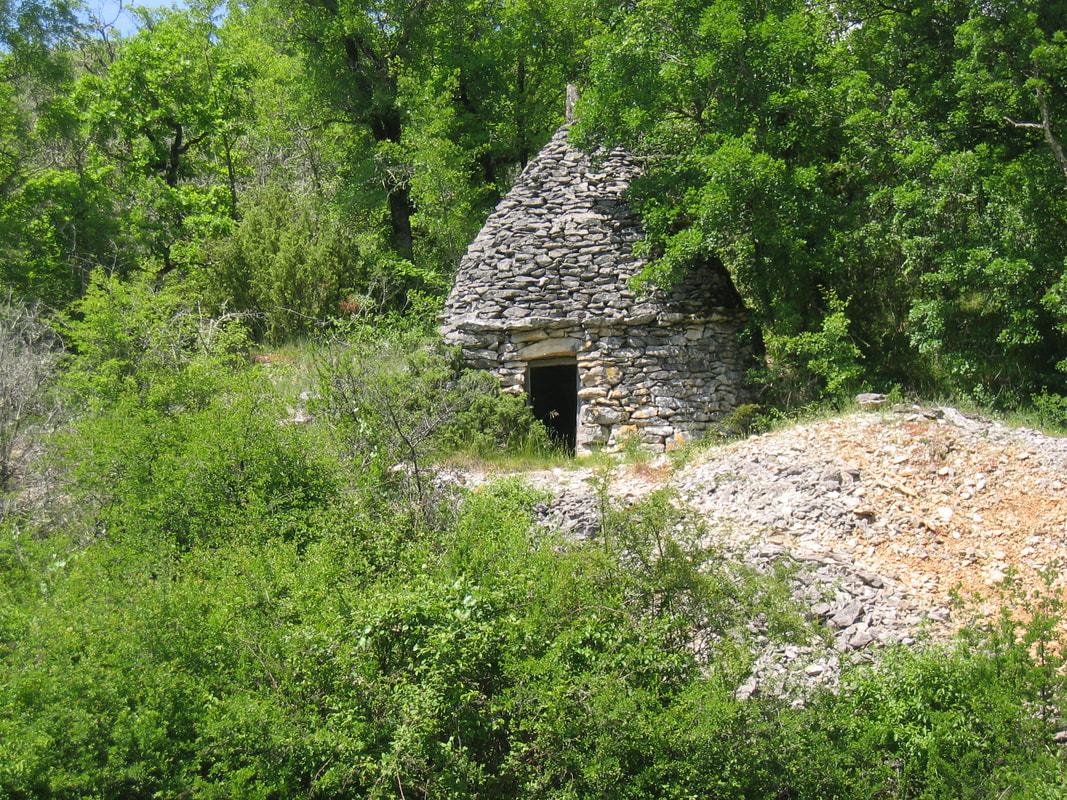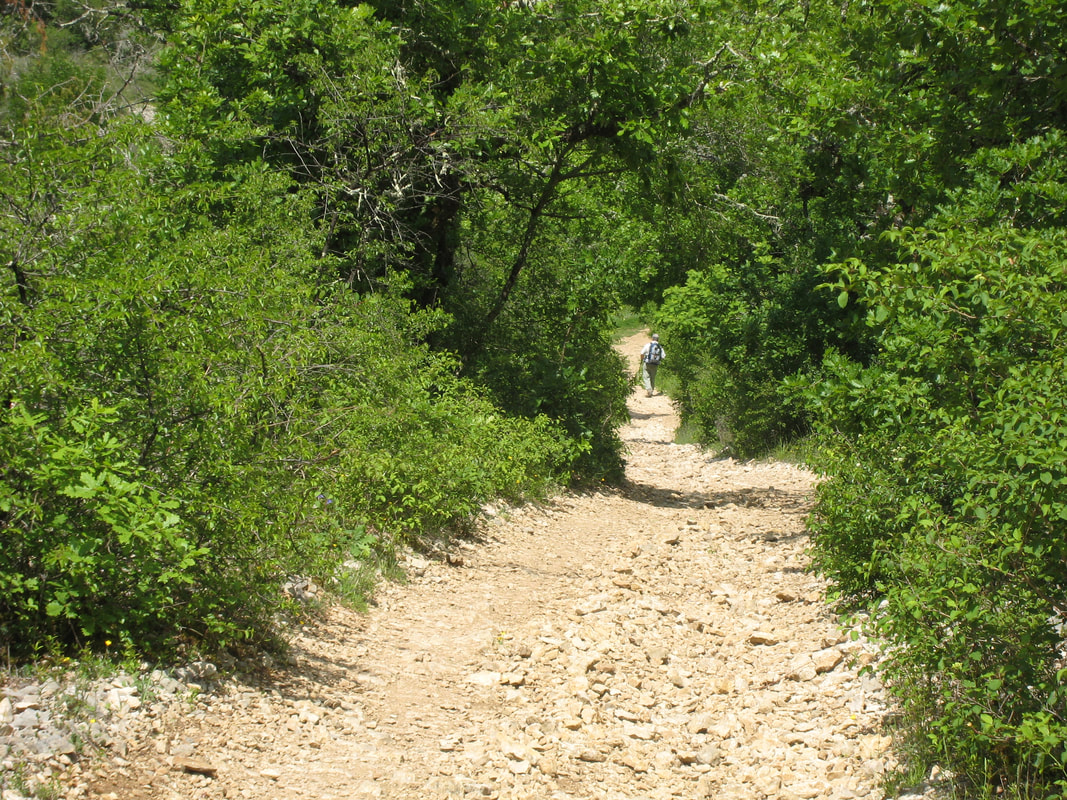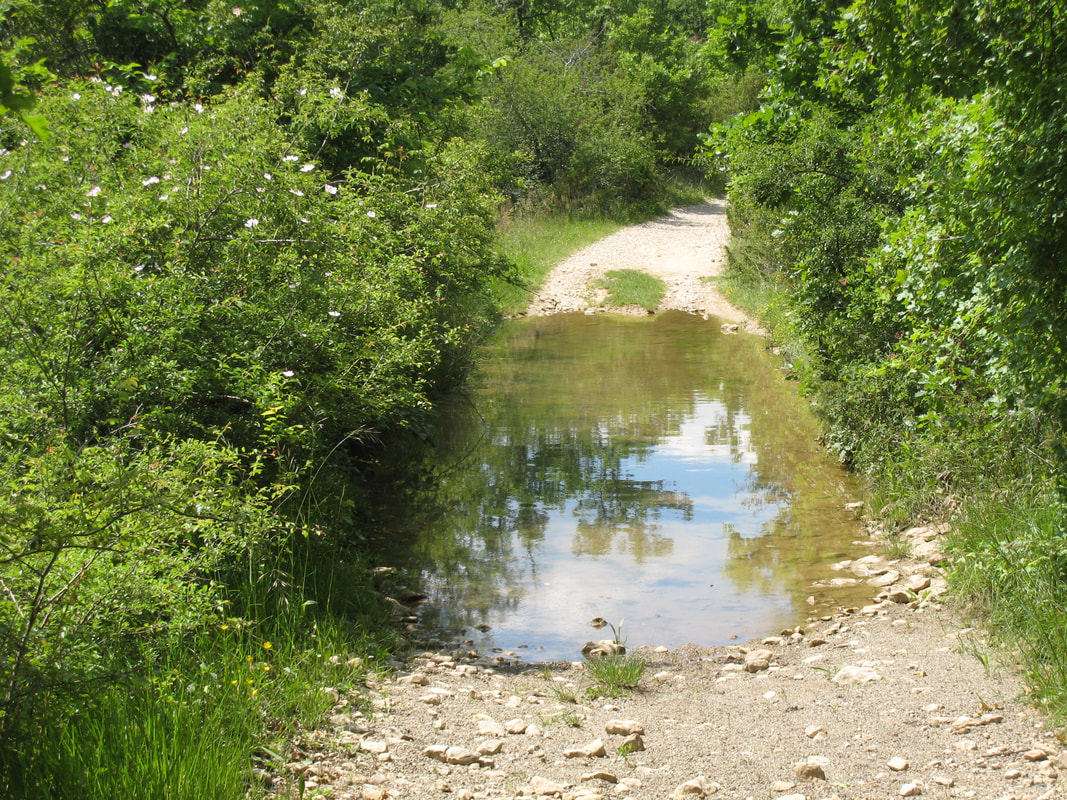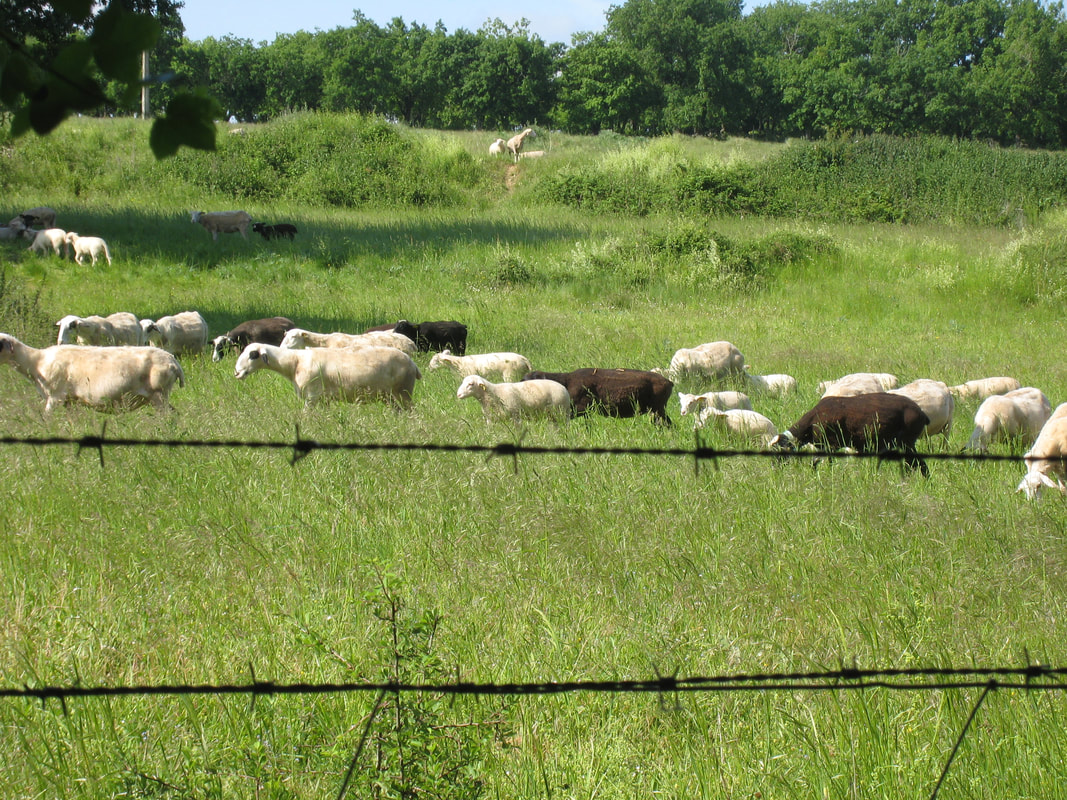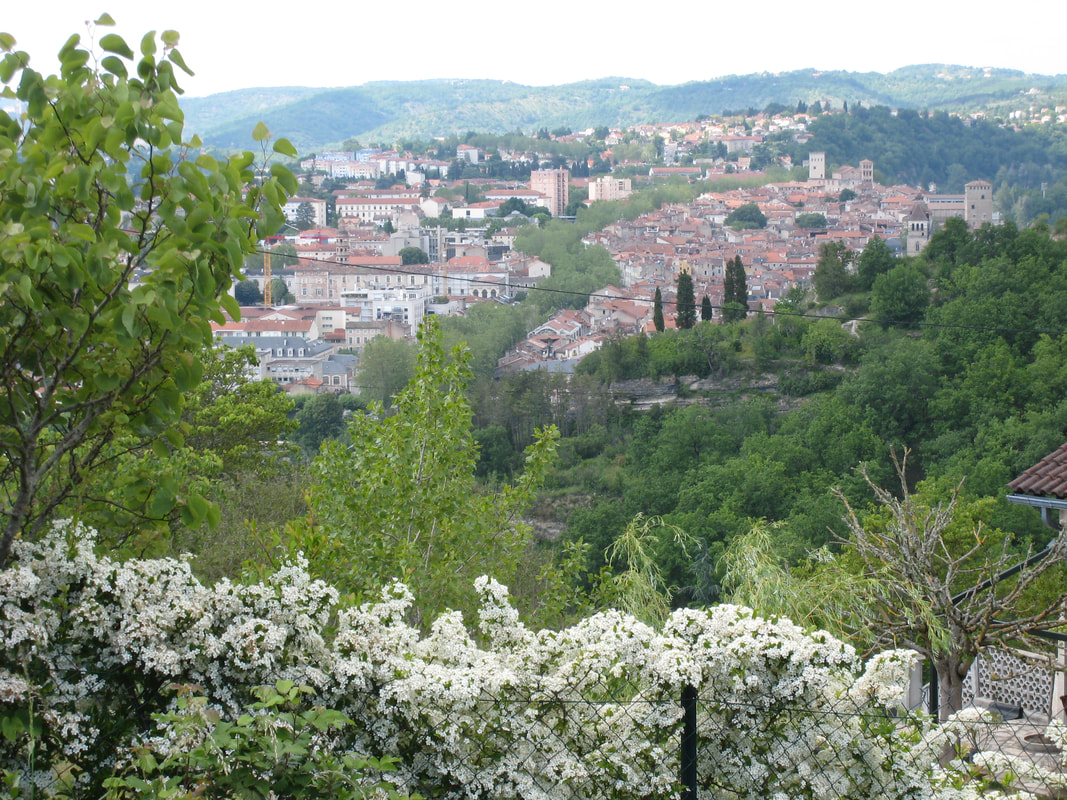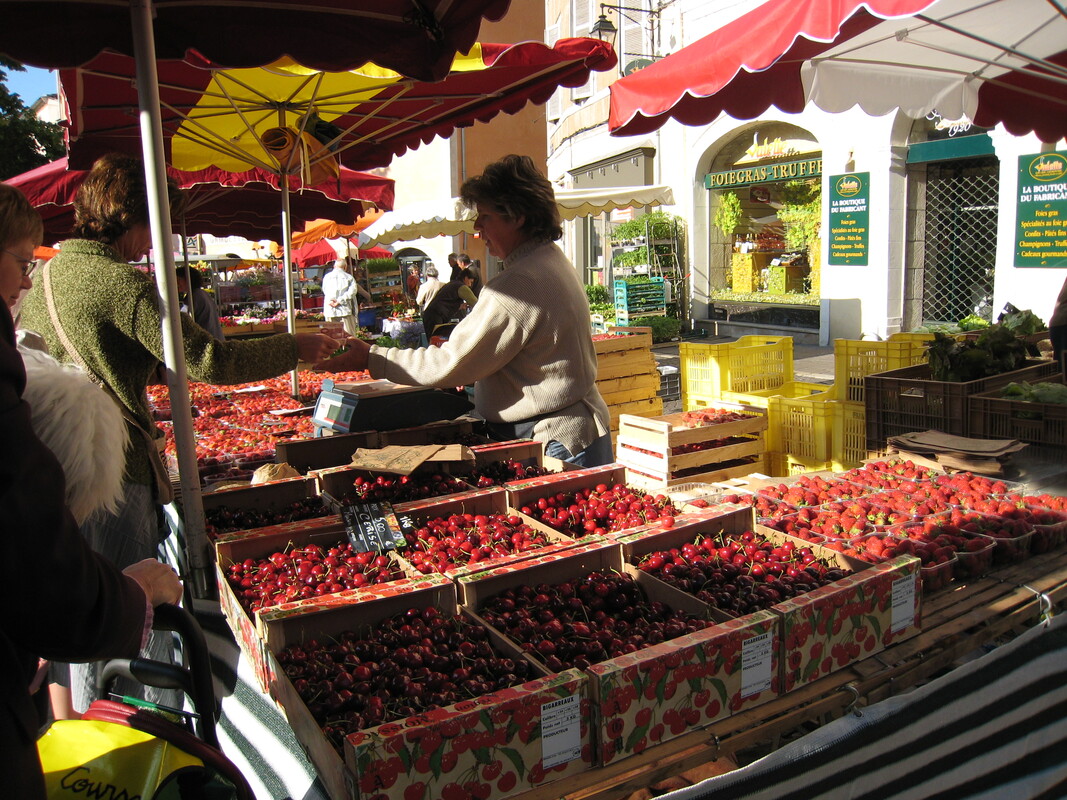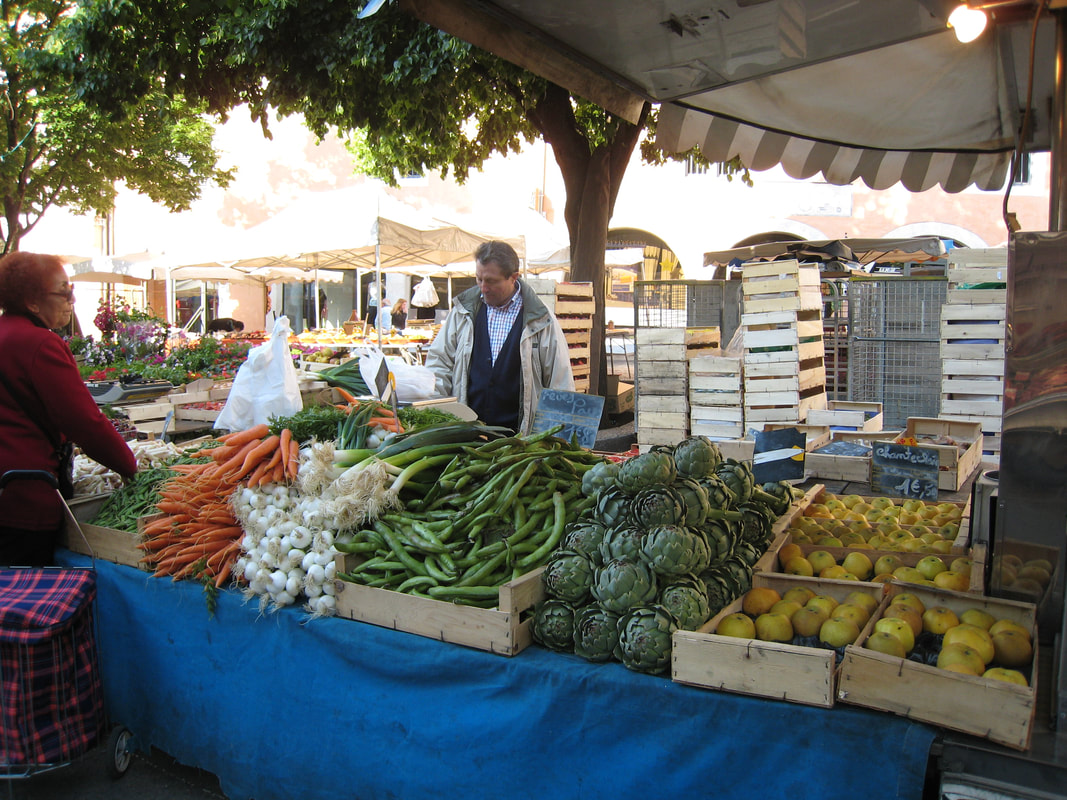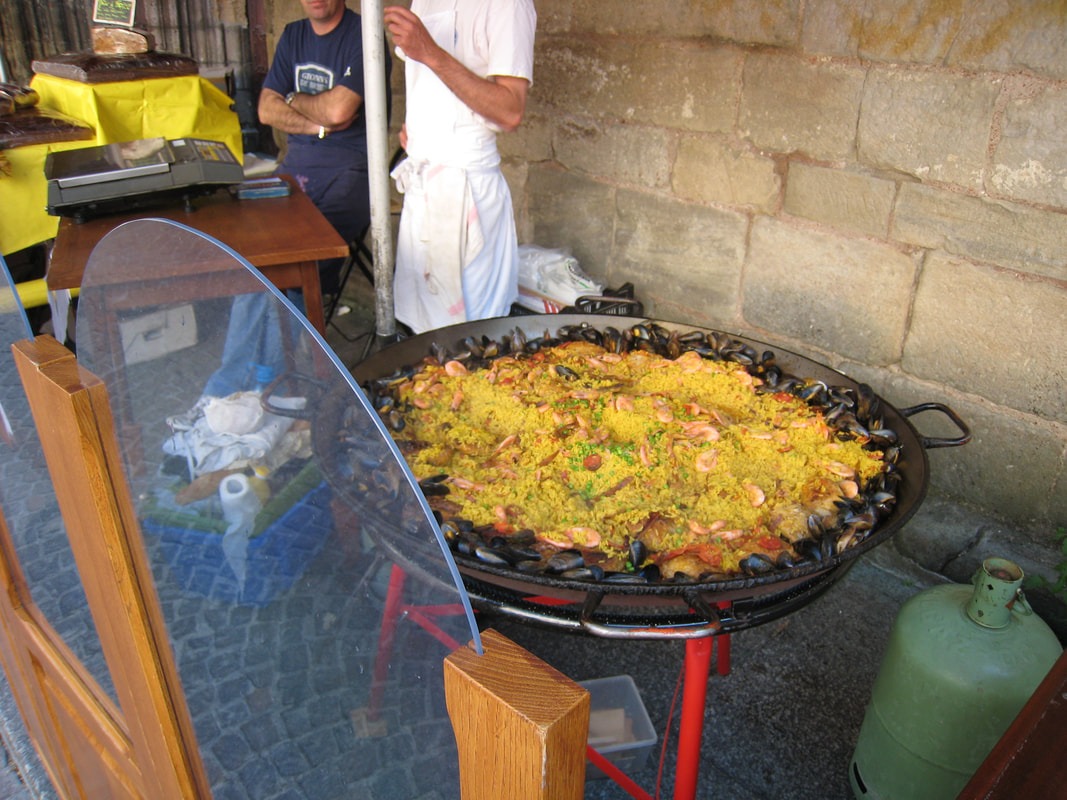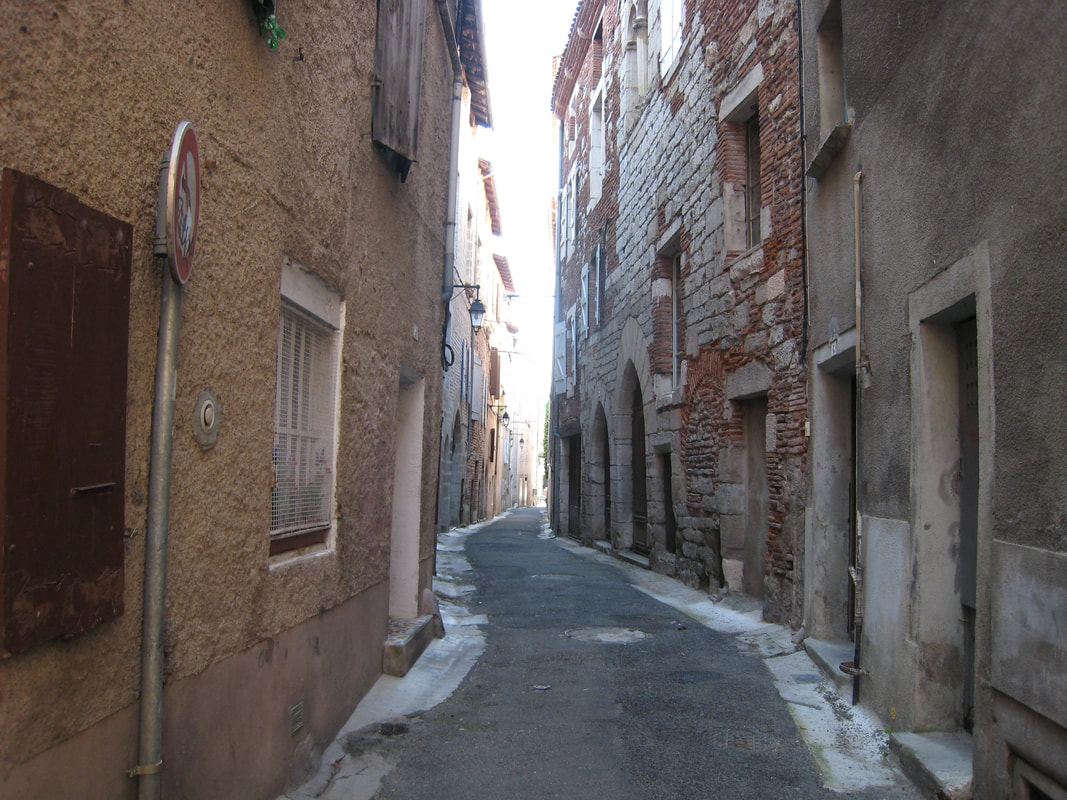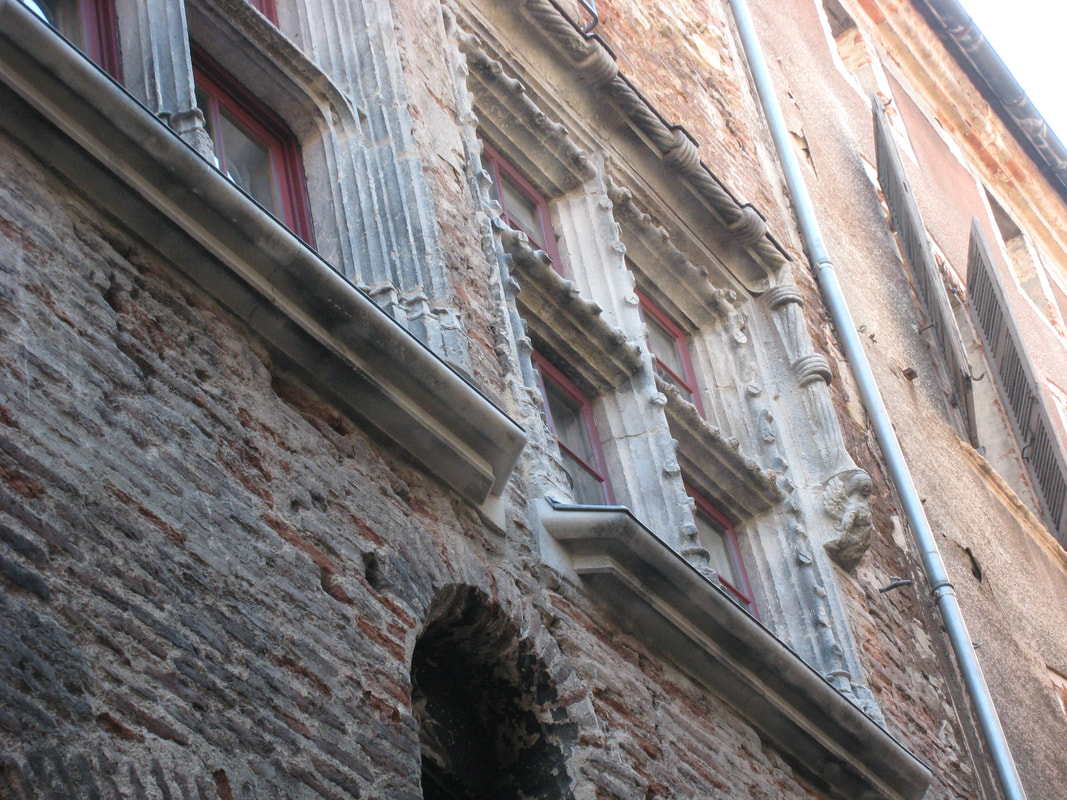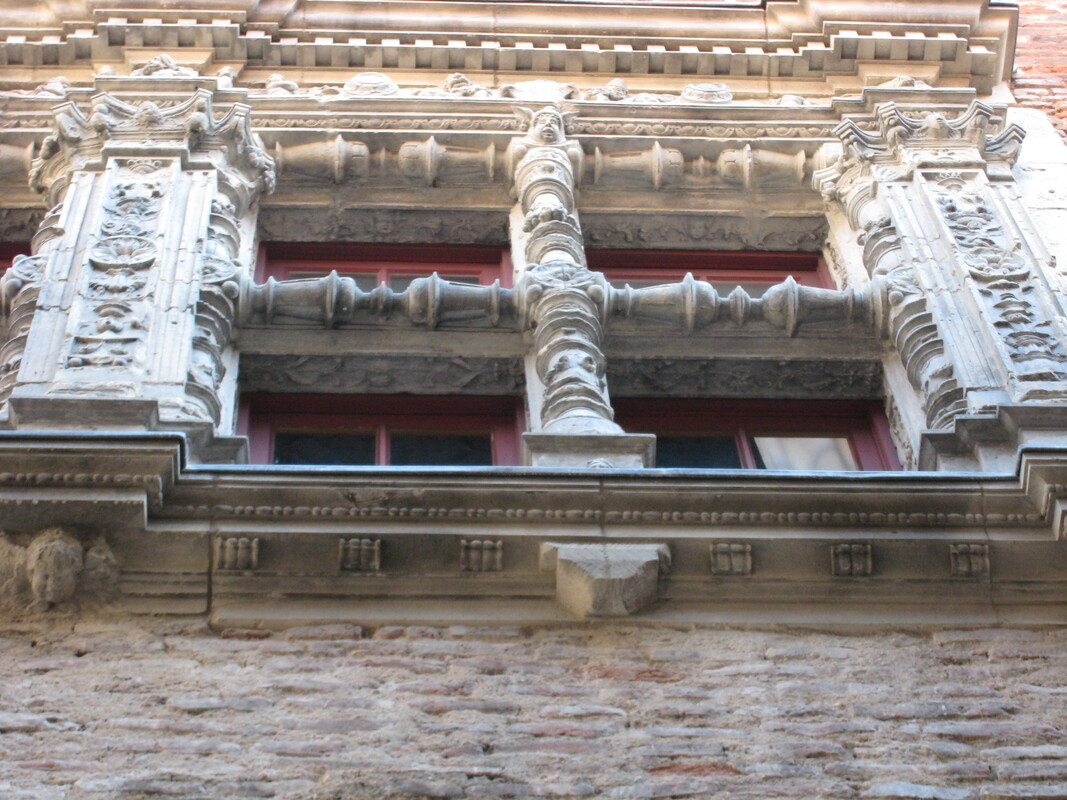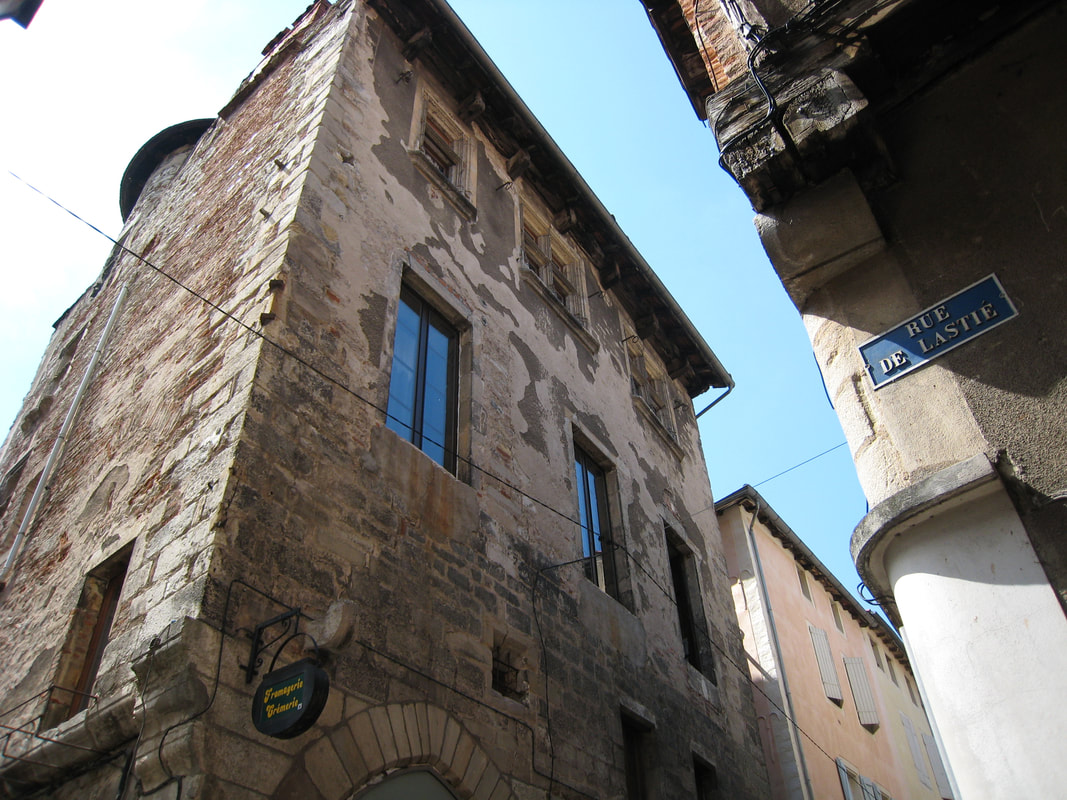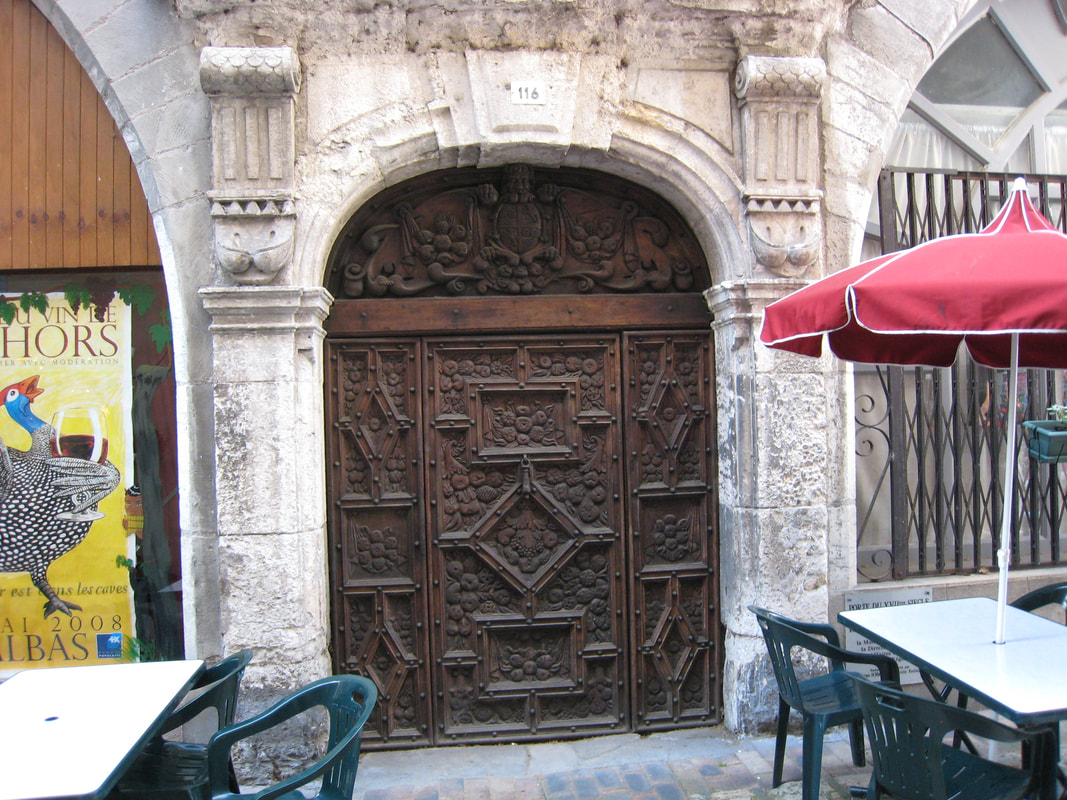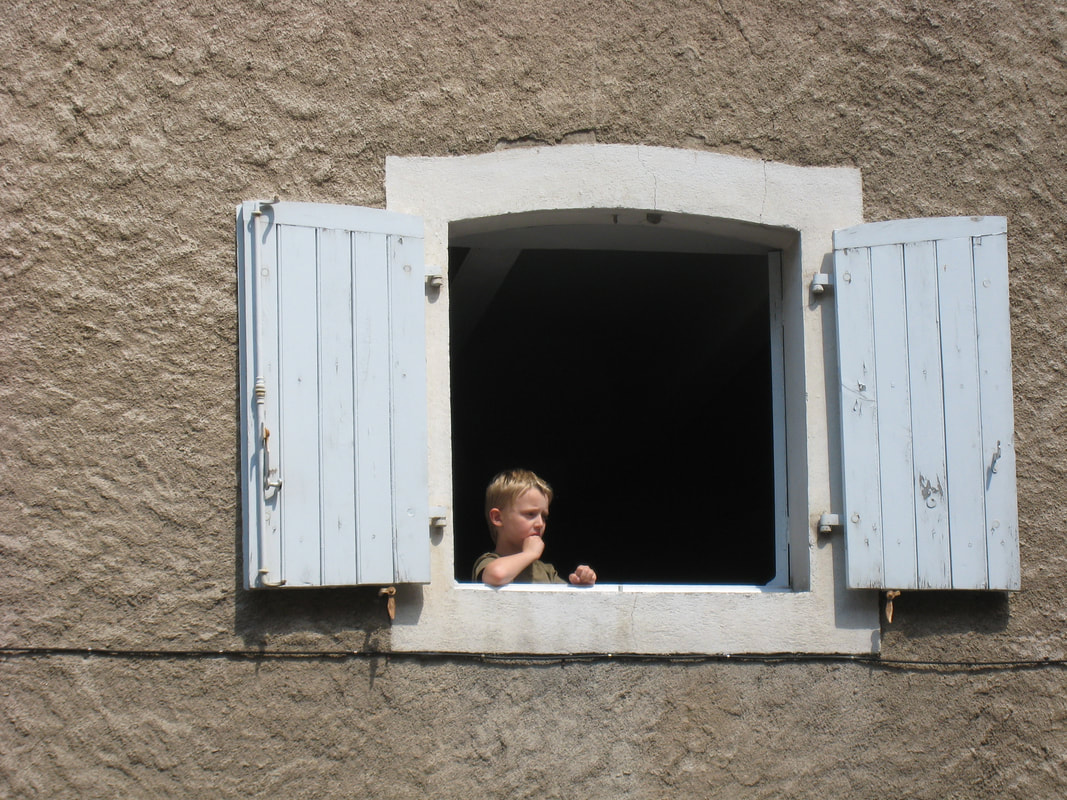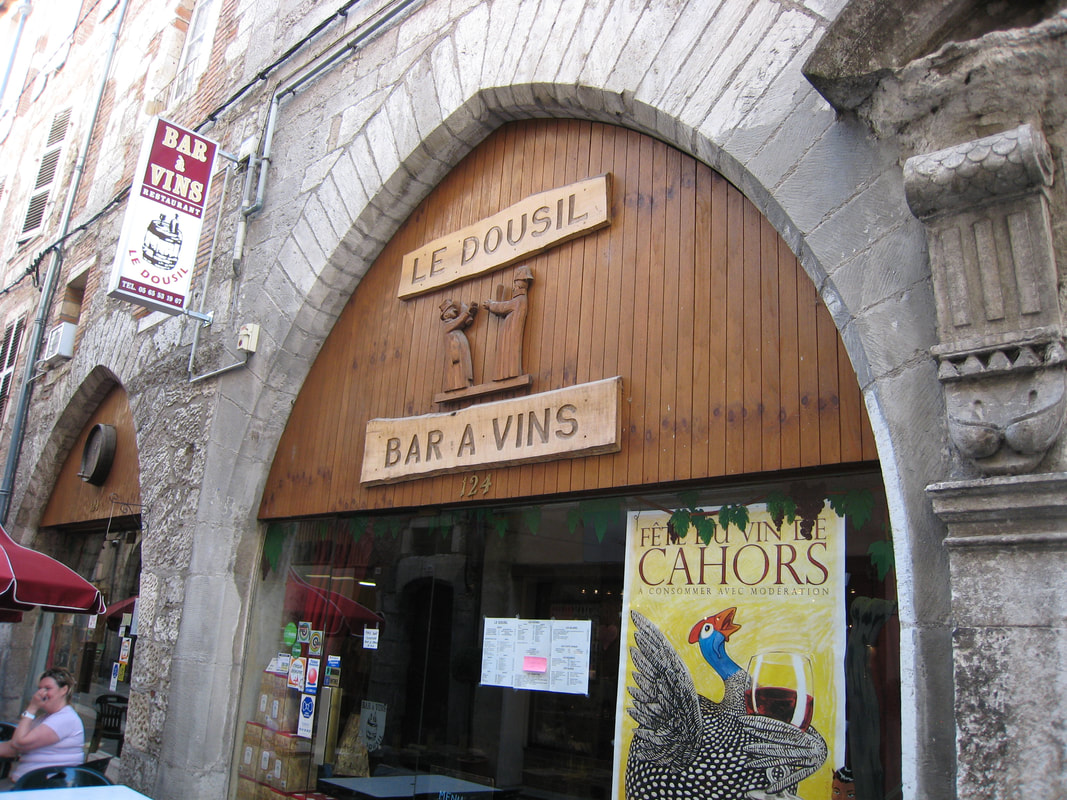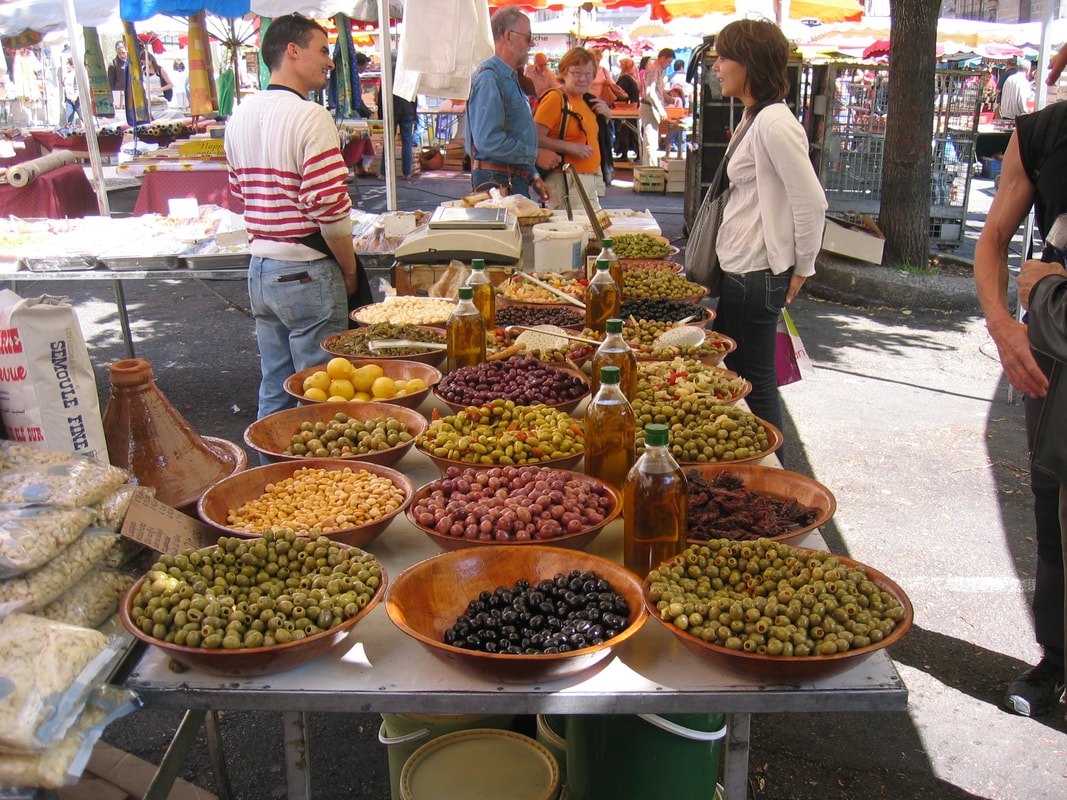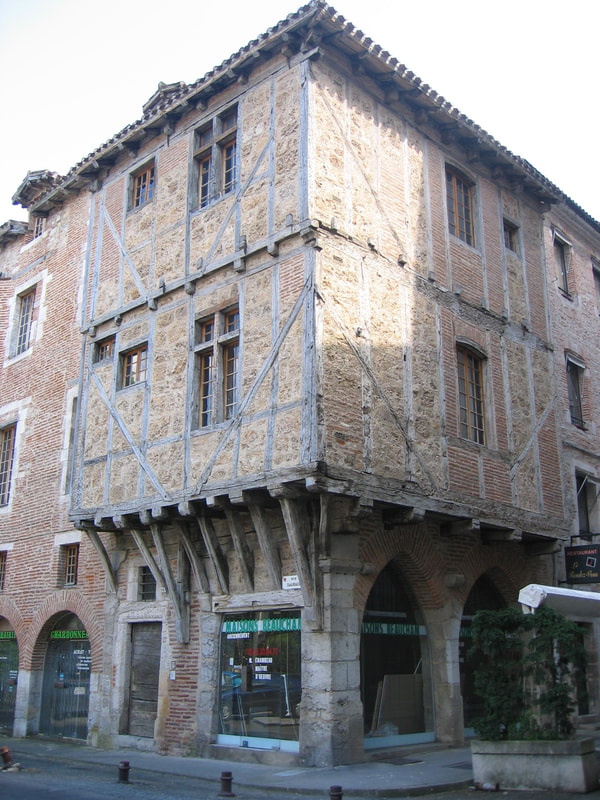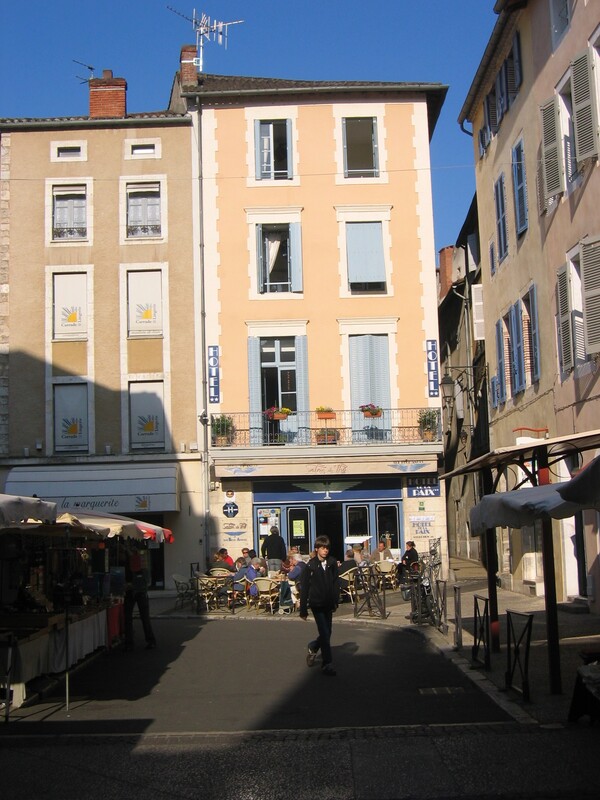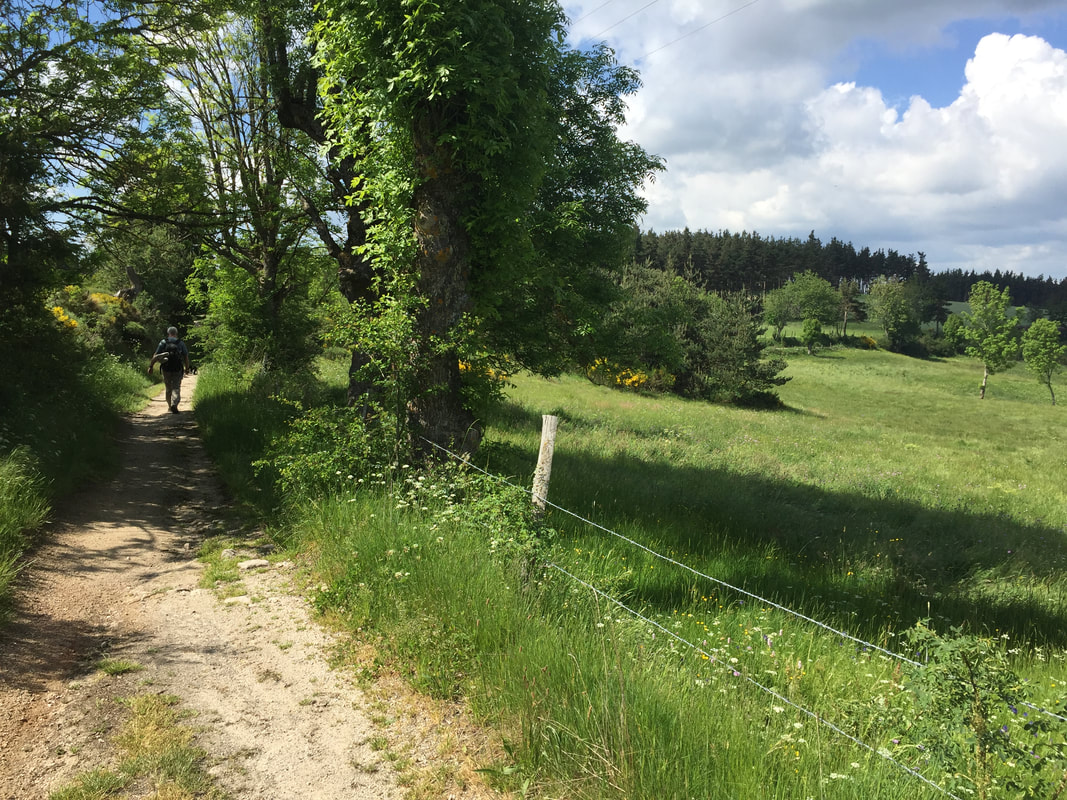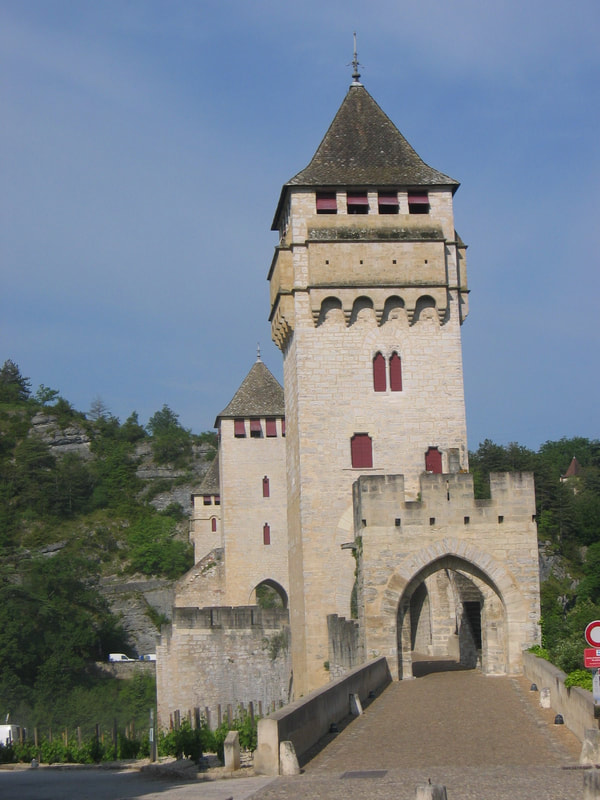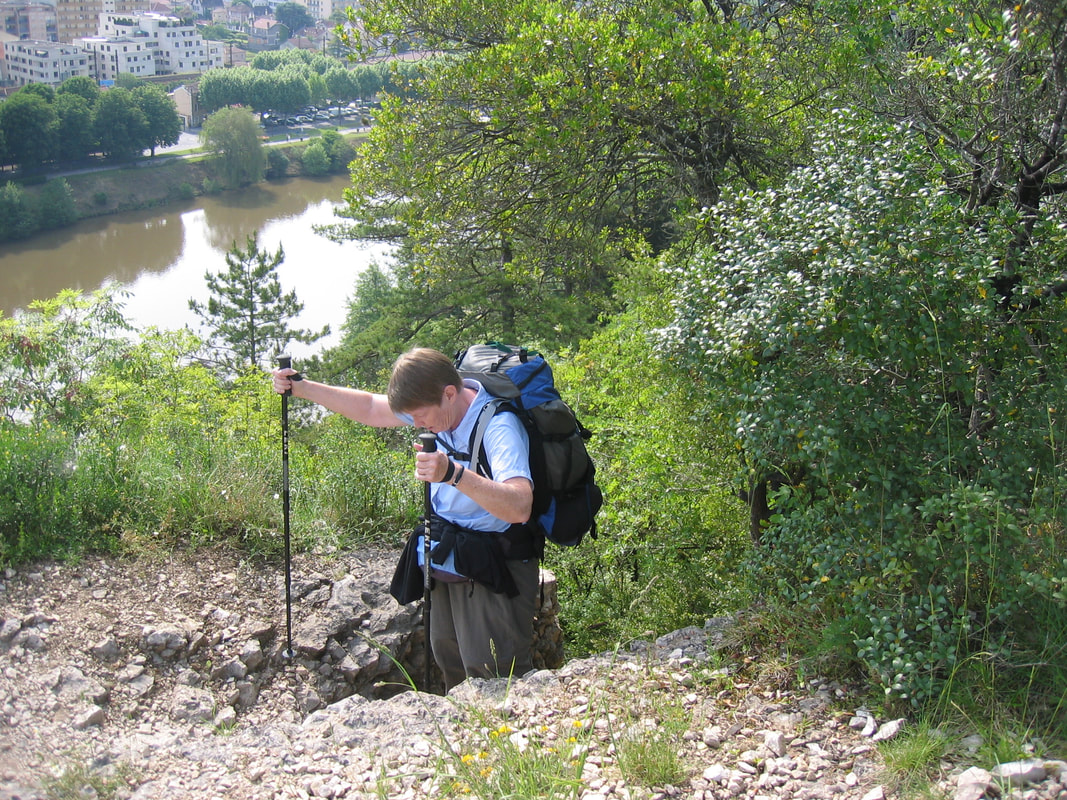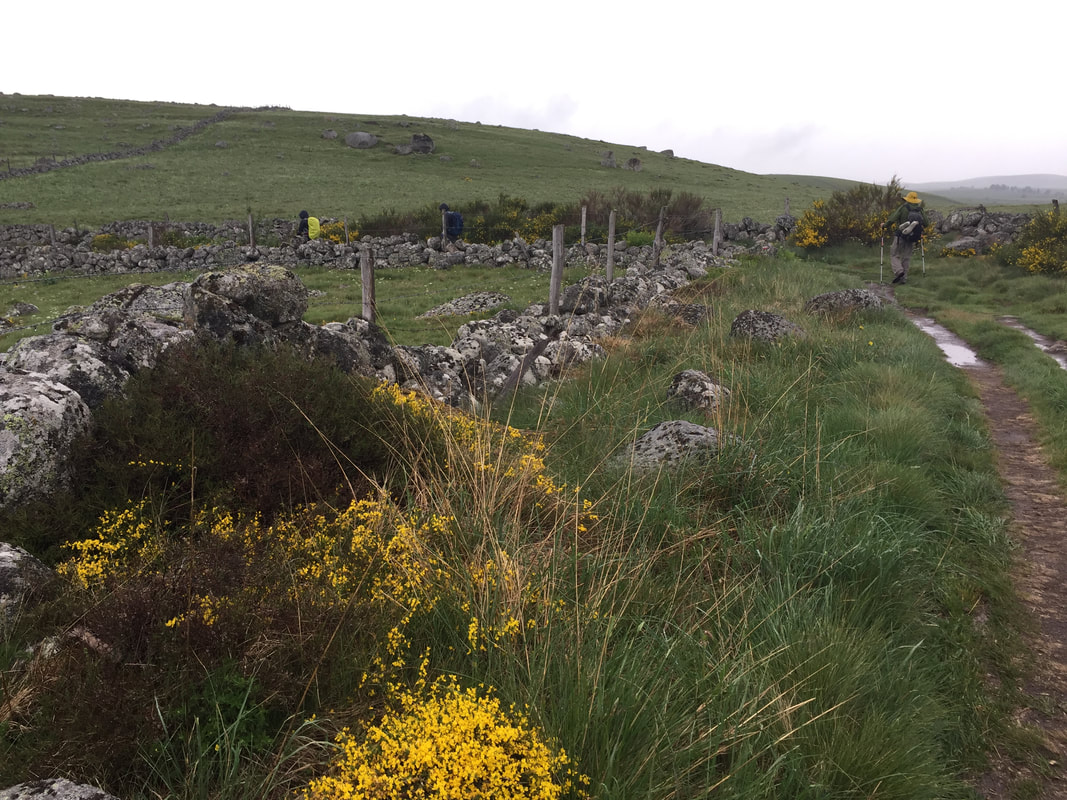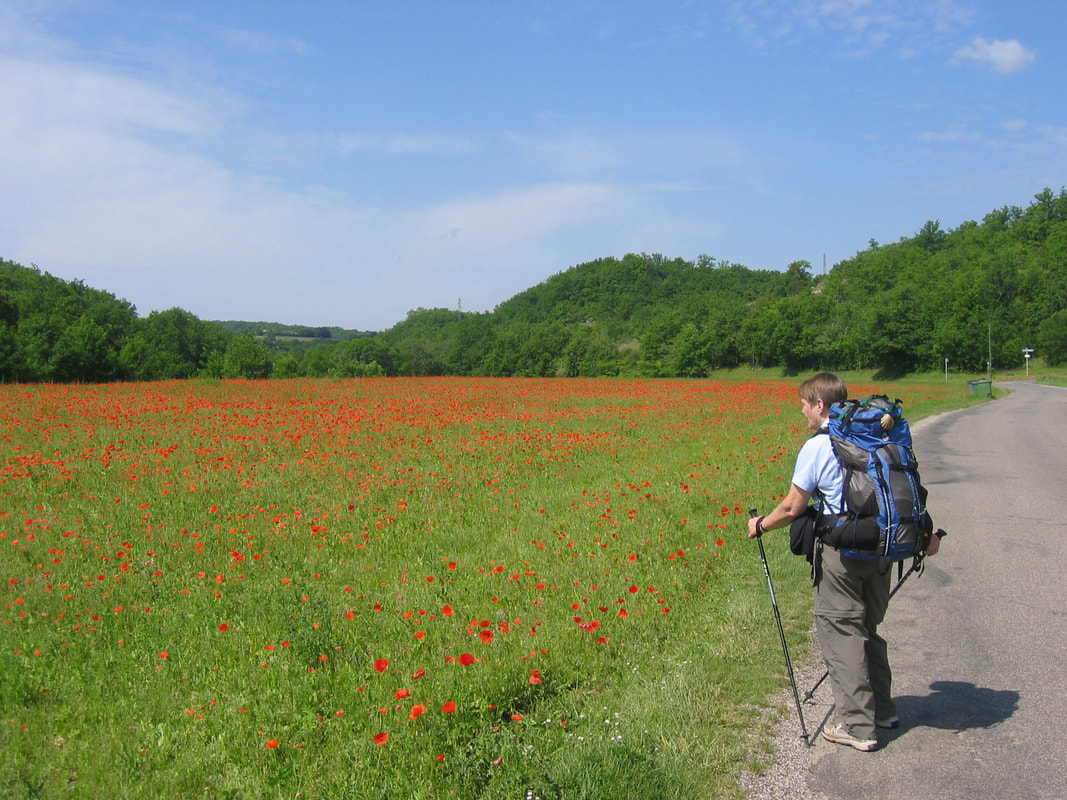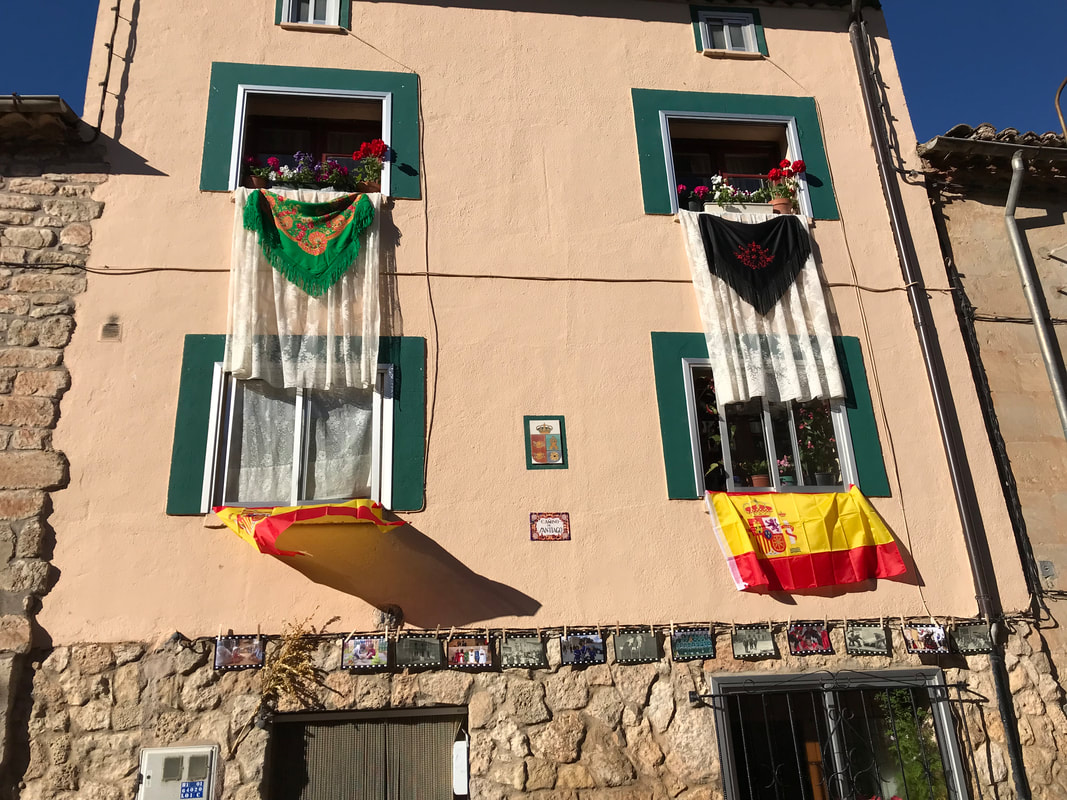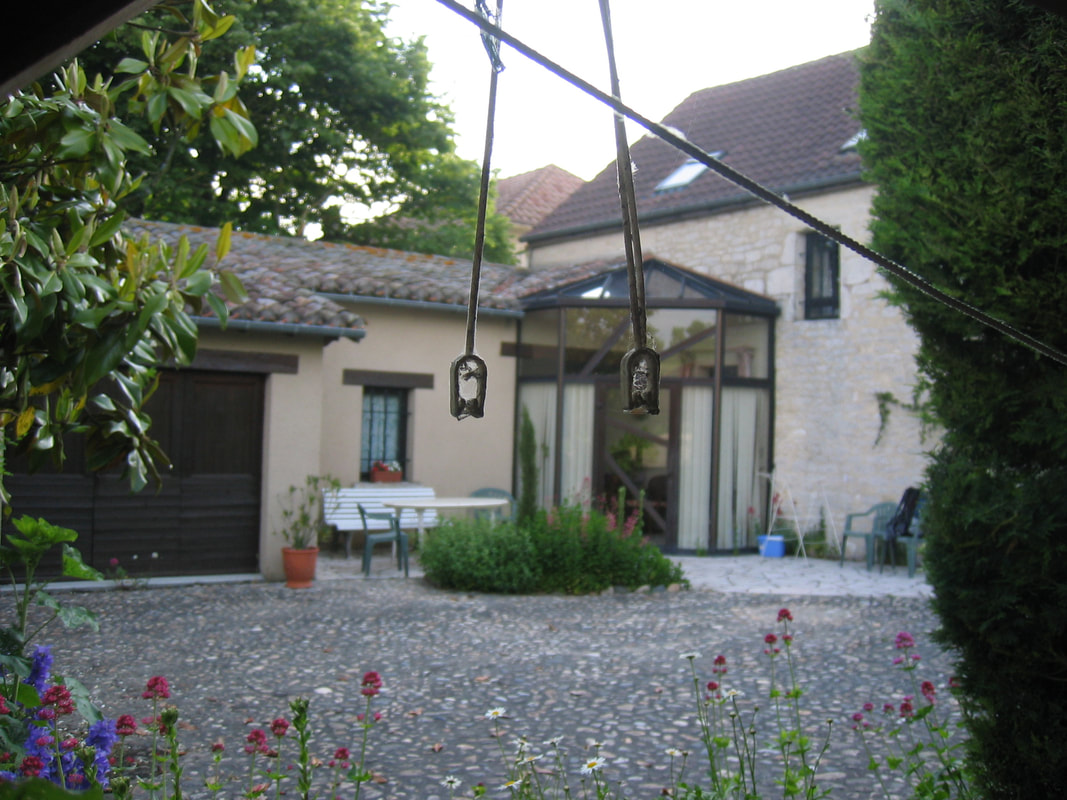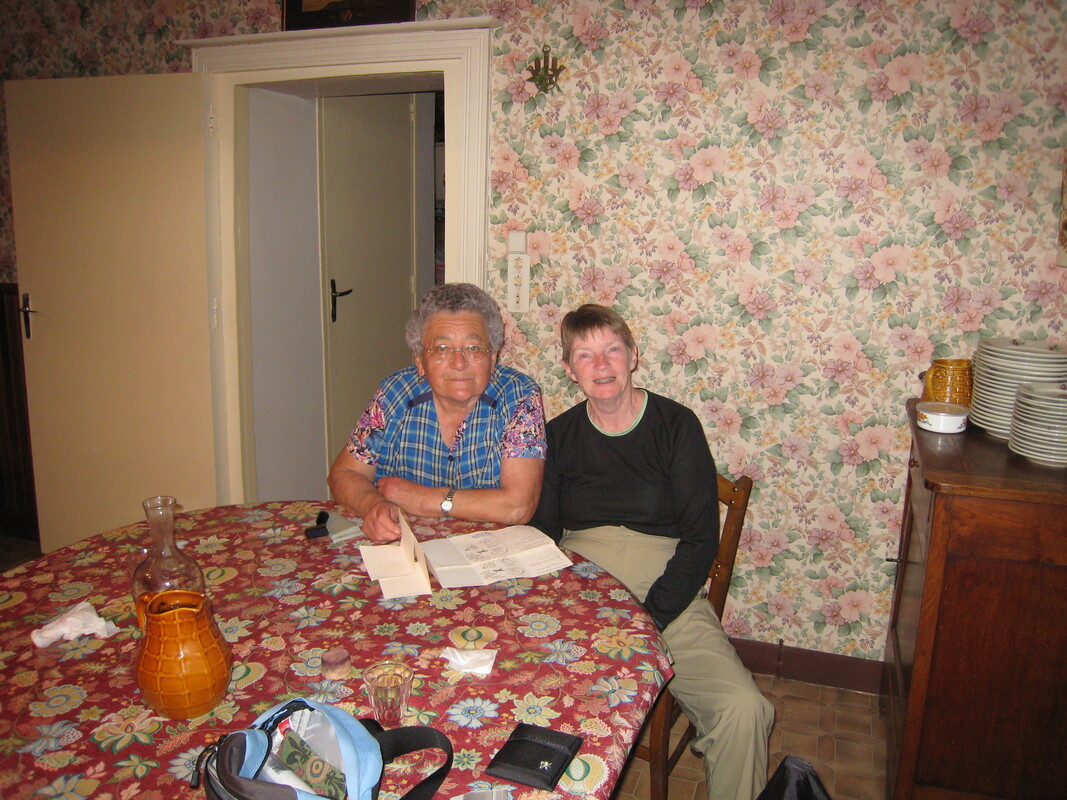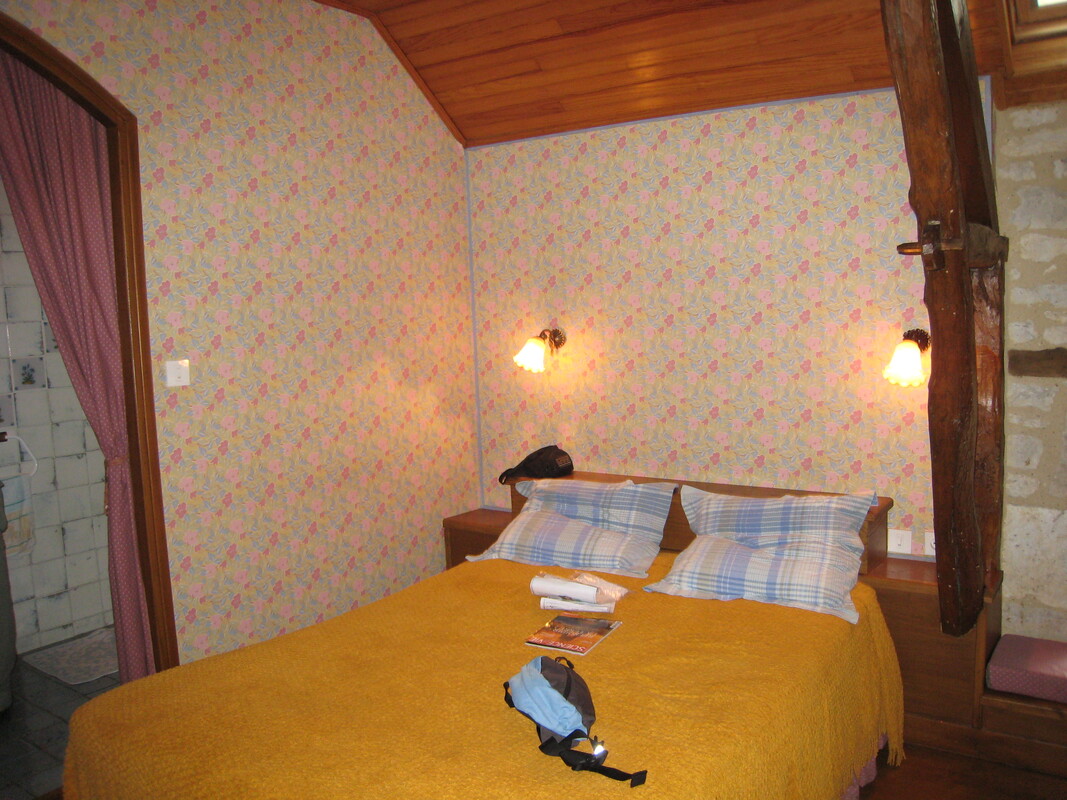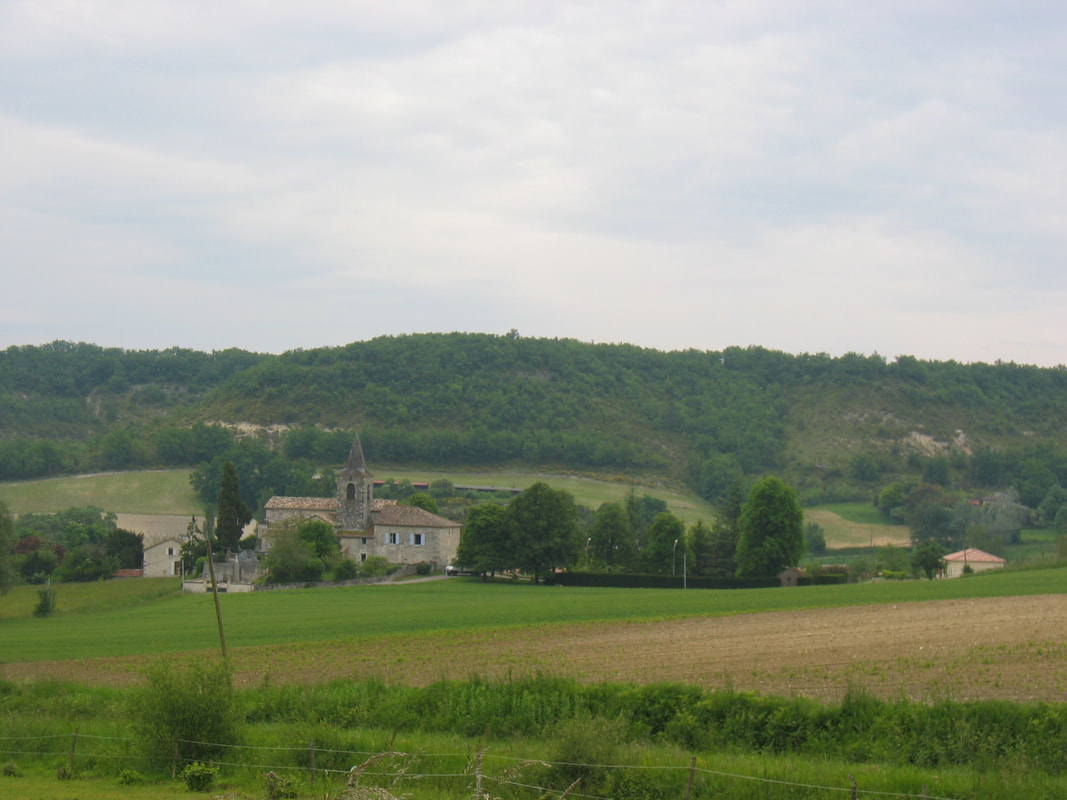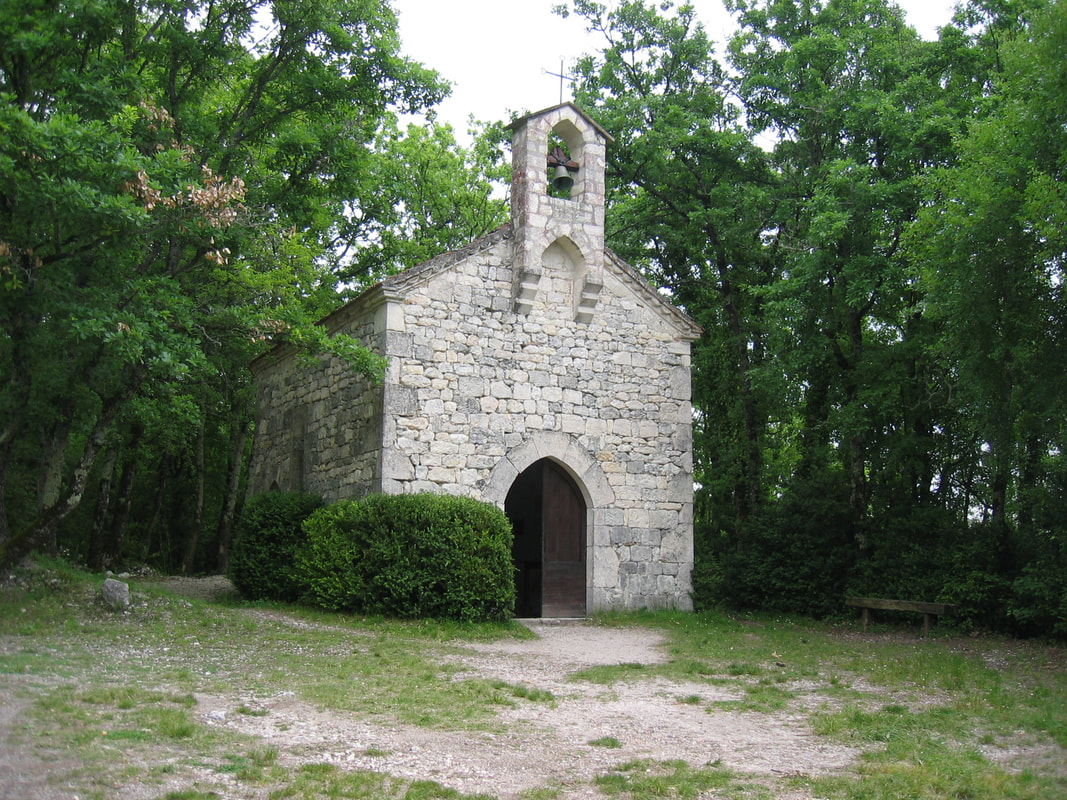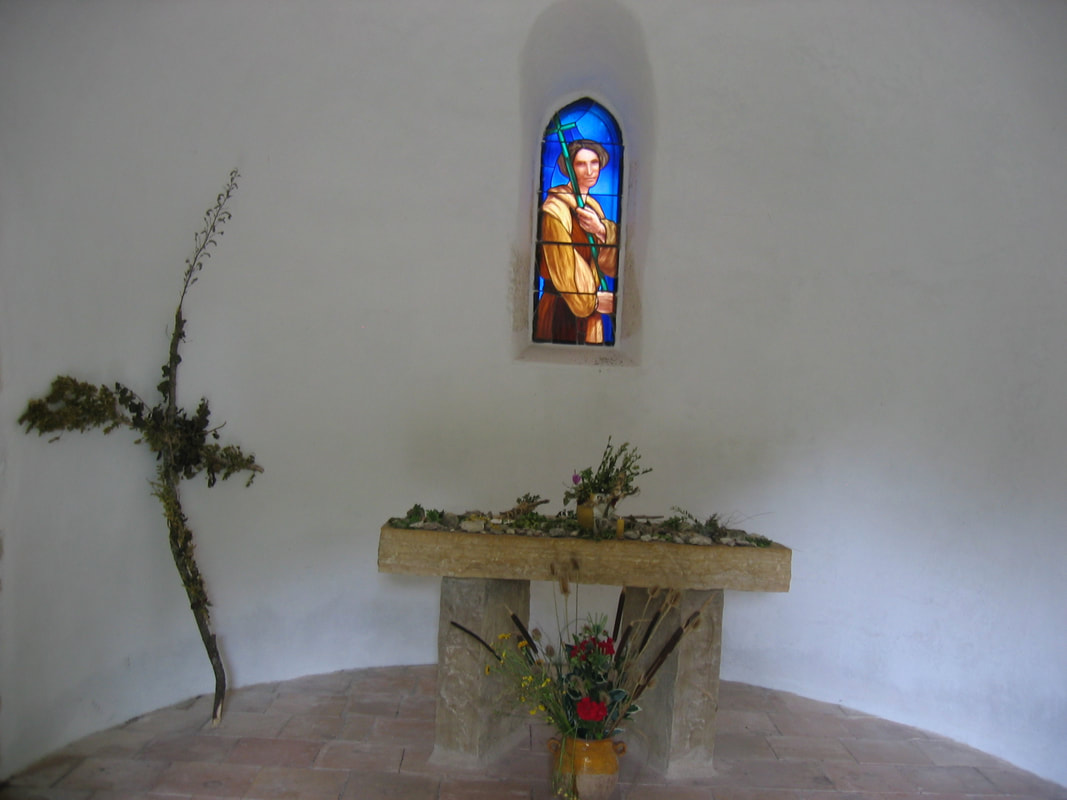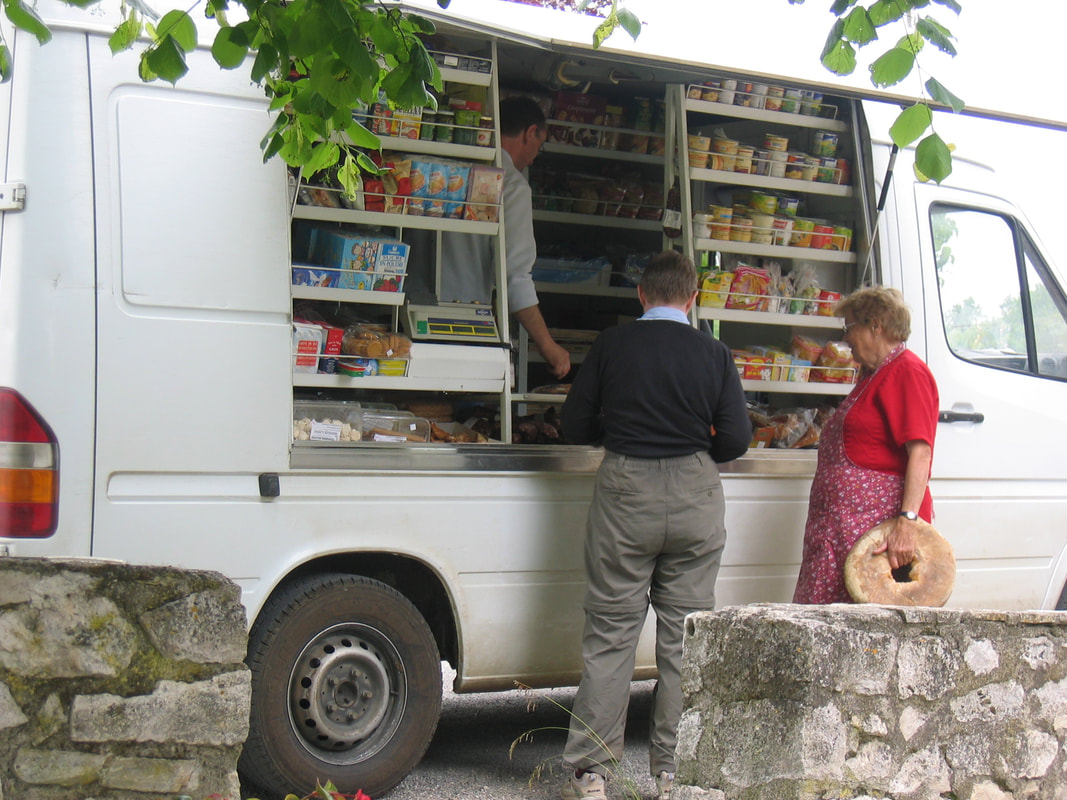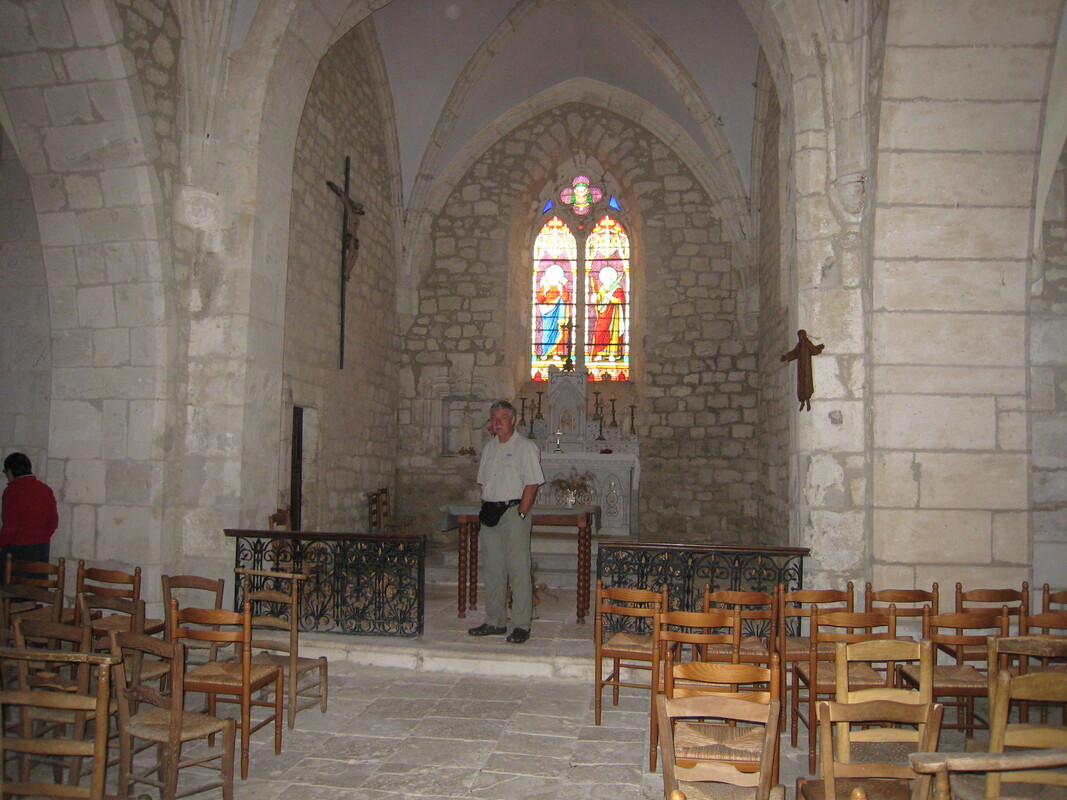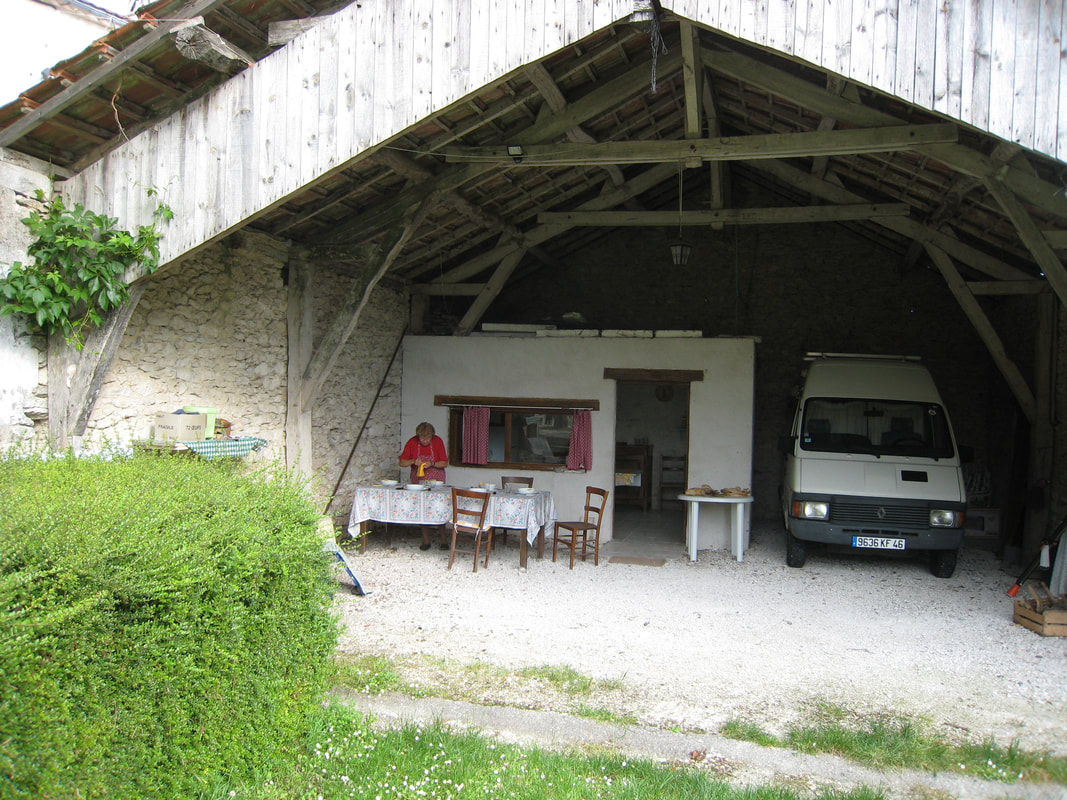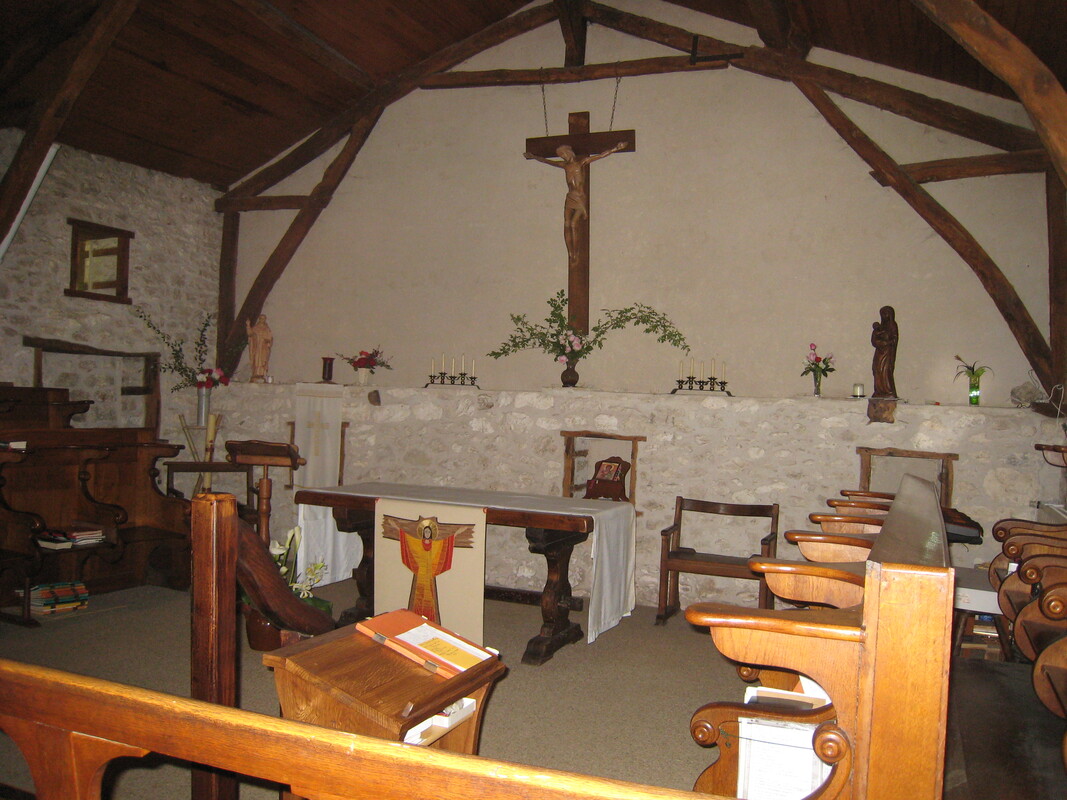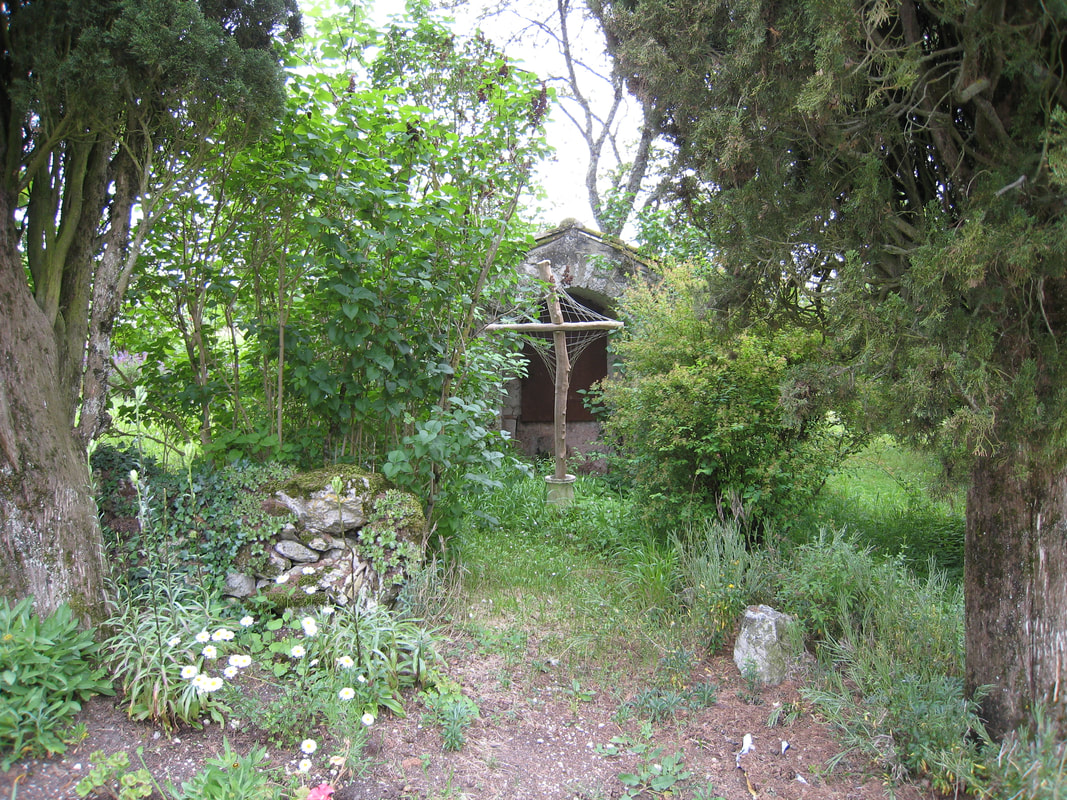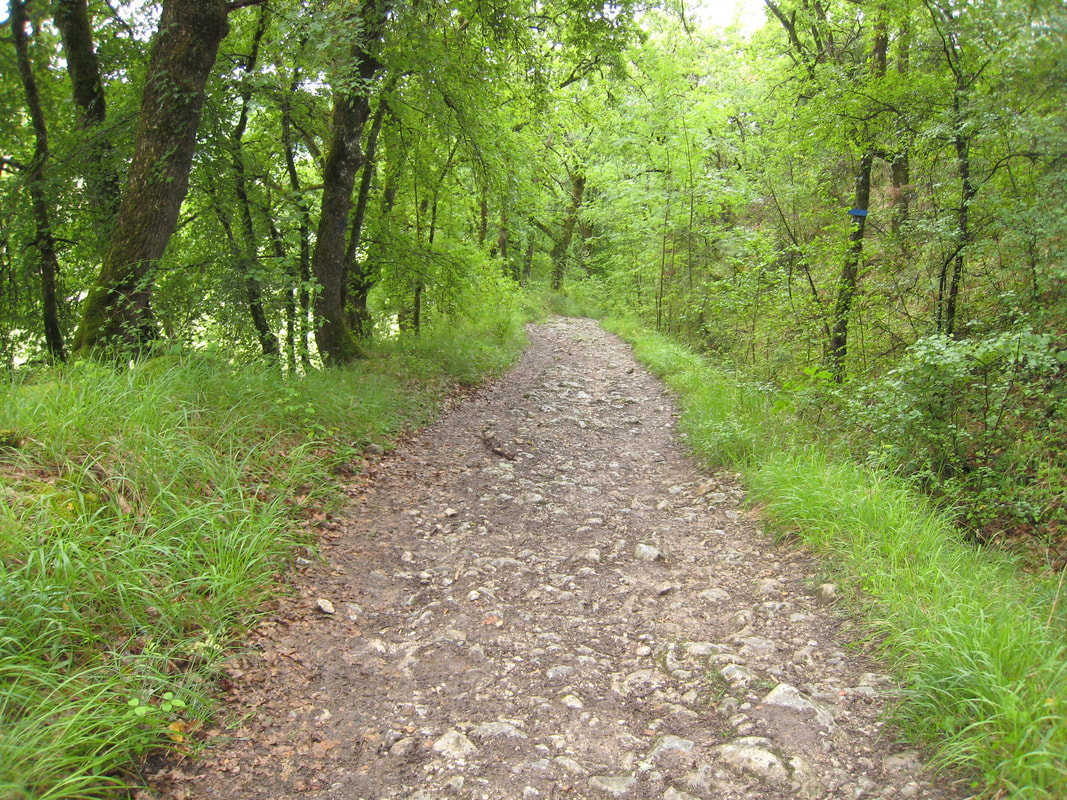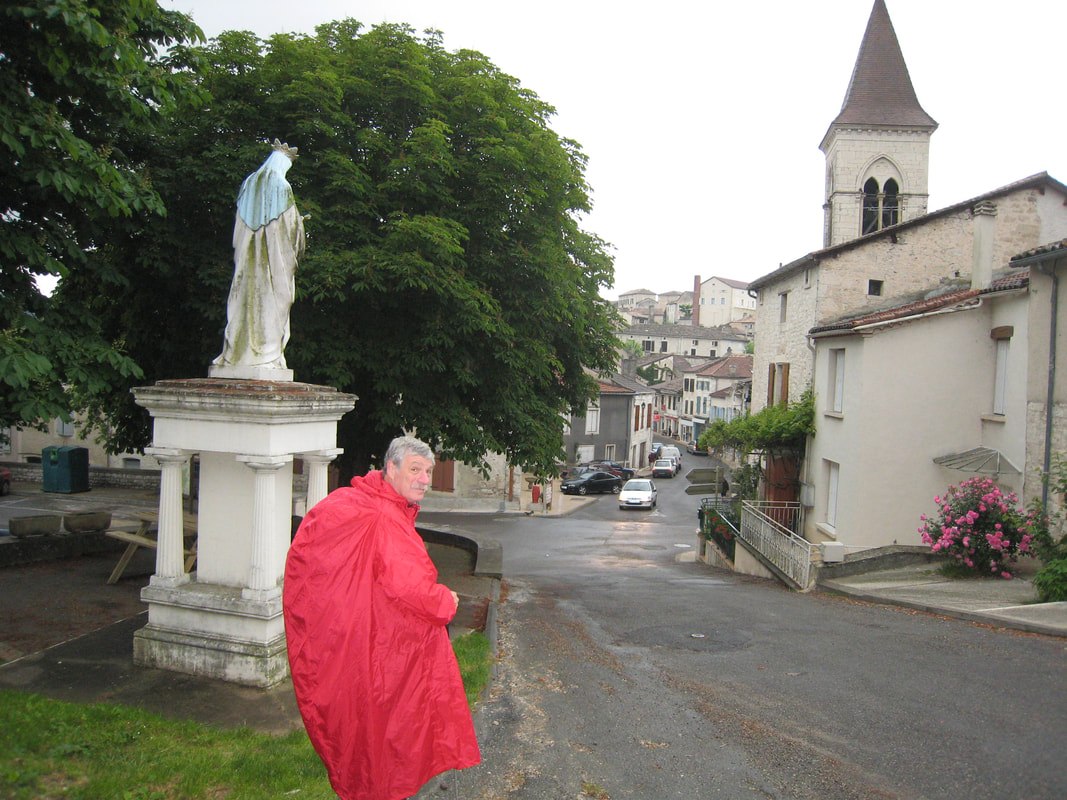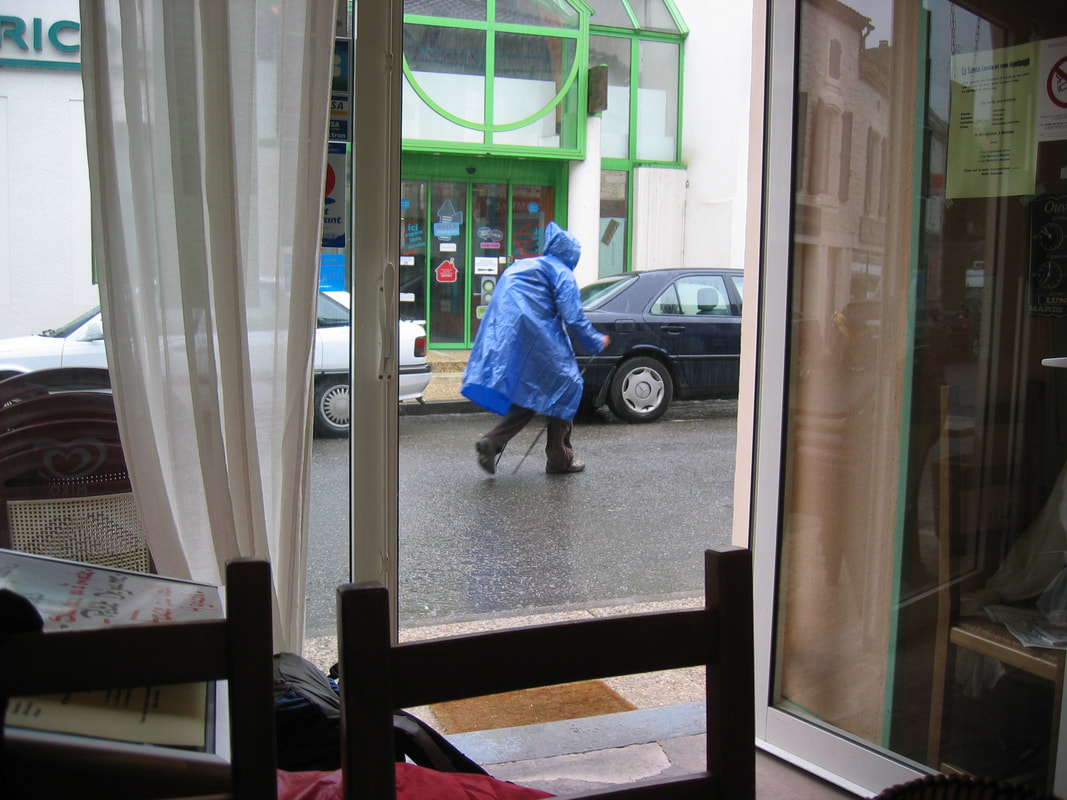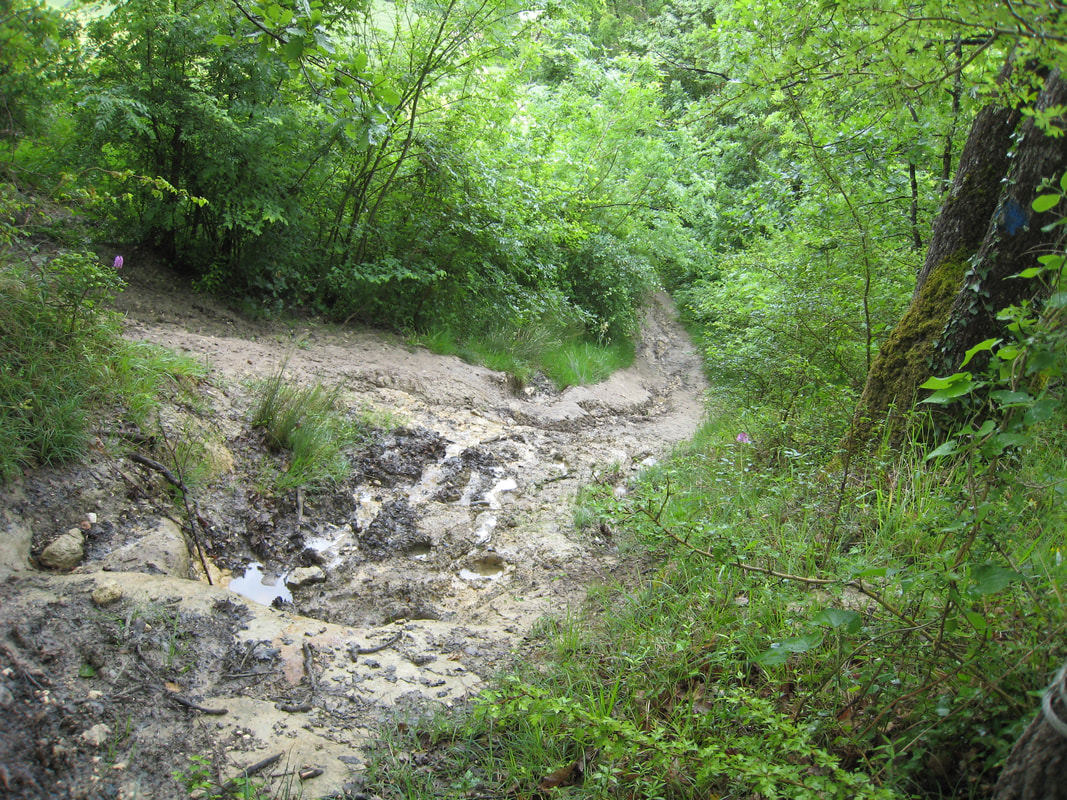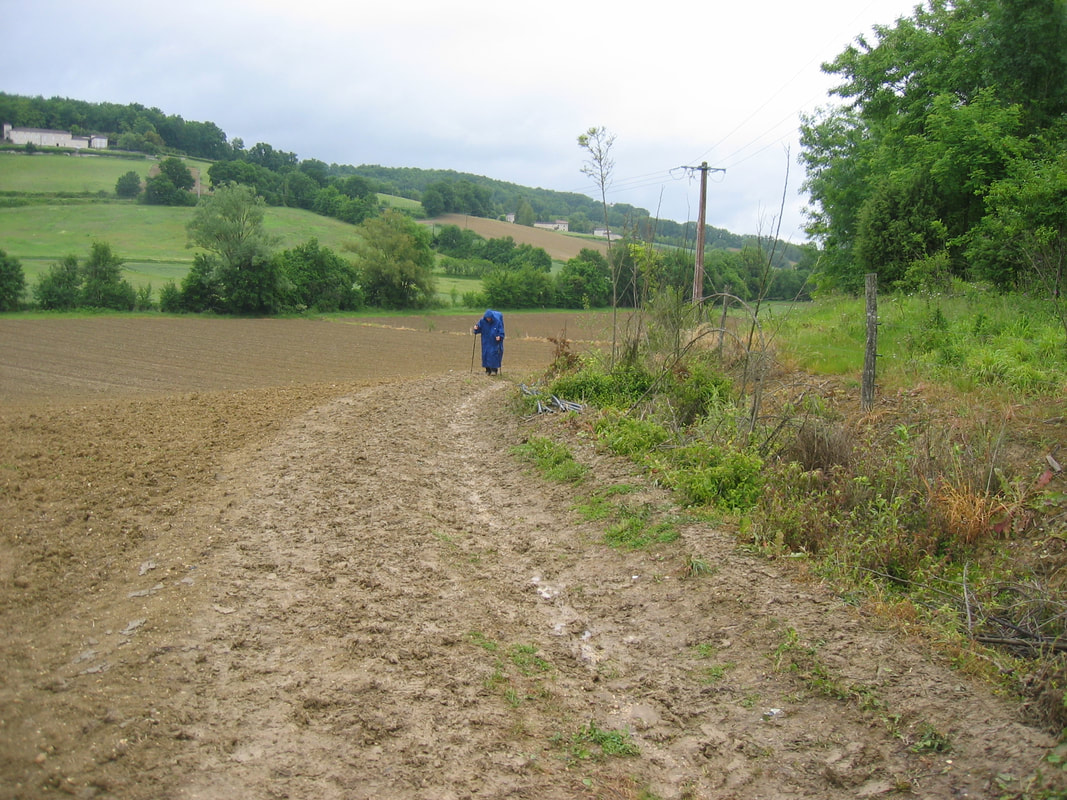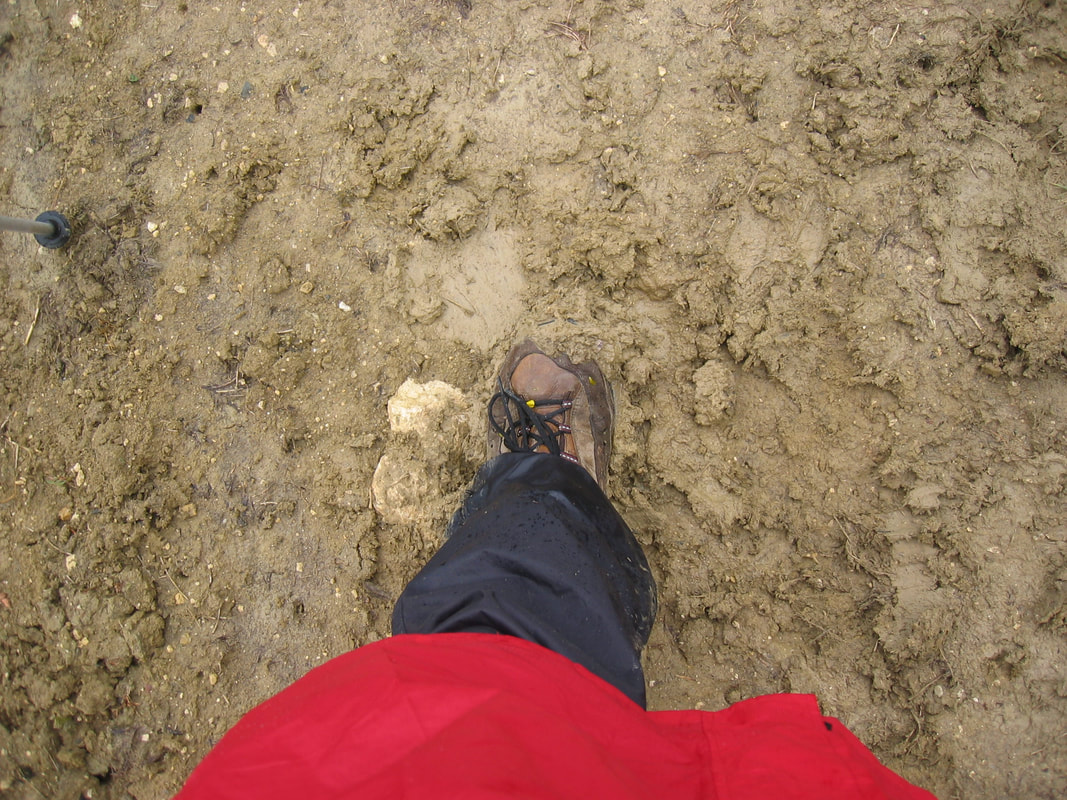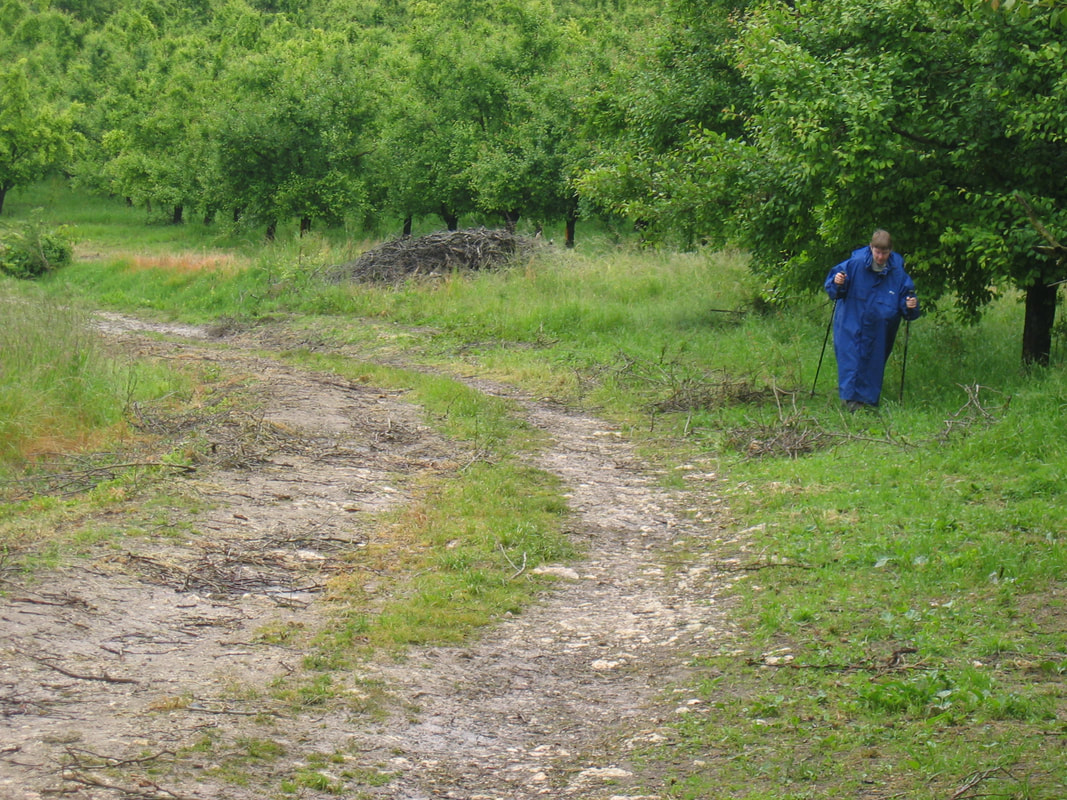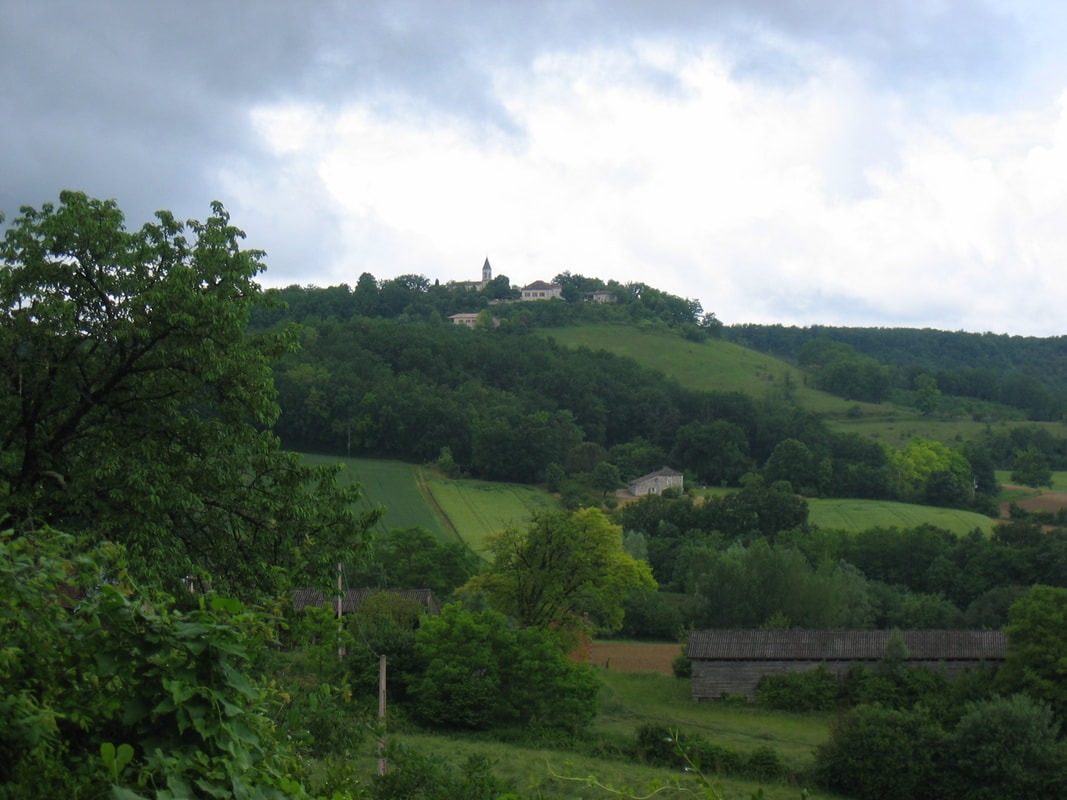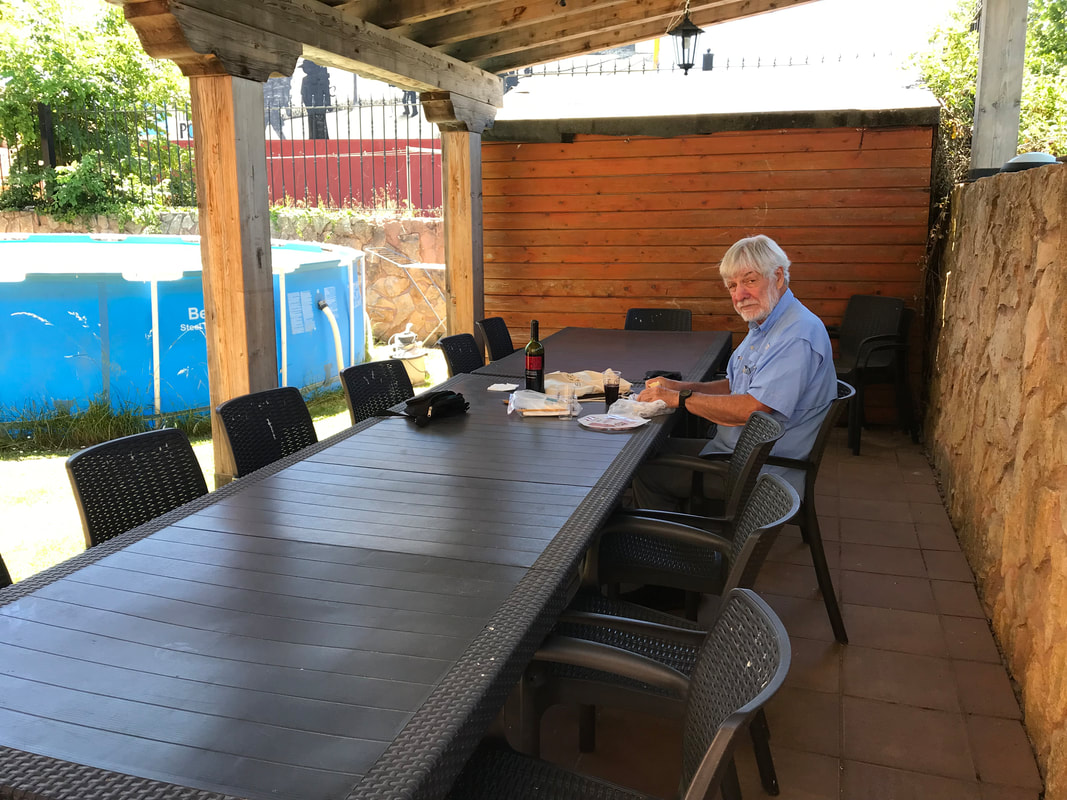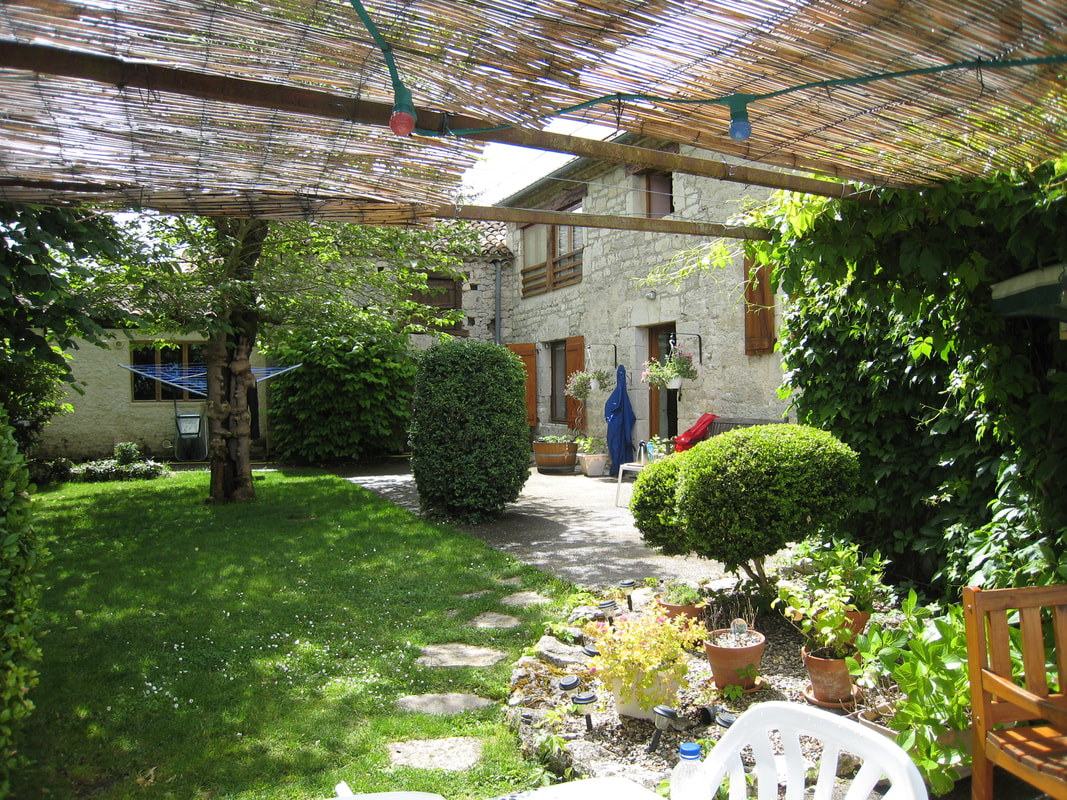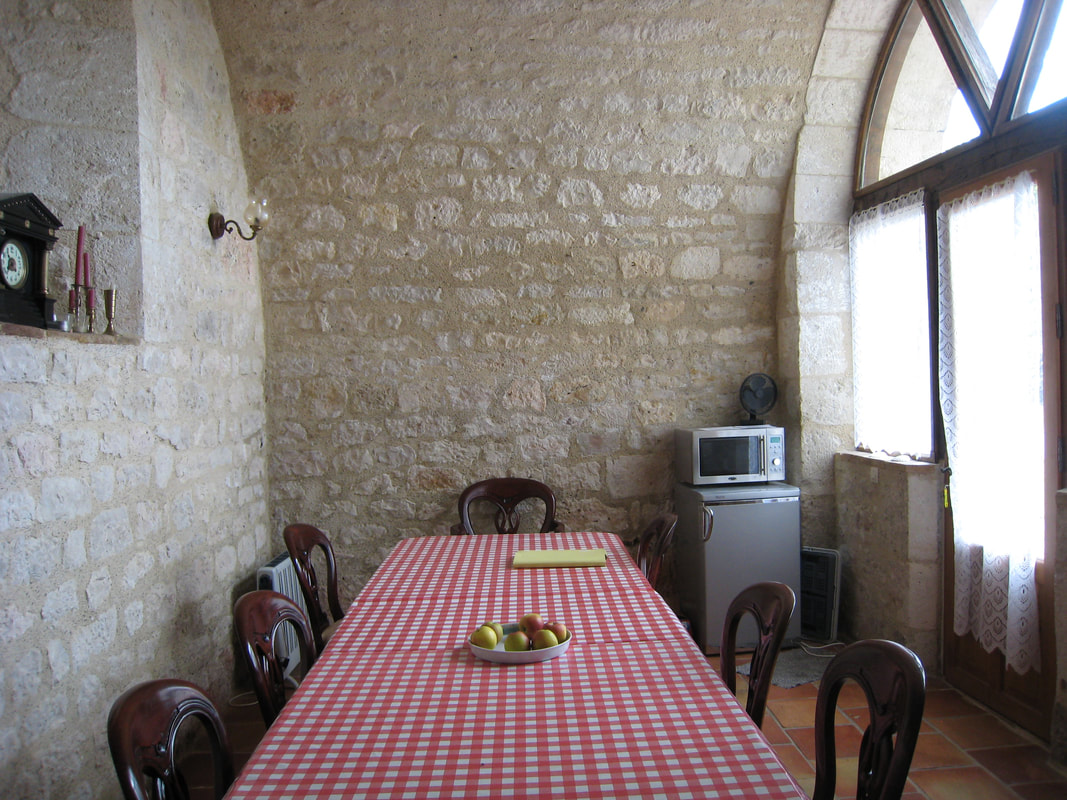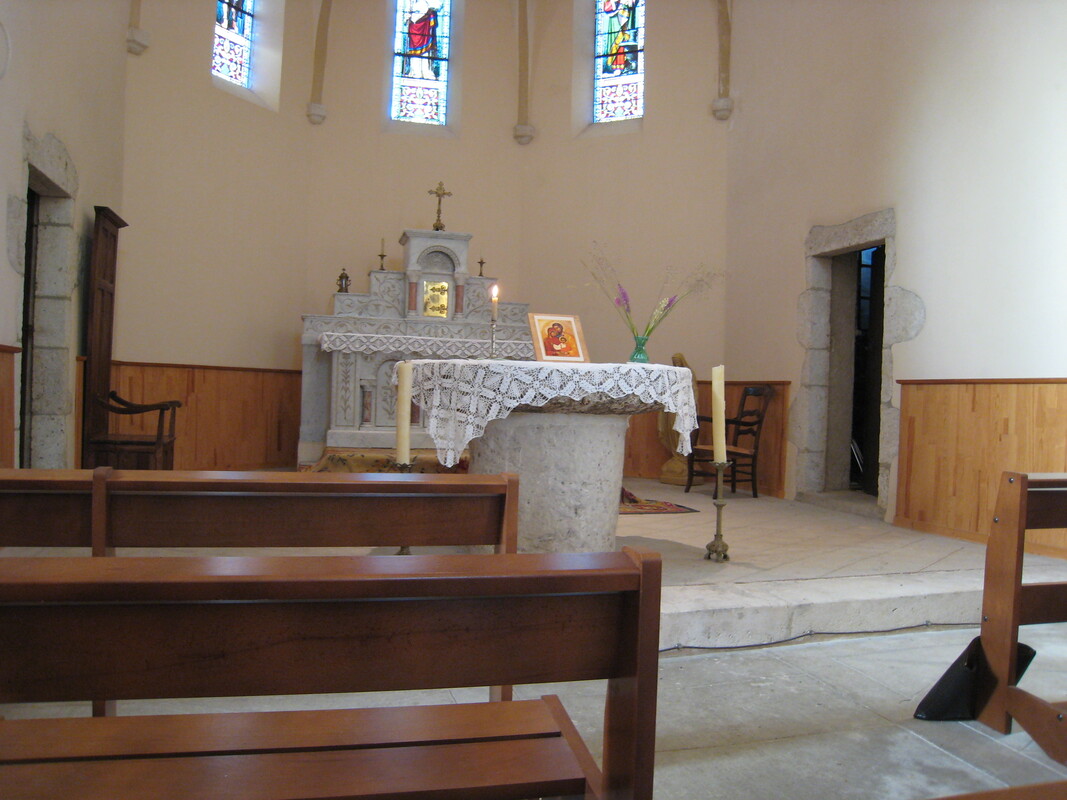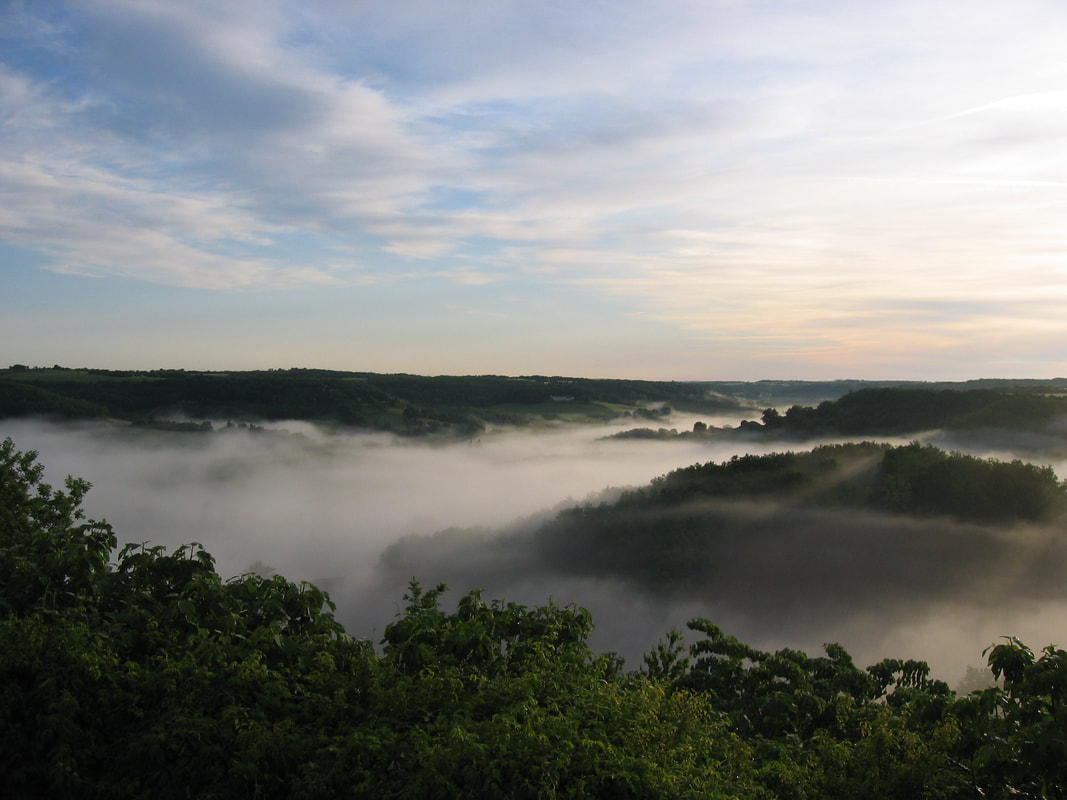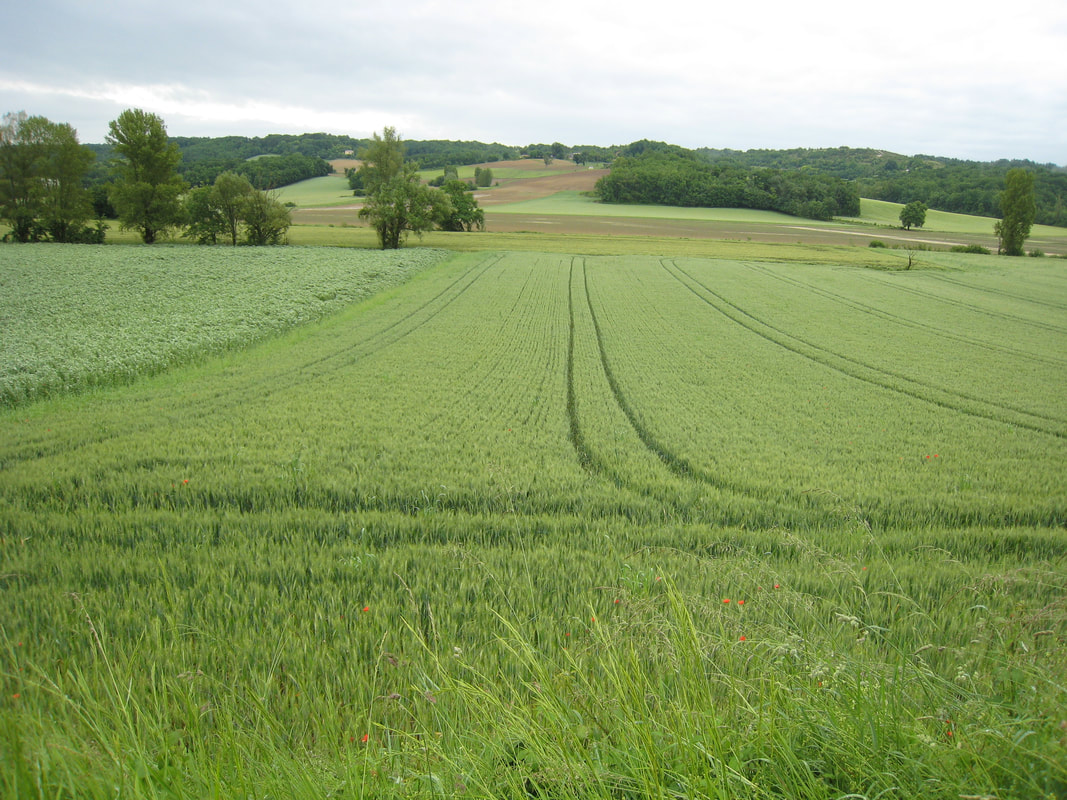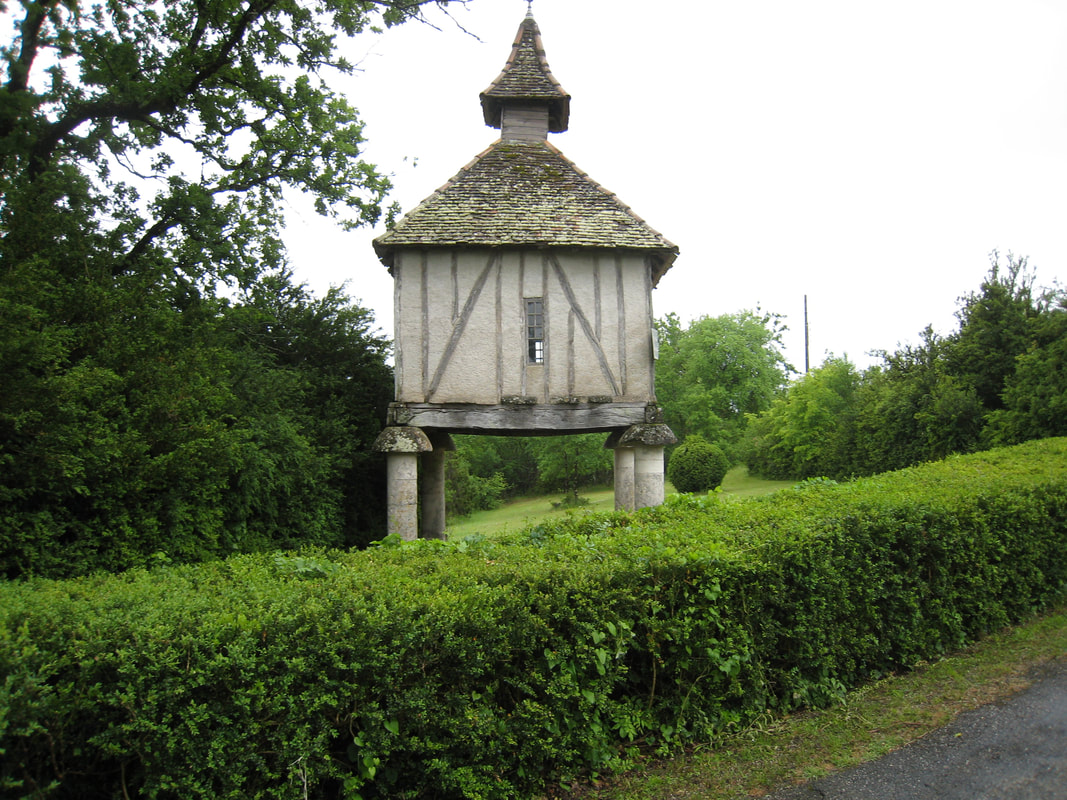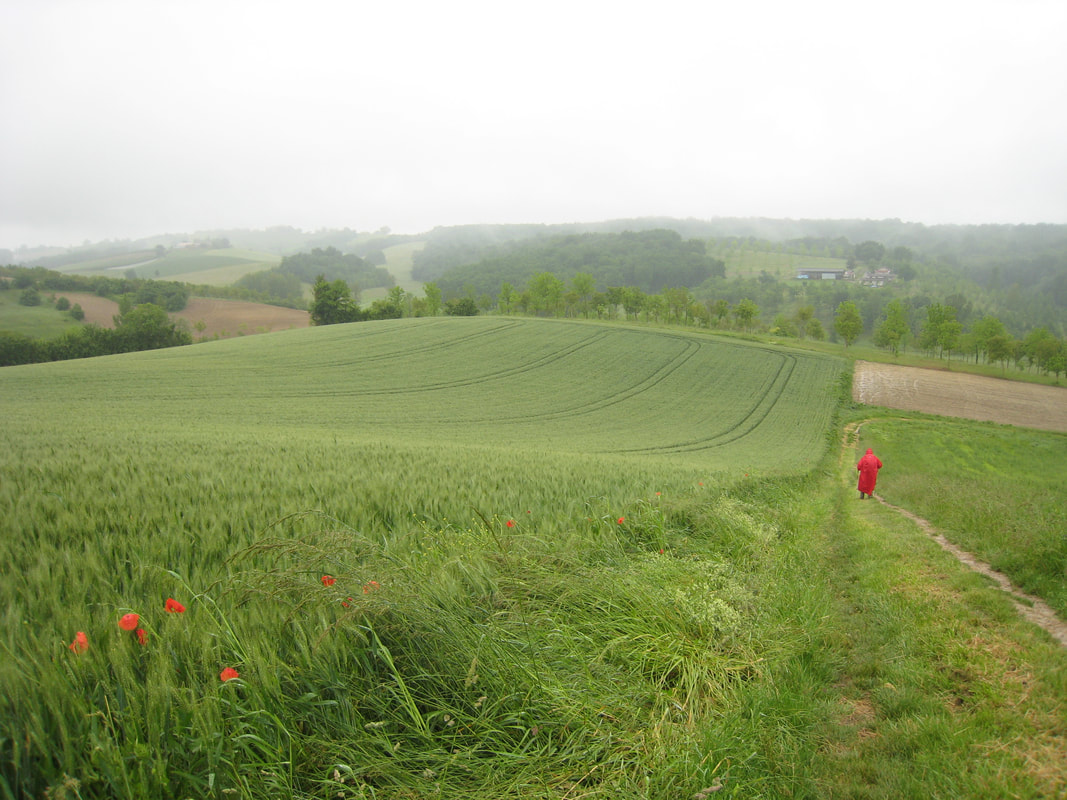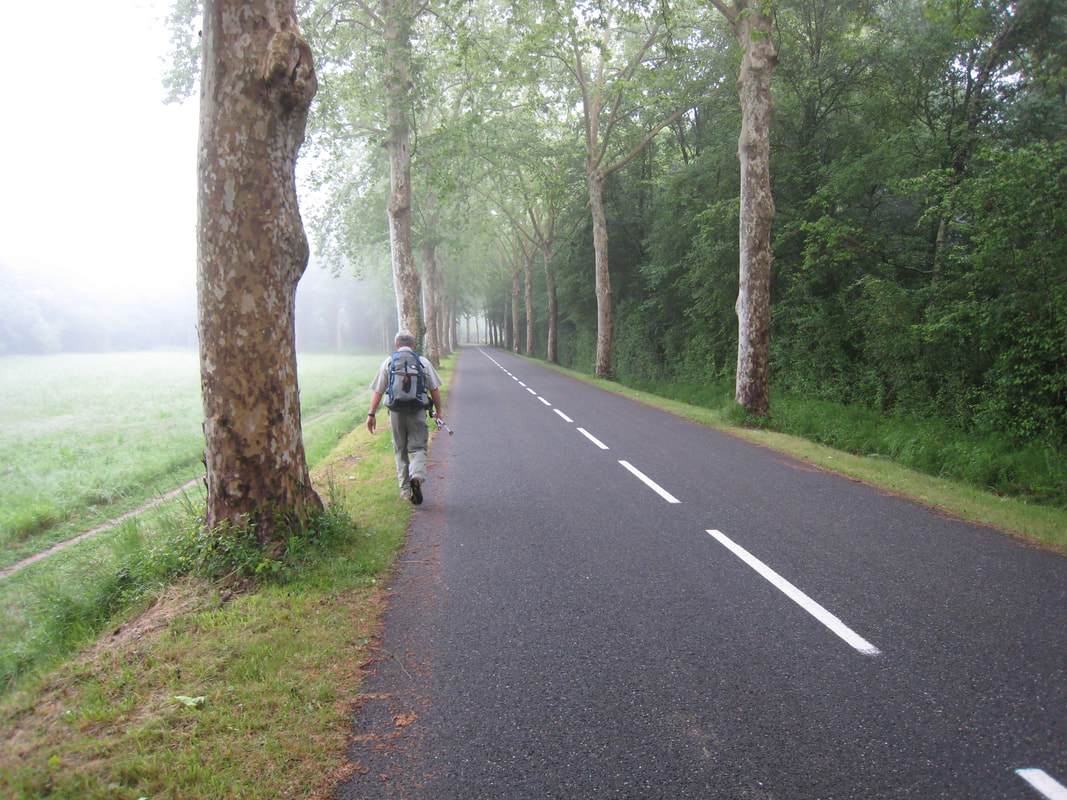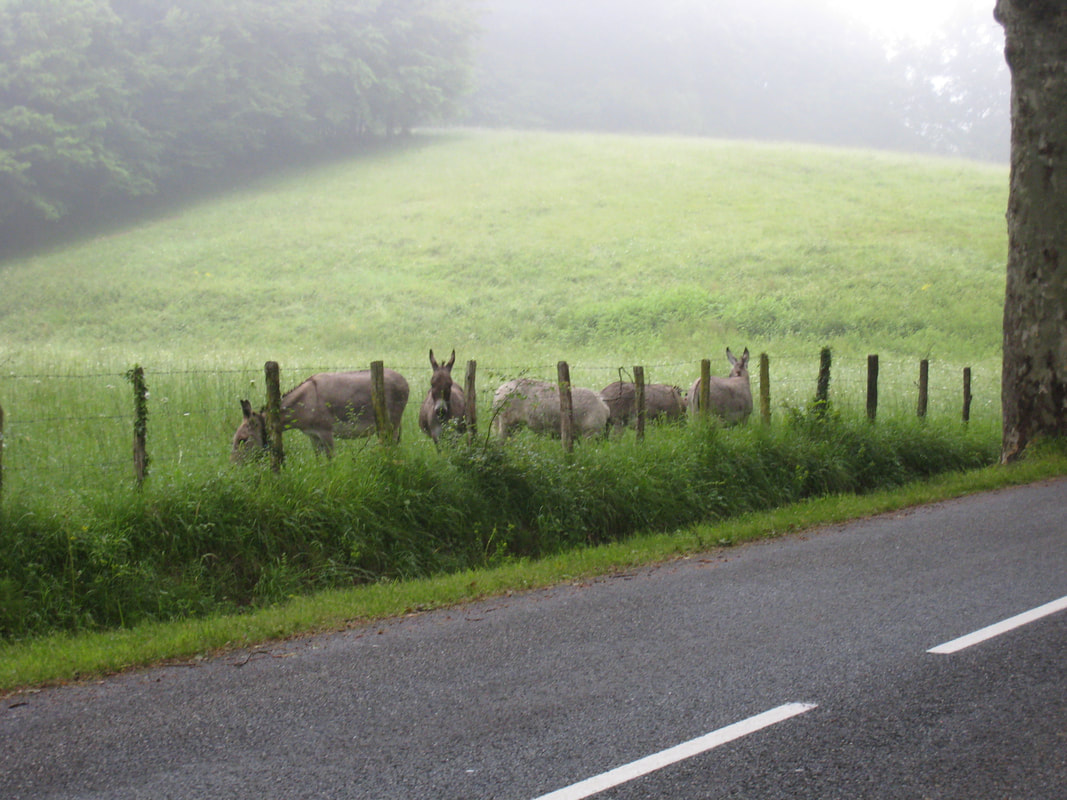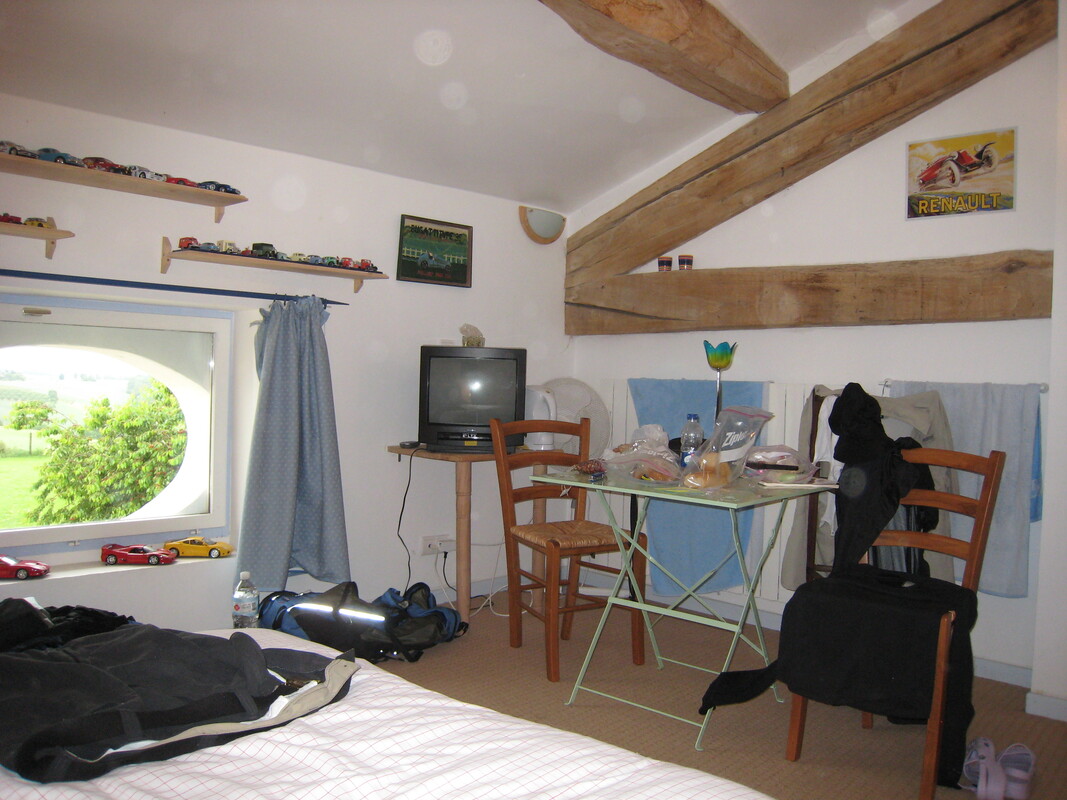Our July 2020 Walks
Day 31. July 1, 2.9 miles (4.4km) We would have started out of Conques today. The 30 miles between Conques and Figeac is the only section of the 1,000+ miles of Camino that we have never covered. Thus, our photos will all be from others. However, today, we post photos from our stay in Conques in 2017.
Days 32, 33, and 34. July 2, 2.9 miles (4.4 km). July 3, 4.8 miles (7.3 km). July 4, 5.2 miles (7.9km).
The 12 miles we have walked in July so far would have brought us to Decazeville. From the guidebook, Miam Miam Dodo, I learned that this is a "modern" city founded in the 1830s. It was a mining town.Now that mining has ceased, the Camino and tourism are the economic drivers. On the web, I found photos of places we would have walked through on these days.
The 12 miles we have walked in July so far would have brought us to Decazeville. From the guidebook, Miam Miam Dodo, I learned that this is a "modern" city founded in the 1830s. It was a mining town.Now that mining has ceased, the Camino and tourism are the economic drivers. On the web, I found photos of places we would have walked through on these days.
Week 5 -- Completed
Since our virtual Camino began on June 1 in Le Puy-en-Velay, we have walked a total of 141 miles.
Since our virtual Camino began on June 1 in Le Puy-en-Velay, we have walked a total of 141 miles.
Day 35. July 5, 4.8 miles (7.3 km). Having climbed to the church of St Roch, walked along a ridge for a few miles, descended to the River Lot, we would have reached the town of Livinhac today. It is built in a crook of the river.
Day 36. July 6, 4.8 miles (7.3 km). Out of Livinhac, we would have climbed up to a plateau and then had a relatively easy walk through agricultural lands to Montredon and on to Lacoste.
Day 37. July 7, 4.8 miles (7.3 km). We have a couple of routes we regularly follow in our Blues Creek, Gainesville neighborhood. Thus, our repeating distances records of 4.8, 3.5, and 3.1 miles. Today was very hot, in the 90s. Still . . . it is summer in Florida, so that is to be expected. The walk today, if in France, would have taken us to Felzins. The trail would have been through rolling agricultural fields and dairy farms. All the photos are from the blog -- http://christineandkeith.blogspot.com/2008/11/livinhac-to-felzins-france-monday.html
Day 38. July 8, 4.5 miles (6.8 km). We started walking today at 75 degrees in FL. In France it was in the 60s in France. The walk would have been still in rolling fields on the plateau between the Lot River to the north and the Célé River, through the villages of St-Felix, St-Jean Mirabel, and Les Crouzels. Just before Figeac, the trail drops to the valley of Le Célé. This would be our last day in unfamiliar territory because we would have reached Figeac where we started our 2008 Camino.
Day 39. July 9, 4.8 miles (7.3 km). Both in Florida and France, the morning temperature was in the 70s today. Afternoon will be in the 80s here and the 90s near Figeac.
Unlike our virtual Camino, on which we are walking into Figeac from the east, on our very first Camino evening ever we arrived from the west. We had flown from home to Paris, then Toulouse, and taken two trains to arrive in Figeac. We stayed (believe it or not) at a Best Western Hotel - Le Pont d'Or - right on the River Lot, which merged with Le Célé river just east of Figeac. The evening was marked by a dramatic thunderstorm. It included so much hail that the old part of the city, just across the river from us, flooded because the storm drains were clogged by the hail.
Before hitting the trail, we walked through the old city, bought some snacks, and watched the shop owners shoveling the drains clear.
Once in our packs, we headed out . . . accidentally in the wrong direction. We saw more of the city than we planned before finding the trail, which was about a block east of our hotel.
On the virtual Camino, we would have arrived today in Faycelles, where we stopped for lunch on Day 1 of all our Caminos.
Unlike our virtual Camino, on which we are walking into Figeac from the east, on our very first Camino evening ever we arrived from the west. We had flown from home to Paris, then Toulouse, and taken two trains to arrive in Figeac. We stayed (believe it or not) at a Best Western Hotel - Le Pont d'Or - right on the River Lot, which merged with Le Célé river just east of Figeac. The evening was marked by a dramatic thunderstorm. It included so much hail that the old part of the city, just across the river from us, flooded because the storm drains were clogged by the hail.
Before hitting the trail, we walked through the old city, bought some snacks, and watched the shop owners shoveling the drains clear.
Once in our packs, we headed out . . . accidentally in the wrong direction. We saw more of the city than we planned before finding the trail, which was about a block east of our hotel.
On the virtual Camino, we would have arrived today in Faycelles, where we stopped for lunch on Day 1 of all our Caminos.
Day 40. July 10, 5 miles (7.6 km) We have started walking an hour earlier in Florida as summer heat and humidity come on full force. Today it was in the 70s when we started and almost 90 when we finished our 5 miles. Where we would be walking in France, it was stayed in the 70s.
We would have reached Le Puy Cavel, after walking in the Lot valley through Mas de la Croix where we stayed in 2008 and Béduer. From the time we left Faycelles, it poured rain . . . quite the first day of our Camino experience.
On that real, 2008, Camino, we missed Mas de la Croix, which turned out to be only a bend in the road, not a town as we expected. We walked right past it, in the rain, and on into Béduer, finding the place completely closed up. Confused, only after some reckoning did we realize that we had passed through our intended destination about a kilometer before. We backtracked, arriving wet and tired. We waved off another couple of pèlerins who graciously invited us to accompany them to a pizza restaurant nearby for a leisurely dinner. We collapsed for the night, awaking the next morning, wearily pulling on our still-wet boots and trudging on. The owners of the small gite where we stayed had experienced the severe hail storm the night before, and their vegetable garden was ruined. Those were the days!
We would have reached Le Puy Cavel, after walking in the Lot valley through Mas de la Croix where we stayed in 2008 and Béduer. From the time we left Faycelles, it poured rain . . . quite the first day of our Camino experience.
On that real, 2008, Camino, we missed Mas de la Croix, which turned out to be only a bend in the road, not a town as we expected. We walked right past it, in the rain, and on into Béduer, finding the place completely closed up. Confused, only after some reckoning did we realize that we had passed through our intended destination about a kilometer before. We backtracked, arriving wet and tired. We waved off another couple of pèlerins who graciously invited us to accompany them to a pizza restaurant nearby for a leisurely dinner. We collapsed for the night, awaking the next morning, wearily pulling on our still-wet boots and trudging on. The owners of the small gite where we stayed had experienced the severe hail storm the night before, and their vegetable garden was ruined. Those were the days!
Day 41. July 11, 4.8miles (7.3 km). Where we would be walking in France today the temperatures would have started in the mid 60s and climbed only to the high 70s before we stopped for the day. It was about 10 degrees hotter in Florida today.
The trail in France has few hills. We would have walked through Gréalou and arrived in Le Verdier. They are the beginning of a Parc Naturel des Causses, which continues to Cahors. It is a region of sandstone and limestone, riddled by caves and full of subterranean rivers. Only near the river is the soil rich enough for farming. The rest of the land is used for grazing sheep. This was an area where Druids were active and there are many dolmens and monoliths from their time. The houses and shelter huts are made of local sandstone and limestone.
The trail in France has few hills. We would have walked through Gréalou and arrived in Le Verdier. They are the beginning of a Parc Naturel des Causses, which continues to Cahors. It is a region of sandstone and limestone, riddled by caves and full of subterranean rivers. Only near the river is the soil rich enough for farming. The rest of the land is used for grazing sheep. This was an area where Druids were active and there are many dolmens and monoliths from their time. The houses and shelter huts are made of local sandstone and limestone.
Week 6 -- Completed
Since our virtual Camino began on June 1 in Le Puy-en-Velay, we have walked a total of 172 miles.
Since our virtual Camino began on June 1 in Le Puy-en-Velay, we have walked a total of 172 miles.
Day 42. July 12, 4.8(7.3 km). Temperatures in France for today's walk started in the mid 60s and reached almost 80. In Florida . . . mid 70s to almost 90. We would have reached Cajarc. In 2008, we stopped there for lunch.
On today's walk, we would have seen few towns but there are there, hidden by the woods around us.
From the start of this walk, in Le Puy-en-Velay, we saw many memorial plaques to the soldiers lost in "la Grande Guerre, 1914-1918. One memorial refers to the "national suicide, that was this conflict." The memorial says that hundreds of young men died in the fullness of their youth. They were the future of the country. The future was broken in Verdun, Les Eparges, the Chemin des Dames. When armistice was sounded on 11 November 1918, thousands of mothers, wives, and fiancees found themselves alone. Thousands of couples were stolen of their future children, and of their hope. Life in the country stopped and the people fell into a terrible depression from which they have barely recovered a century later.
On today's walk, we would have seen few towns but there are there, hidden by the woods around us.
From the start of this walk, in Le Puy-en-Velay, we saw many memorial plaques to the soldiers lost in "la Grande Guerre, 1914-1918. One memorial refers to the "national suicide, that was this conflict." The memorial says that hundreds of young men died in the fullness of their youth. They were the future of the country. The future was broken in Verdun, Les Eparges, the Chemin des Dames. When armistice was sounded on 11 November 1918, thousands of mothers, wives, and fiancees found themselves alone. Thousands of couples were stolen of their future children, and of their hope. Life in the country stopped and the people fell into a terrible depression from which they have barely recovered a century later.
Despite the very different circumstances, the words of the plaque resonate as we walk our Camino virtually because of the pandemic that is killing so many worldwide.
Days 43 and 44. July 13 and 14, 4.8 and 5.2 miles (17km). These two days of walking would have brought us past Gayfié, where we stayed the night in 2008 and on to Limogne-en-Quercy, our next night's stop.
We had missed a short cut to Gayfié and stopped in a nearby town to call for a ride, whihc they offered via the guidebook. We had a cabin in a campground as our night's stay. We blew the fuses turning on radiators to dry our clothes, but figured them out eventually. The hosts brought us so much food that we carried some of it for snacks over the next few days. In Limongne-en-Quercy, we stayed we a couple who rented out rooms and shared a bathroom with other pilgrim boarders. we bought dinner in town and the host, whose husband had fallen off the roof the week before and was on crutches, made a wonderful breakfast of breads, jams, meats, and yogurt.
We had missed a short cut to Gayfié and stopped in a nearby town to call for a ride, whihc they offered via the guidebook. We had a cabin in a campground as our night's stay. We blew the fuses turning on radiators to dry our clothes, but figured them out eventually. The hosts brought us so much food that we carried some of it for snacks over the next few days. In Limongne-en-Quercy, we stayed we a couple who rented out rooms and shared a bathroom with other pilgrim boarders. we bought dinner in town and the host, whose husband had fallen off the roof the week before and was on crutches, made a wonderful breakfast of breads, jams, meats, and yogurt.
Day 45. July 15, 5.1 miles (7.7 km). It rained last night in Florida and cooled the morning temperatures to the low 70s, which was about 10 degrees warmer than in our virtual part of France today. We would have walked to Varaire. There are isolated farms (called "mas") in this region, with stone homes, fences, and barns using the sandstone and limestone typical to the land. Several have become chambres d'hôtes and accept pilgrims for the night. The terrain is relatively flat an quit rocky.
Day 46. July 16, 3.2 miles (5 km). Today's walk would have taken us to Bach. The trail continued to be beautiful and relatively flat, with poppies in the fields were we were not on paths with rock walls. We stopped in Bach for lunch in 2008. The town was famous for its iris nurseries and for all the irises in gardens in town.
Day 47. July 17, 2.9 miles (4.4 km) We would have arrived in Vaylats, where we spent a night in 2008 at a lovely house in the countryside. It had a swimming pool, but was too cold to swim. We were the only guests. Our hosts served us drinks by the pool and made a delightful dinner featuring local turkey, potatoes, and strawberries.
Week 7 -- Completed
Since our virtual Camino began on June 1 in Le Puy-en-Velay, we have walked a total of 203 miles.
Since our virtual Camino began on June 1 in Le Puy-en-Velay, we have walked a total of 203 miles.
Days 48, 49. and 50. July 18 through 20, 12.5 miles (19 km). These days would have taken us on Roman roads of stone all the way to Cahors, where we stayed in 2008 for two nights. We thought we would have a rest day to recover from all the walking up to that point. But the city was so interesting that we walked all over it on our rest day.
Day 51 July 21, 4.5 miles (6.8 km). It was a hot, breezy morning for our walk in Florida. In France, we would have spent the day exploring the city of Cahor. WE took a city-sponsored, English-language architecture tour of the city,
Days 52, 53, and 54. July 22 and 24, 10 miles (15km). Cahor is surrounded in three sides by the Lot River. We entered from the south and exited over a famed bridge on the west. We then climb up a very steep ridge to access the trail again.
These days would take us through Les Matieux, Labastide-Marnhac, Labastide-Marnhac, and into L'Hospitalet where we stayed as the only guests in a chambre d'hôte. Our hostess was over 80. She kept a kitchen garden, cooked for us, and stayed to chat in French while we ate. We learned about her WWII experiences, as best I could understand with my long unused (until this trip) French.
These days would take us through Les Matieux, Labastide-Marnhac, Labastide-Marnhac, and into L'Hospitalet where we stayed as the only guests in a chambre d'hôte. Our hostess was over 80. She kept a kitchen garden, cooked for us, and stayed to chat in French while we ate. We learned about her WWII experiences, as best I could understand with my long unused (until this trip) French.
Day 55. July 25, The feast of St. James/St. Jacques. 4.8 miles (7.3 km). We would have arrived almost to Escayrac, where we stayed in 2008. It was a memorable stay in a chambre d'hôte with about four rooms, all filled.
I chatted in French with a woman who had arrived ahead of us by taxi and whose husband was still walking. When he arrived, she told him in French that I spoke French but but very well so he should talk slowly. Of course, I understood that and when they realized I had, we all burst out laughing. I had to explain to Russ why.
A random pilgrim showed up with no where to stay. The French couple agreed to let her sleep on a couch in their room.
Our hostess was the town's church lady. She gave us the key to the locked church so we could visit. It was a lovely place, and when we left, we accidentally locked her cat inside . . . rescued later when we noticed he was missing.
The hostess also recommended a short, beautiful walk to a convent in town, operated by "mean nuns" who refused to help pilgrims, even in emergencies. On our way there, we met a sad-looking, very old priest who had been to see the sisters and told us they did not welcome visitors.
Later in the evening, the hostess cooked our dinner and served "black" wine made by the locals. We ate together in an old tobacco barn. The pilgrim who had arrived without a place to stay told intriguing stories about her family's experiences during WWII living in the Alsace-Lorraine area of France and being bounced back and forth between being part of France and part of Germany.
I chatted in French with a woman who had arrived ahead of us by taxi and whose husband was still walking. When he arrived, she told him in French that I spoke French but but very well so he should talk slowly. Of course, I understood that and when they realized I had, we all burst out laughing. I had to explain to Russ why.
A random pilgrim showed up with no where to stay. The French couple agreed to let her sleep on a couch in their room.
Our hostess was the town's church lady. She gave us the key to the locked church so we could visit. It was a lovely place, and when we left, we accidentally locked her cat inside . . . rescued later when we noticed he was missing.
The hostess also recommended a short, beautiful walk to a convent in town, operated by "mean nuns" who refused to help pilgrims, even in emergencies. On our way there, we met a sad-looking, very old priest who had been to see the sisters and told us they did not welcome visitors.
Later in the evening, the hostess cooked our dinner and served "black" wine made by the locals. We ate together in an old tobacco barn. The pilgrim who had arrived without a place to stay told intriguing stories about her family's experiences during WWII living in the Alsace-Lorraine area of France and being bounced back and forth between being part of France and part of Germany.
Week 8 -- Completed
Since our virtual Camino began on June 1 in Le Puy-en-Velay, we have walked a total of 230 miles.
Since our virtual Camino began on June 1 in Le Puy-en-Velay, we have walked a total of 230 miles.
Day 56. July 26, 4.5 miles (6.8km). It rained heavily the day we left Escayrac. We walked on , stopping for a break in Montcuq.
Day 57. July 27, 4.8 miles (7.3km). We would arrive in Montlauzun, where we stayed. The marked trail took us around the level edge of a farmer's field, and then up a hill to the top of the field. The mud was thick and sucked at our boots. I was crying before I got half-way around because it was so hard to pick up my feet. Russ noted a large piece of farm machinery at the top of the hill and was afraid it would slide down and hit us. Not our best Camino day!
The chambre d'hôtes where we stay was spectacular. The hosts were Irish ex-pats. They hosed the mud off us, fixed us cocktails, made a wonderful dinner and breakfast, and encouraged us to attend the Sunday service at the church because they have no priest and a local always comes to be sure the pilgrims have a service. The hosts cat sat with me at the service.
The chambre d'hôtes where we stay was spectacular. The hosts were Irish ex-pats. They hosed the mud off us, fixed us cocktails, made a wonderful dinner and breakfast, and encouraged us to attend the Sunday service at the church because they have no priest and a local always comes to be sure the pilgrims have a service. The hosts cat sat with me at the service.
Days 58, 59, 60, and 61. July 28, 29, 30, and 31 -- 17 miles (26 km). Our walks these days would have brought us through St. Martin, where we stayed, and on to L'Escapade. When we spent the night in St. Martin, it happened to be Mothers Day in France. The hosts presented me with a rose at dinner. the dinner was a huge salmon served family style to all the 10 or 12 pilgrims staying there that night. We continued to be in a pattern of heavy daily rains.
The hosts at Montlauzun advised all of us to stick to the road, rather than taking the marked trail, which was so steep that in places there was a rope rail to help pull yourself along. Thank goodness, we never saw that .
The hosts at Montlauzun advised all of us to stick to the road, rather than taking the marked trail, which was so steep that in places there was a rope rail to help pull yourself along. Thank goodness, we never saw that .
